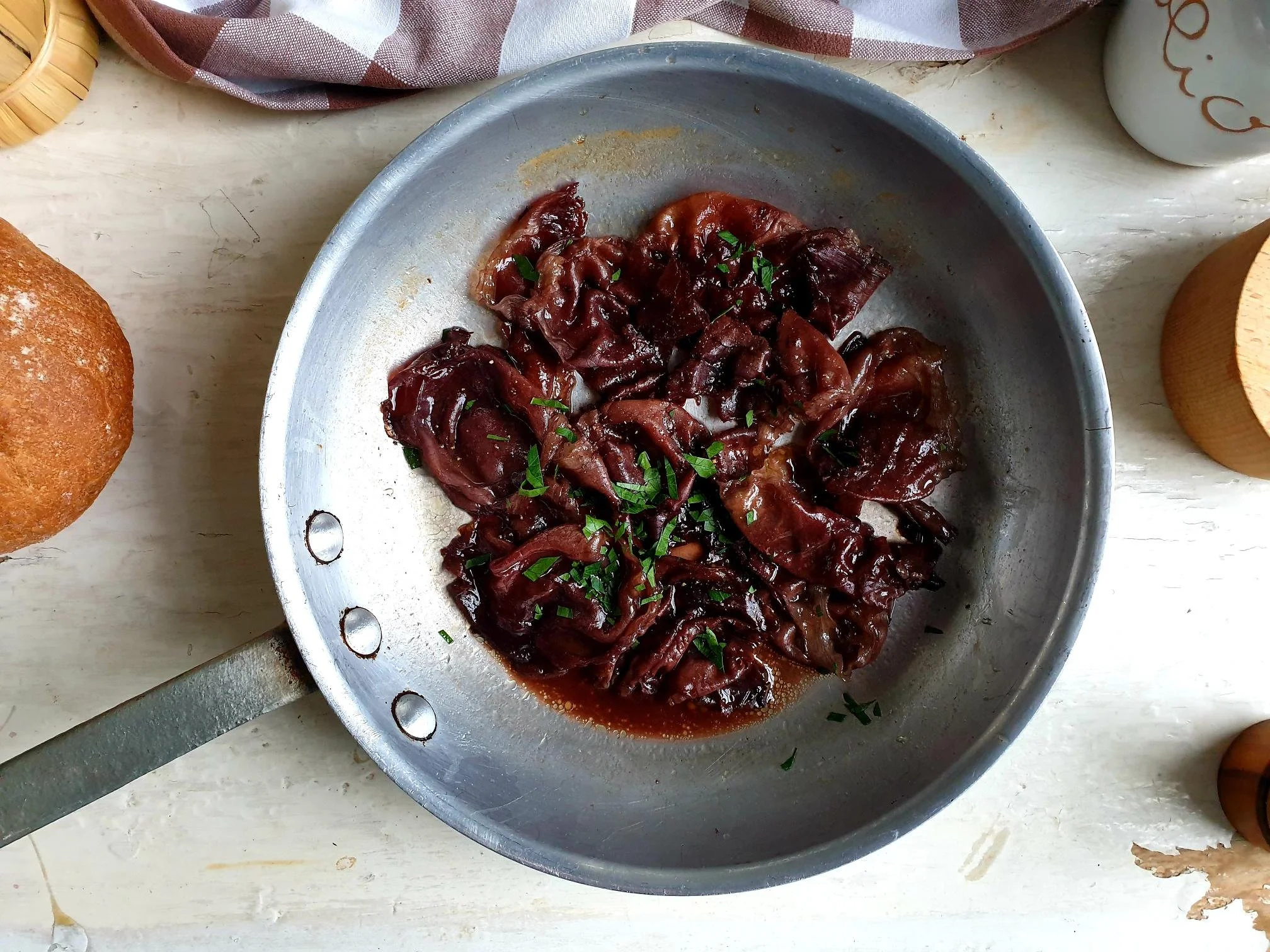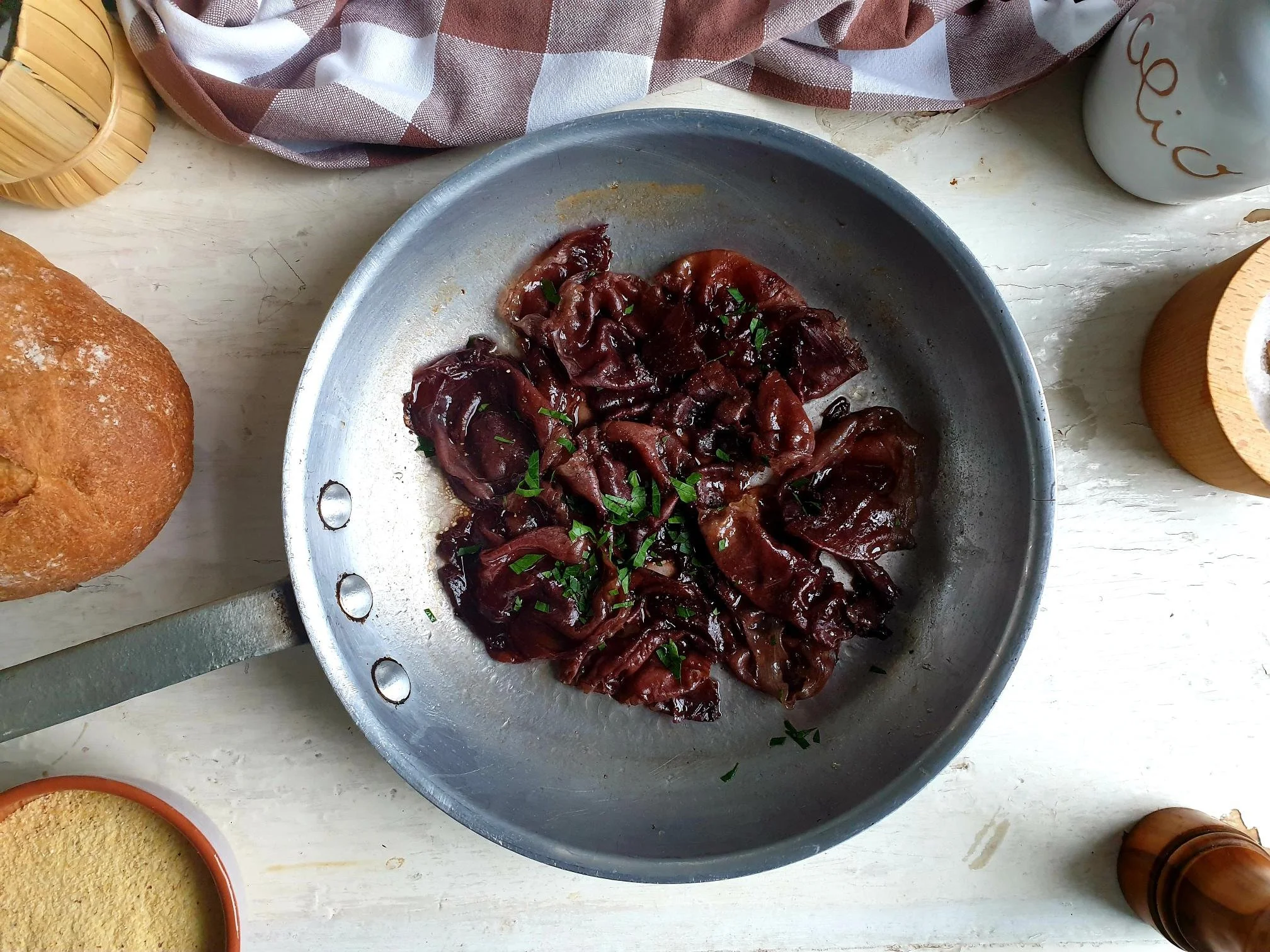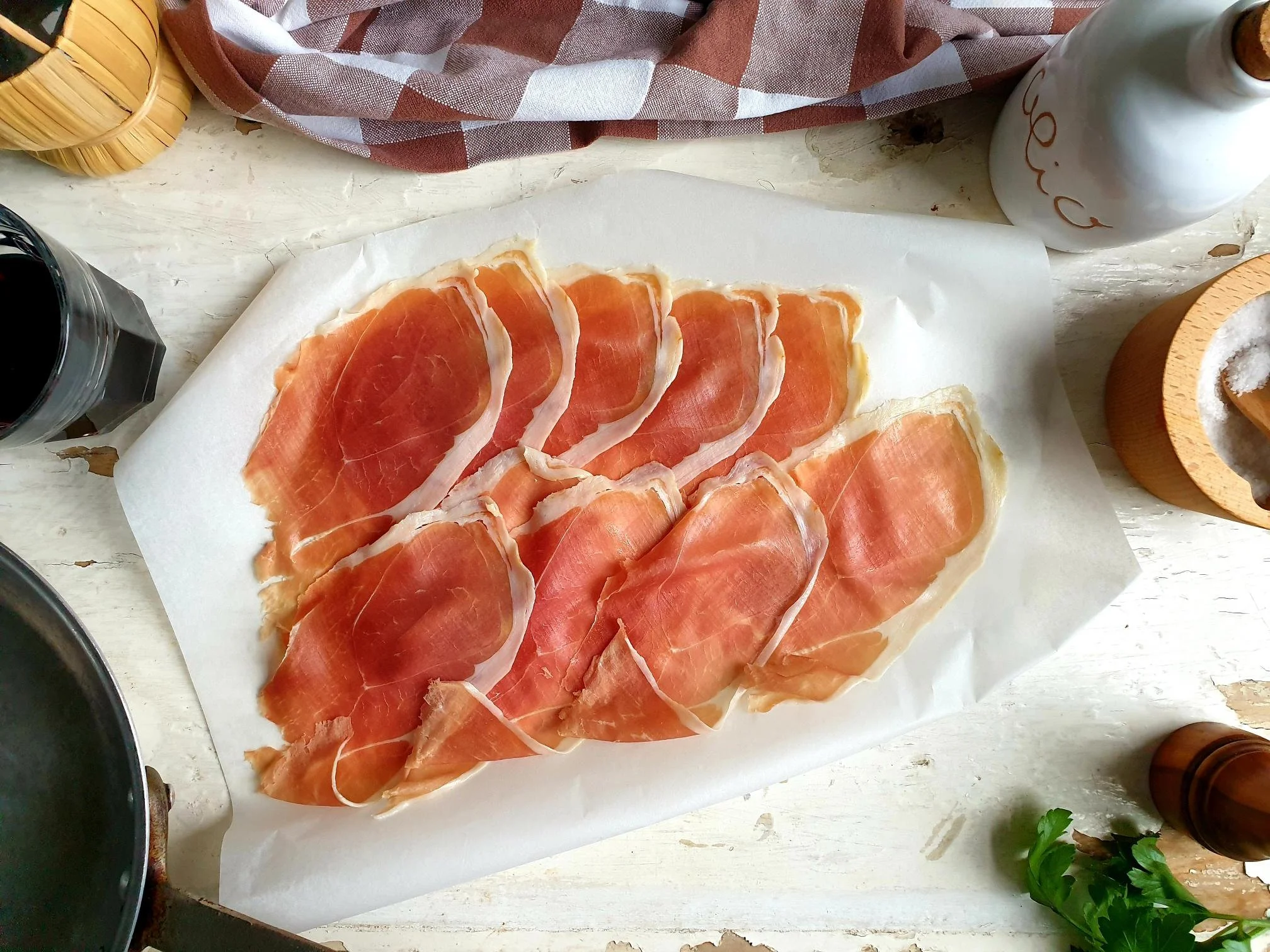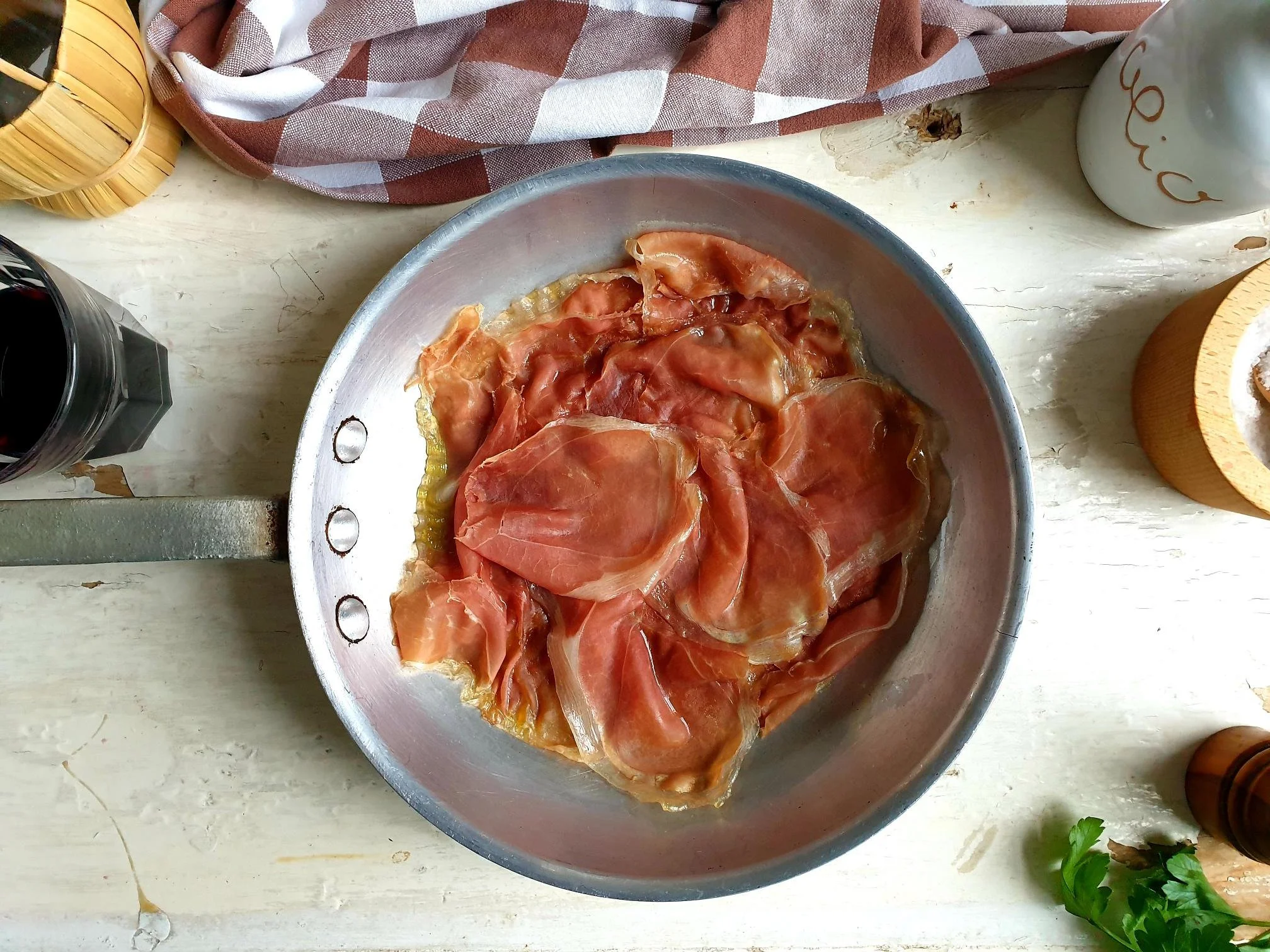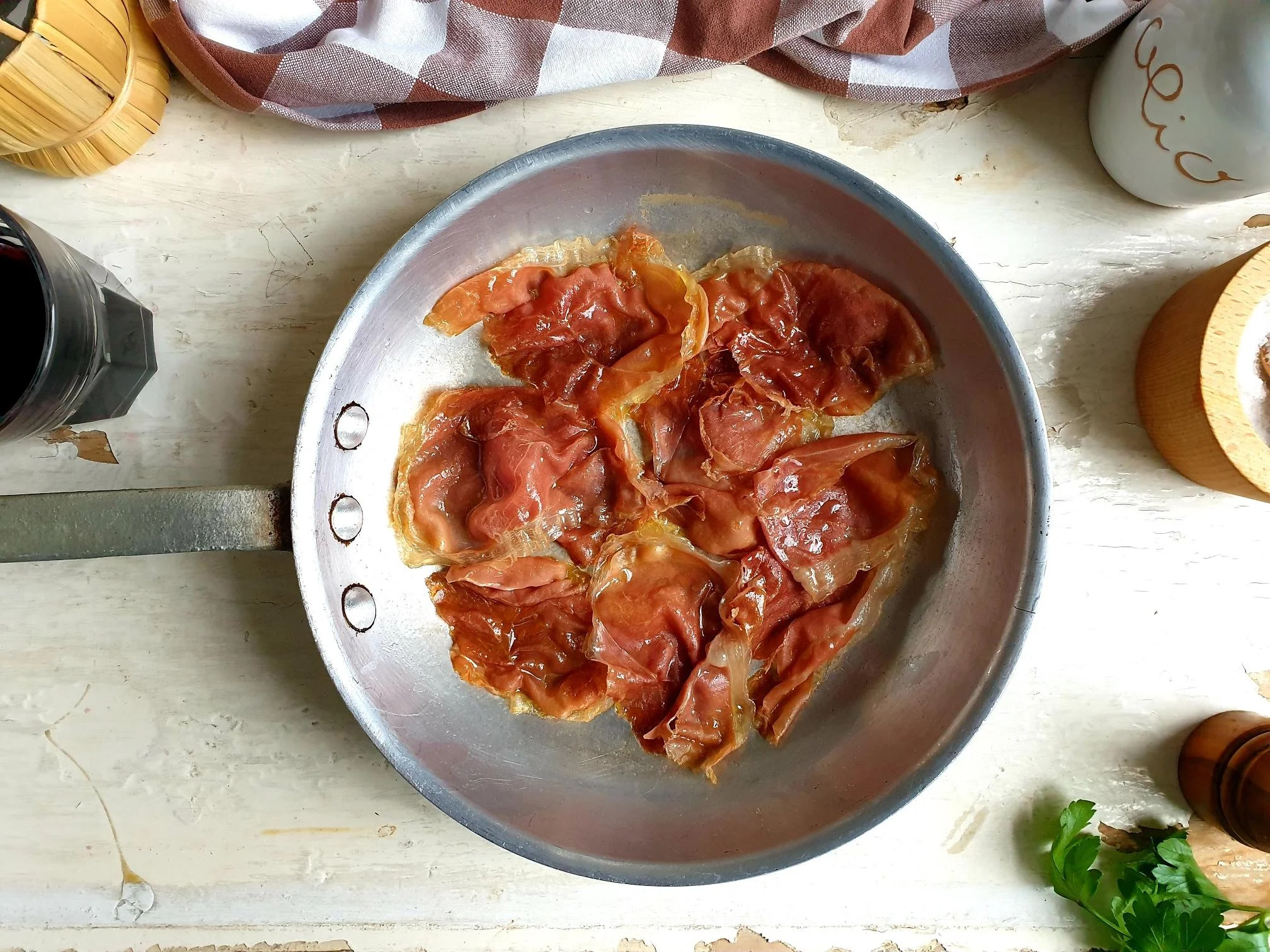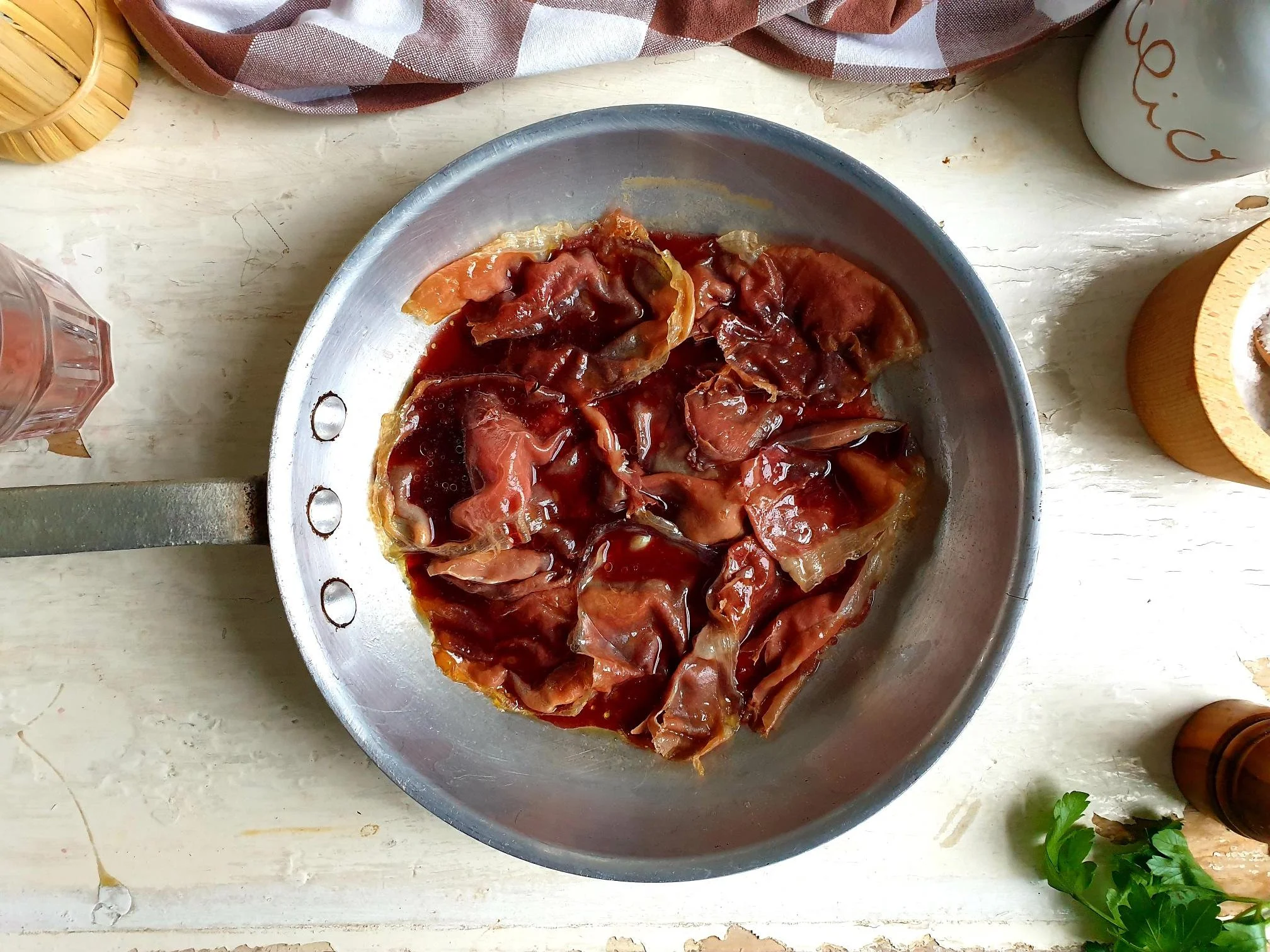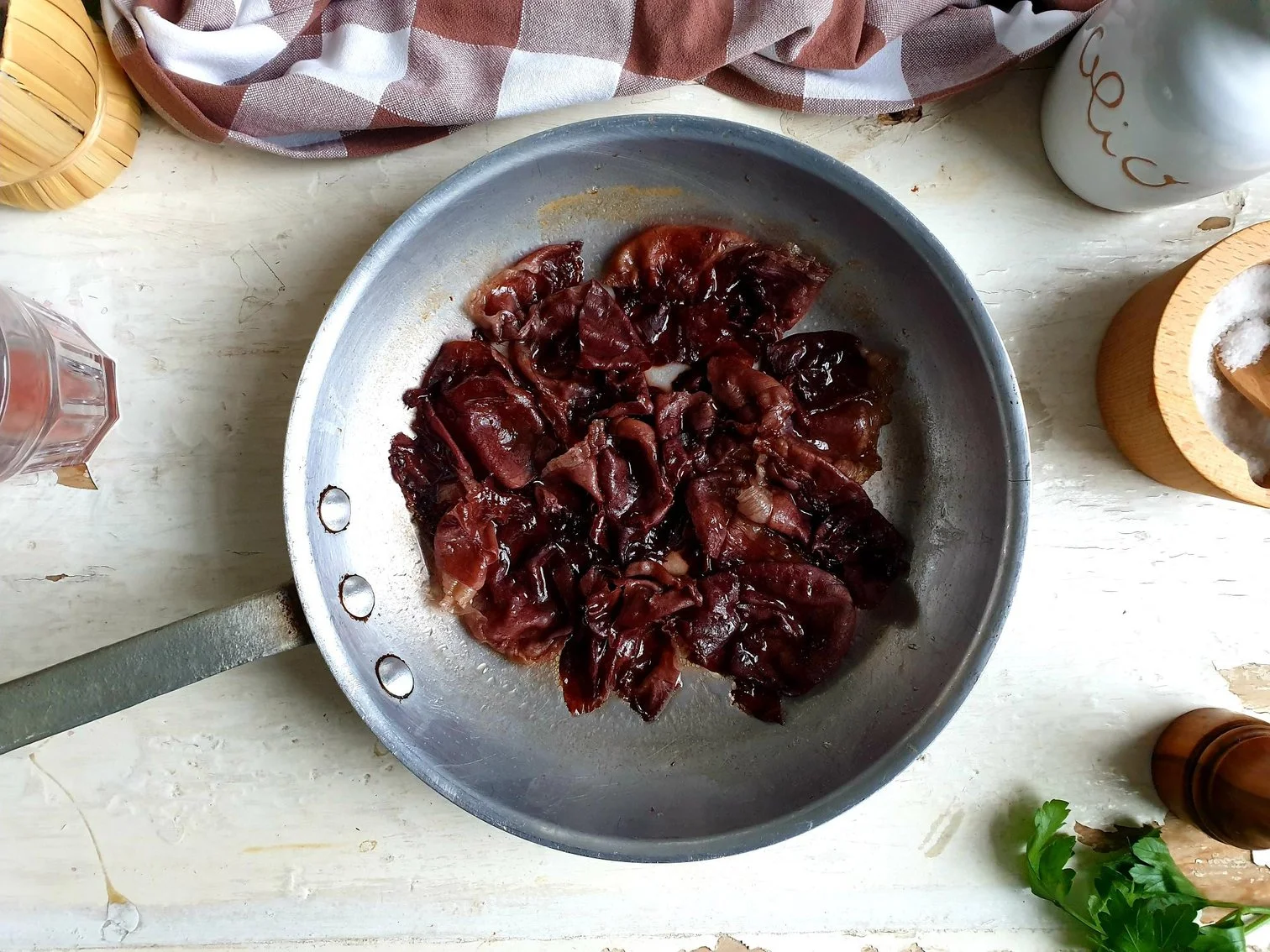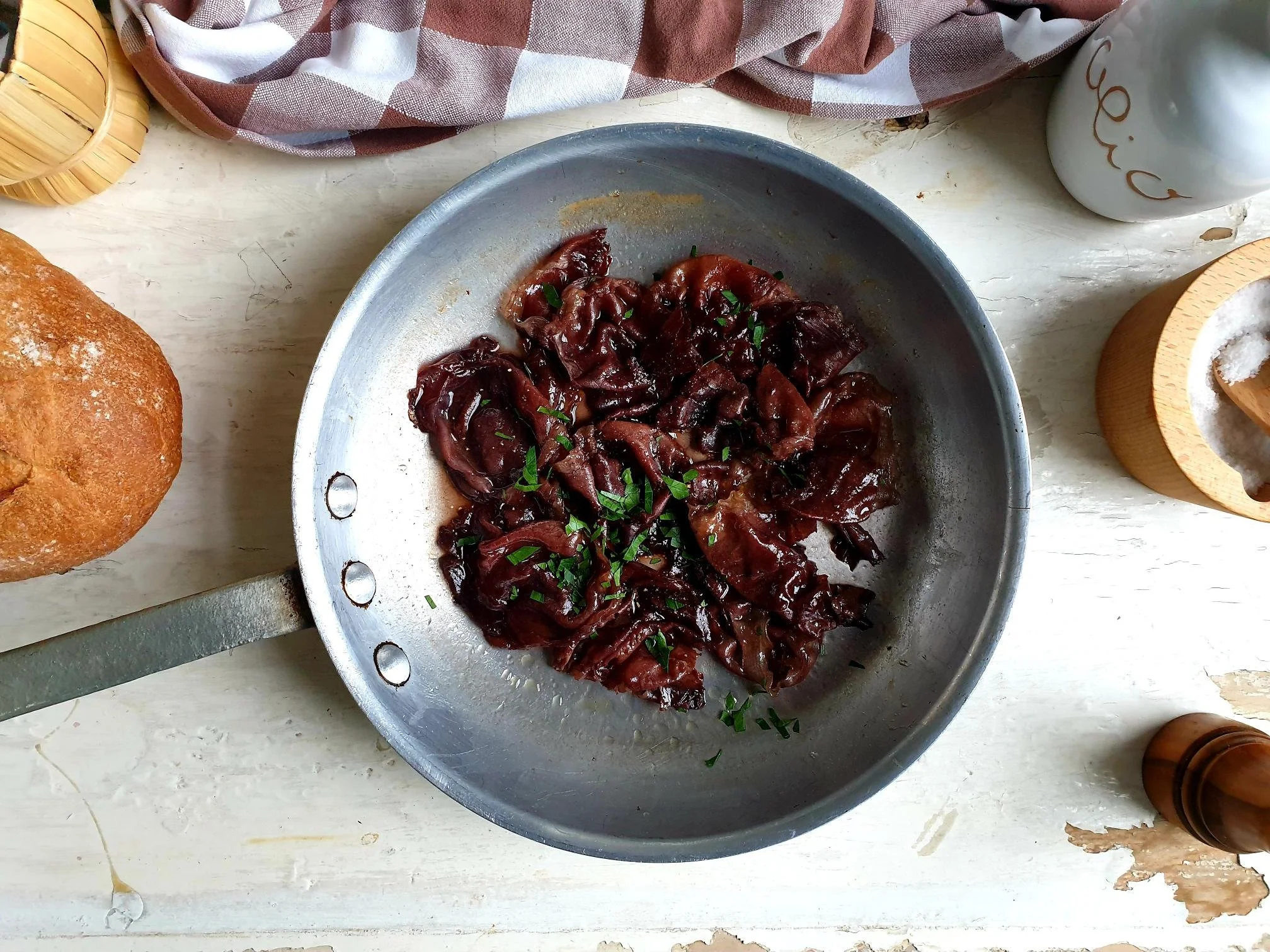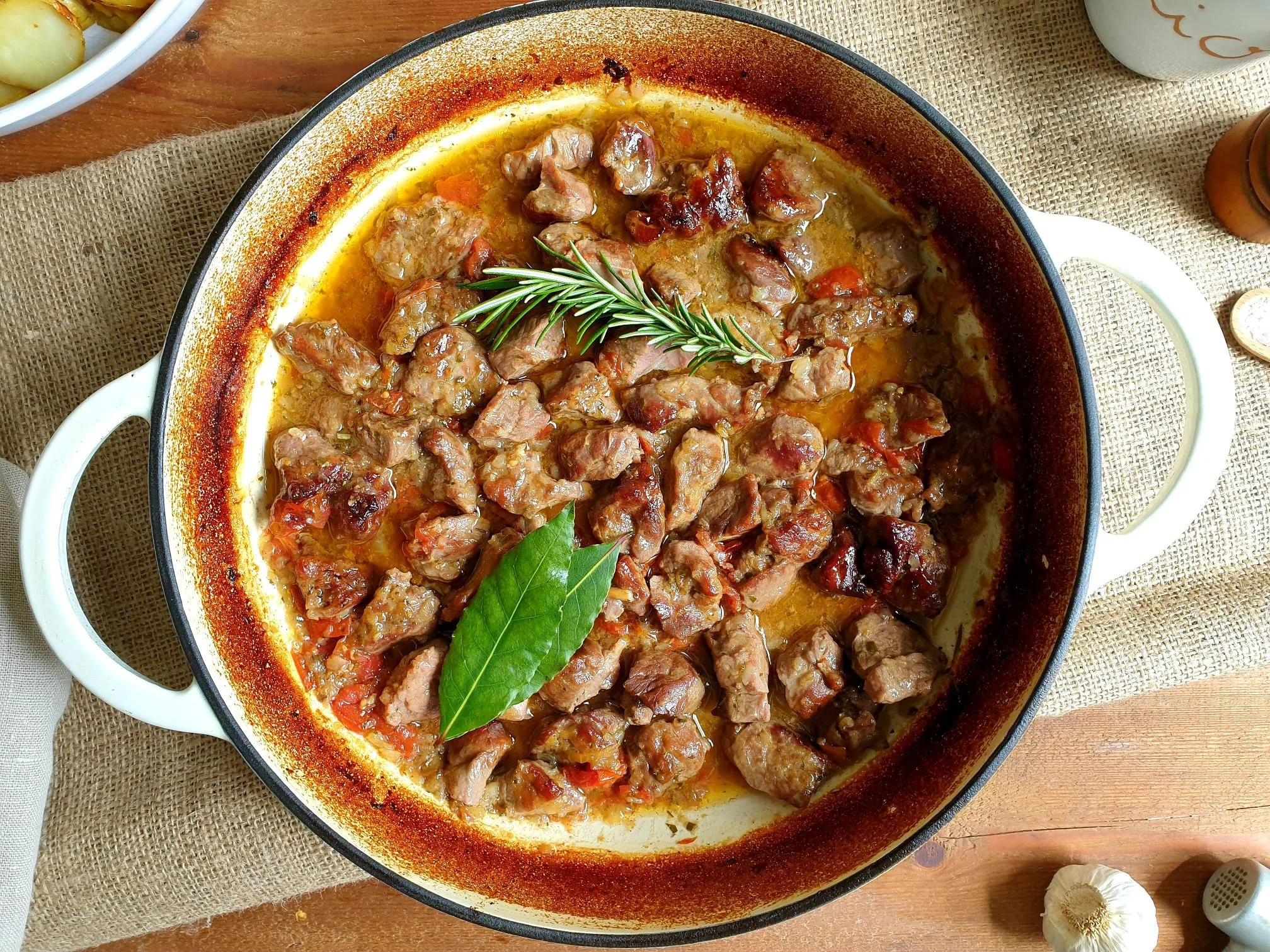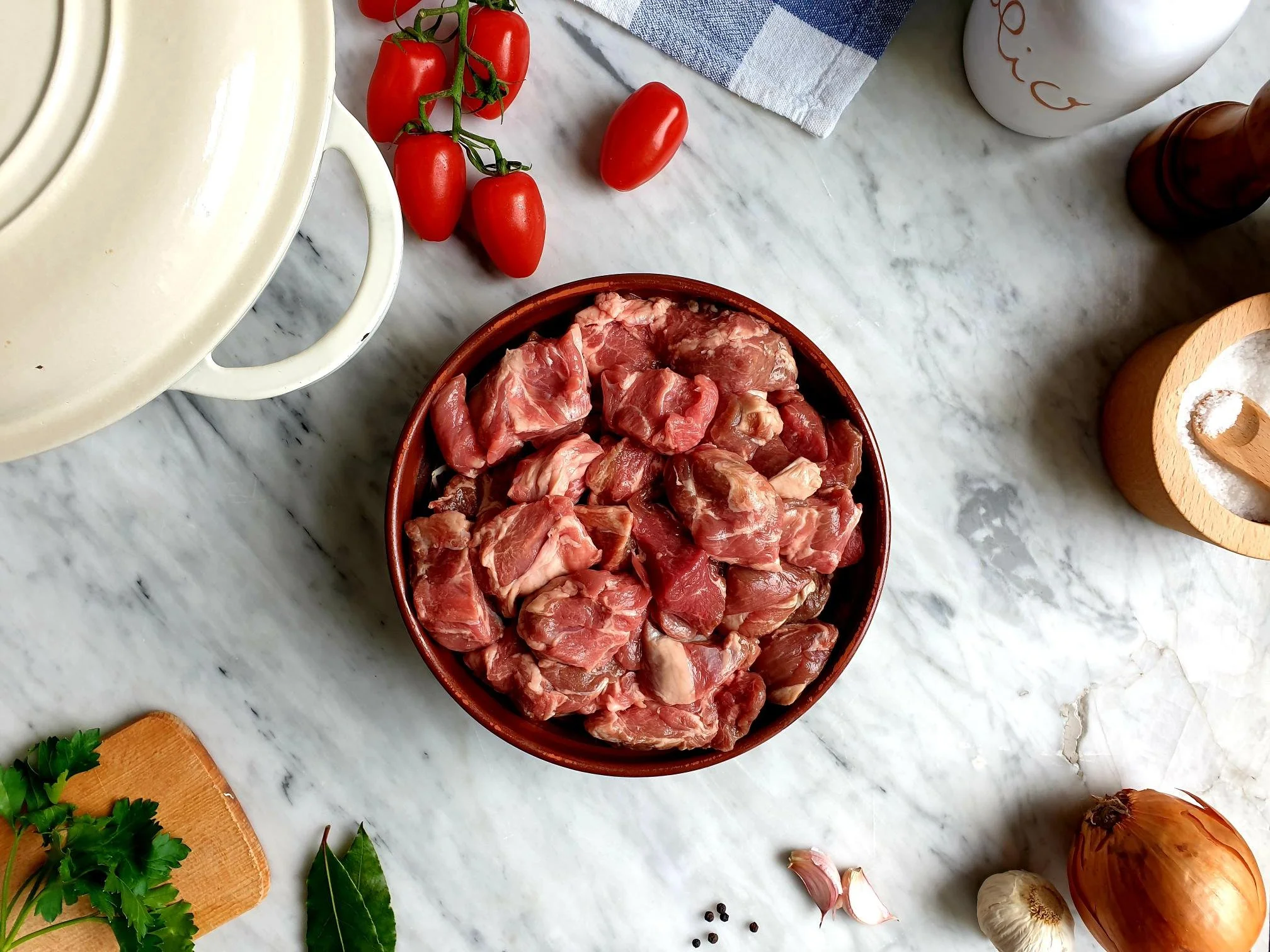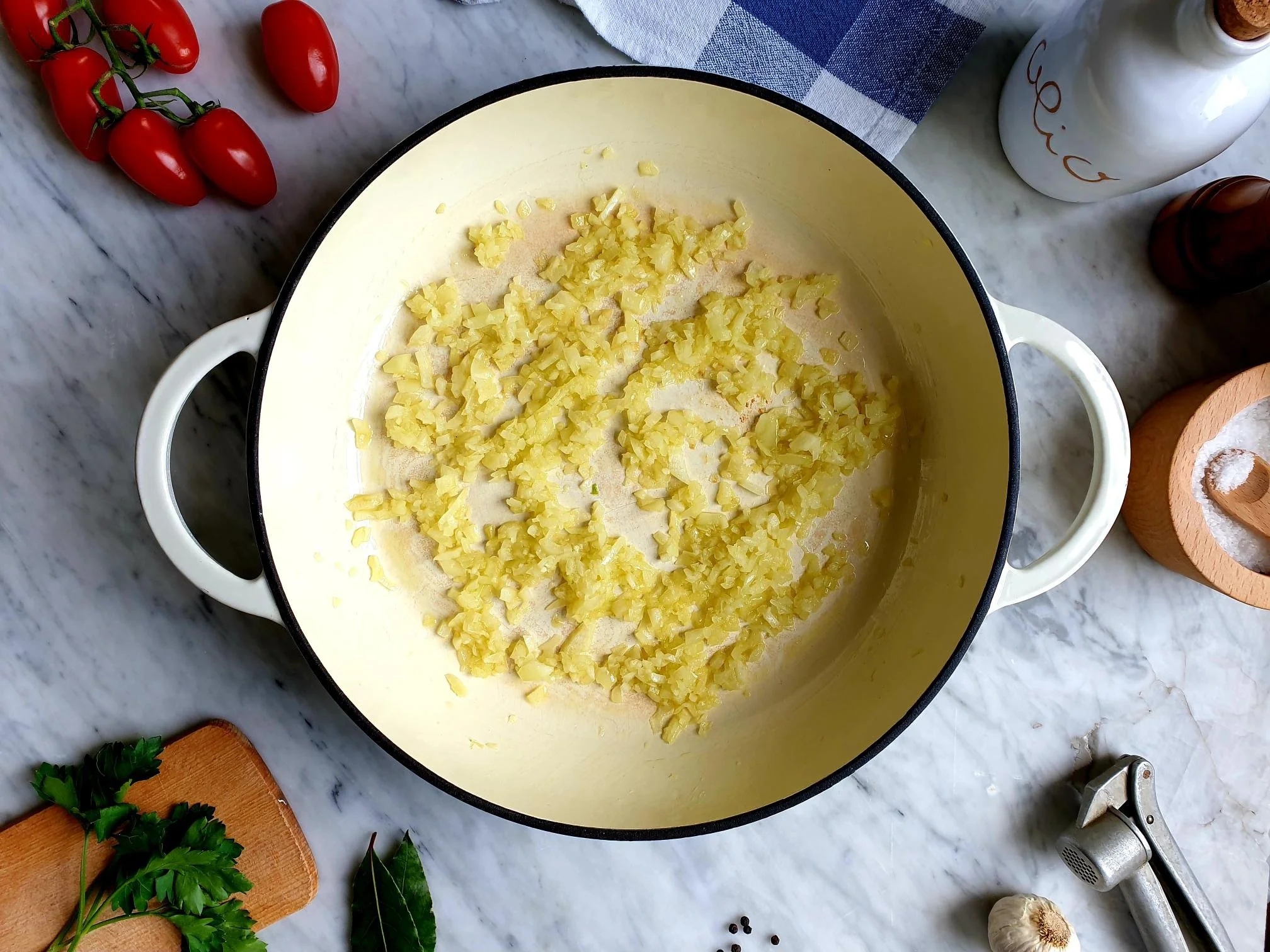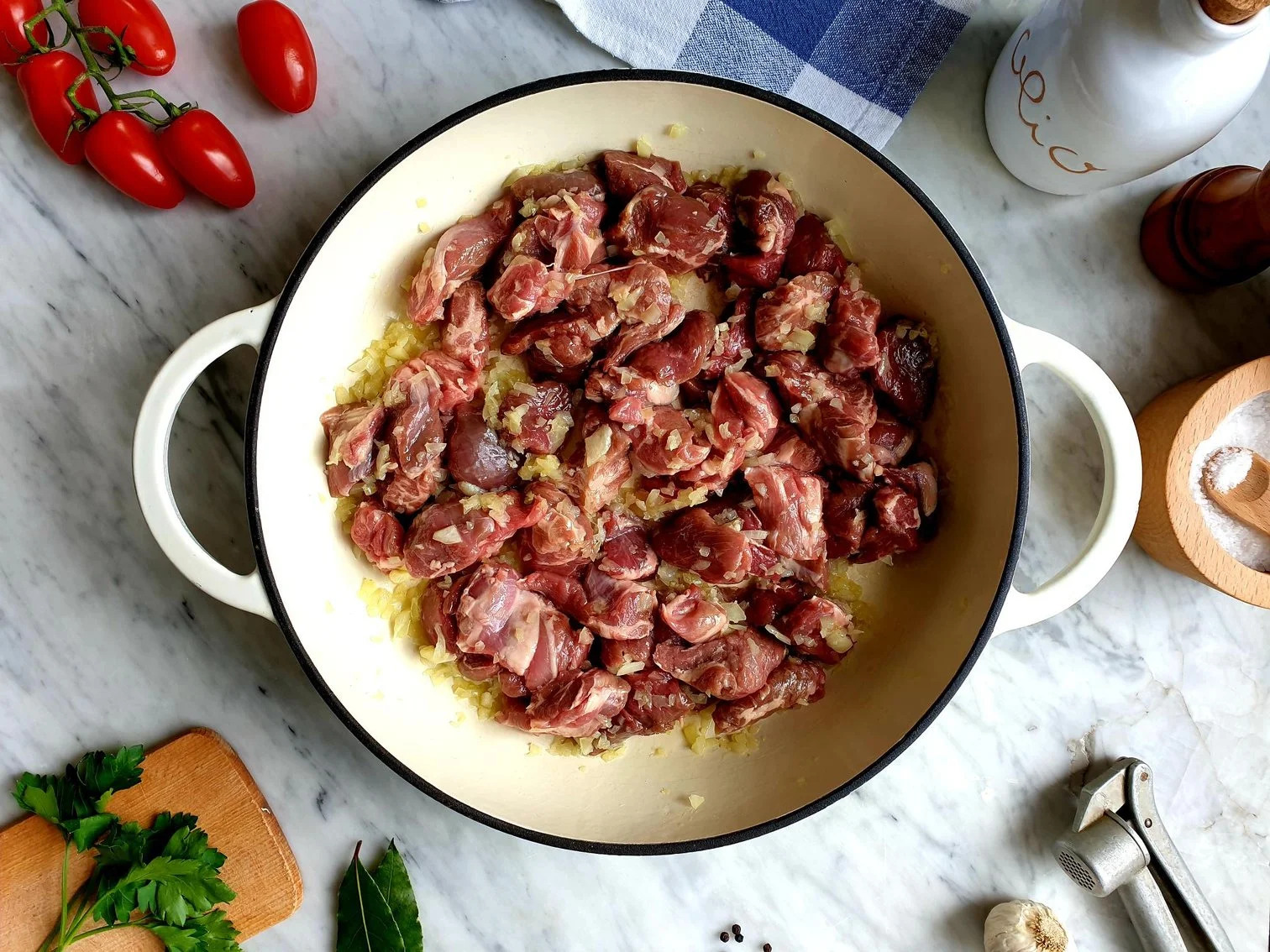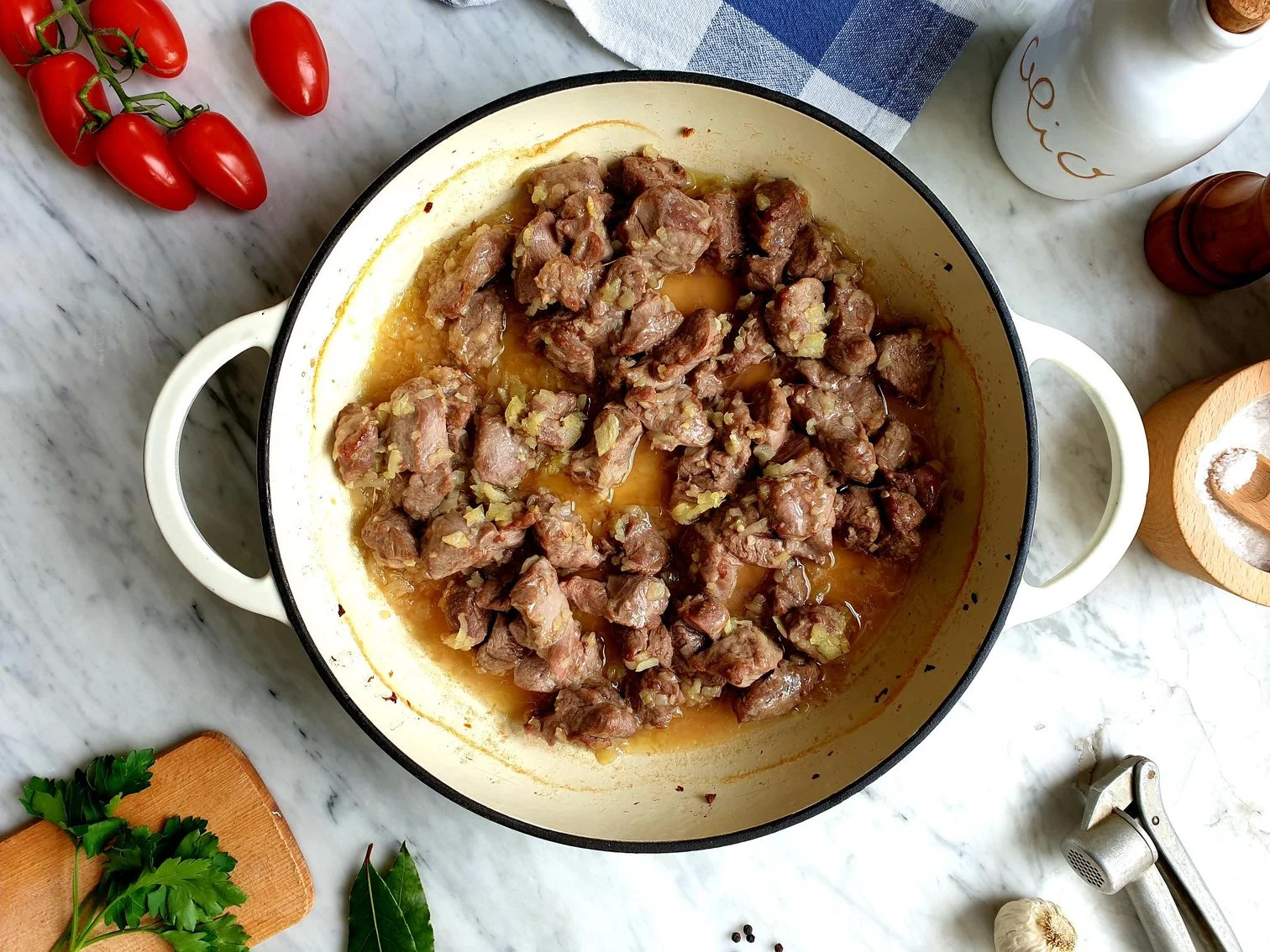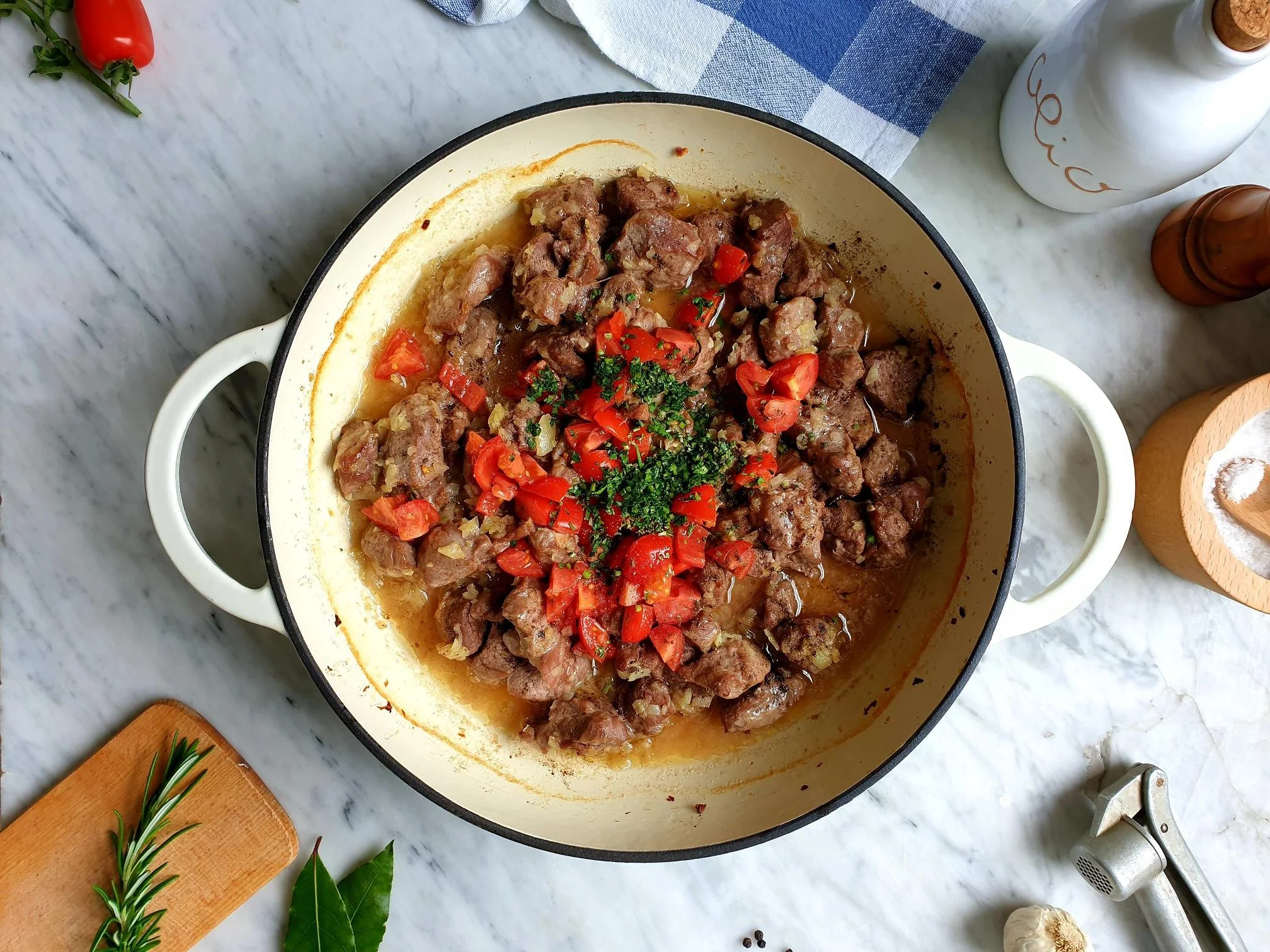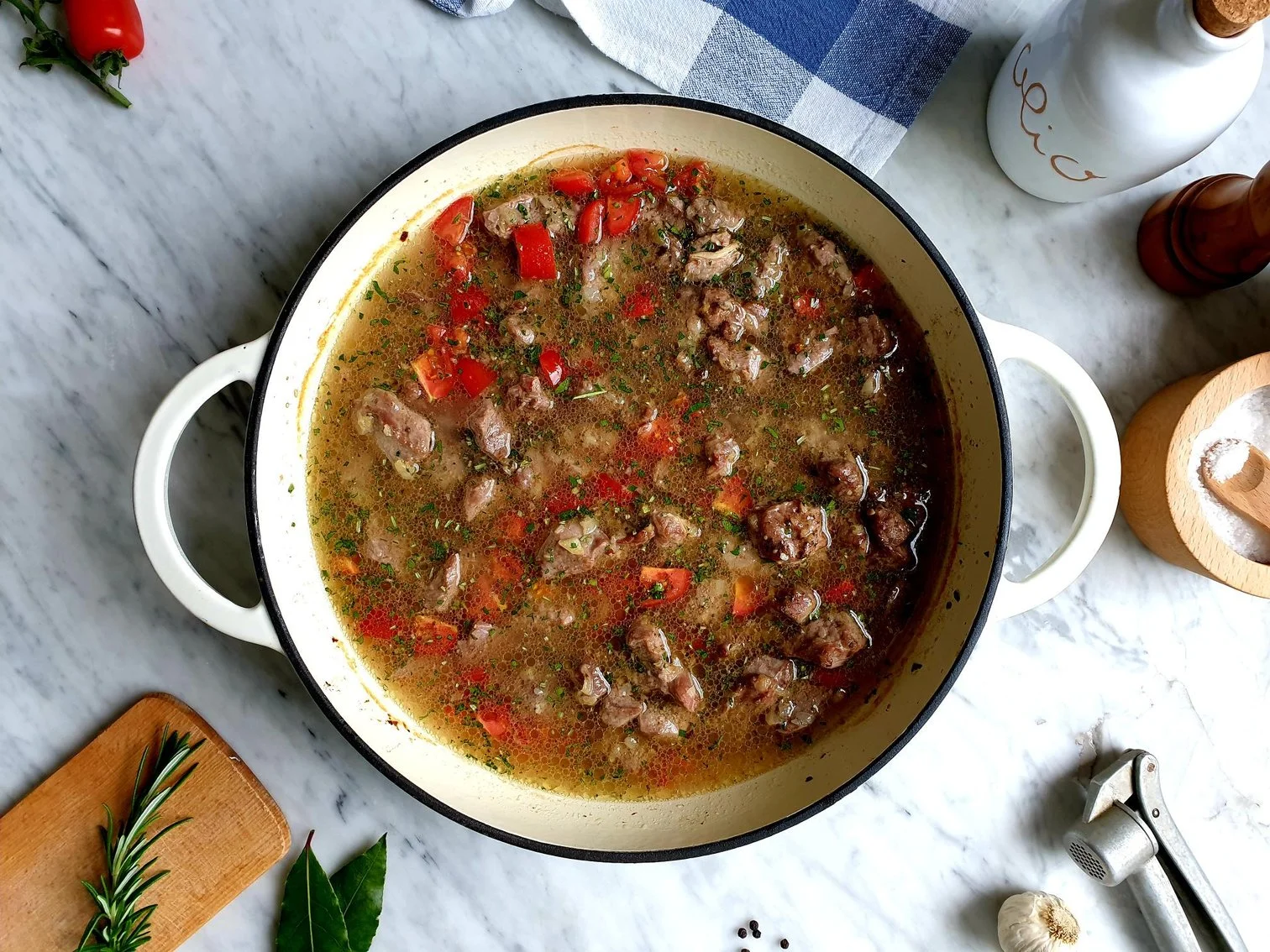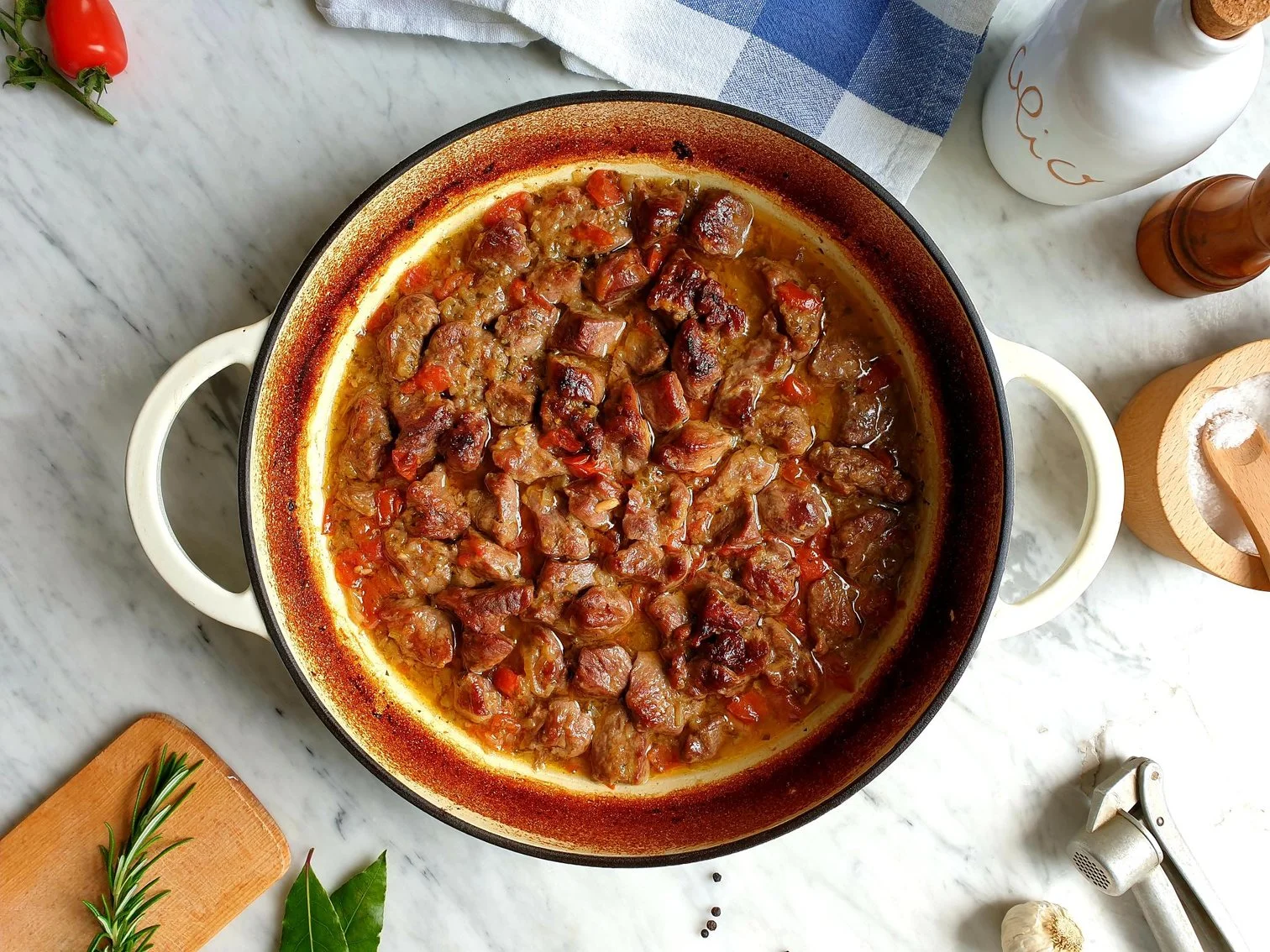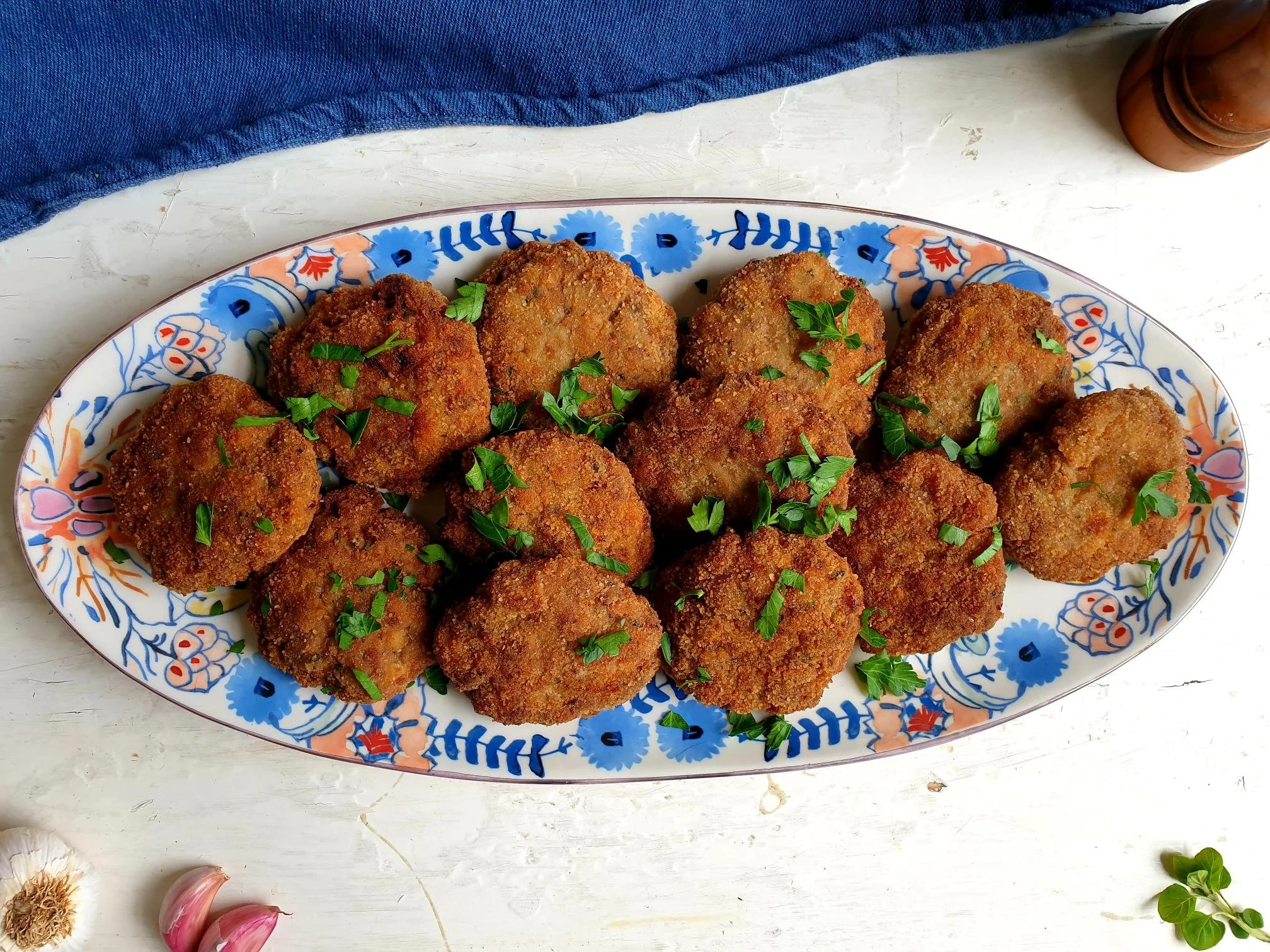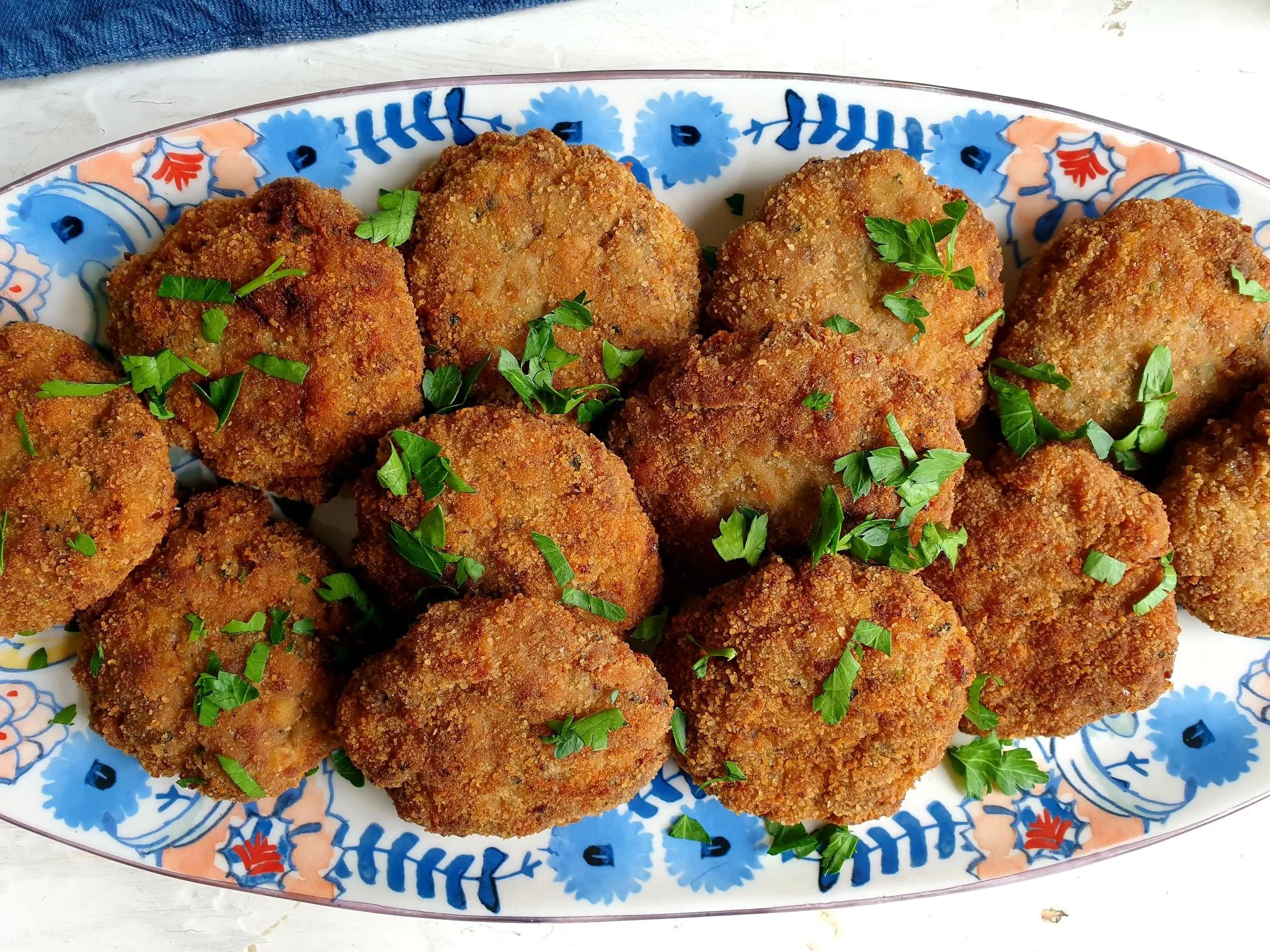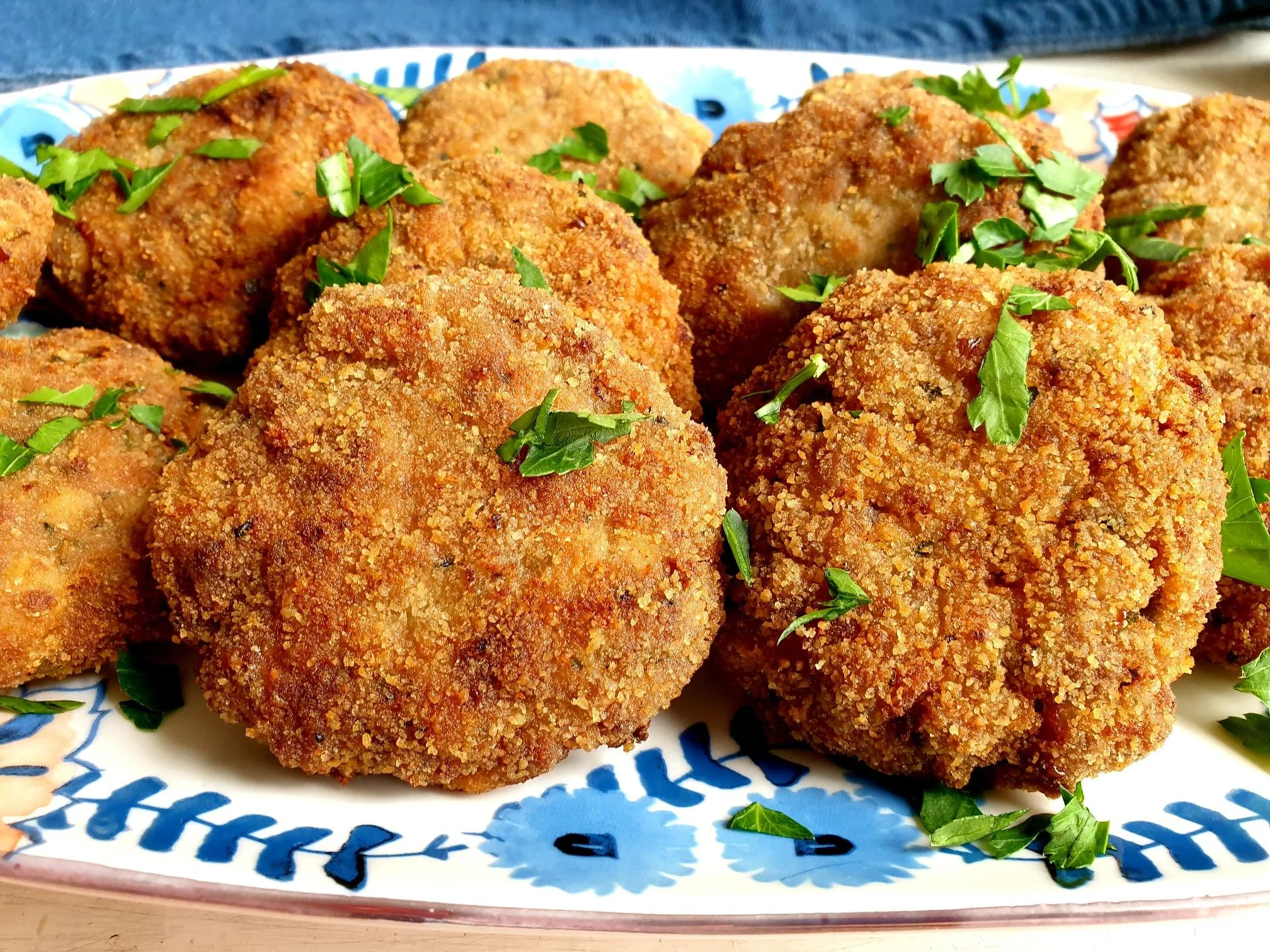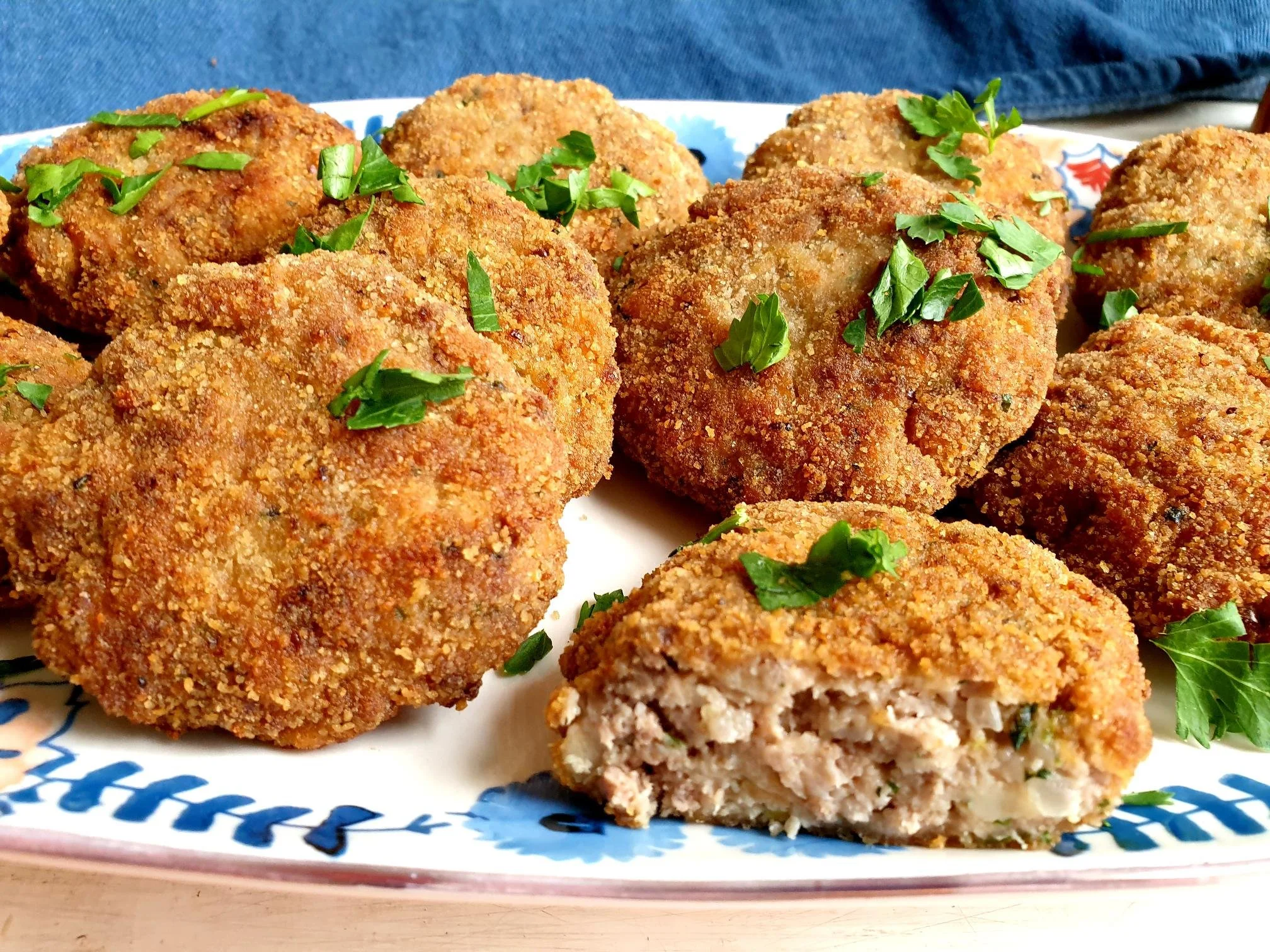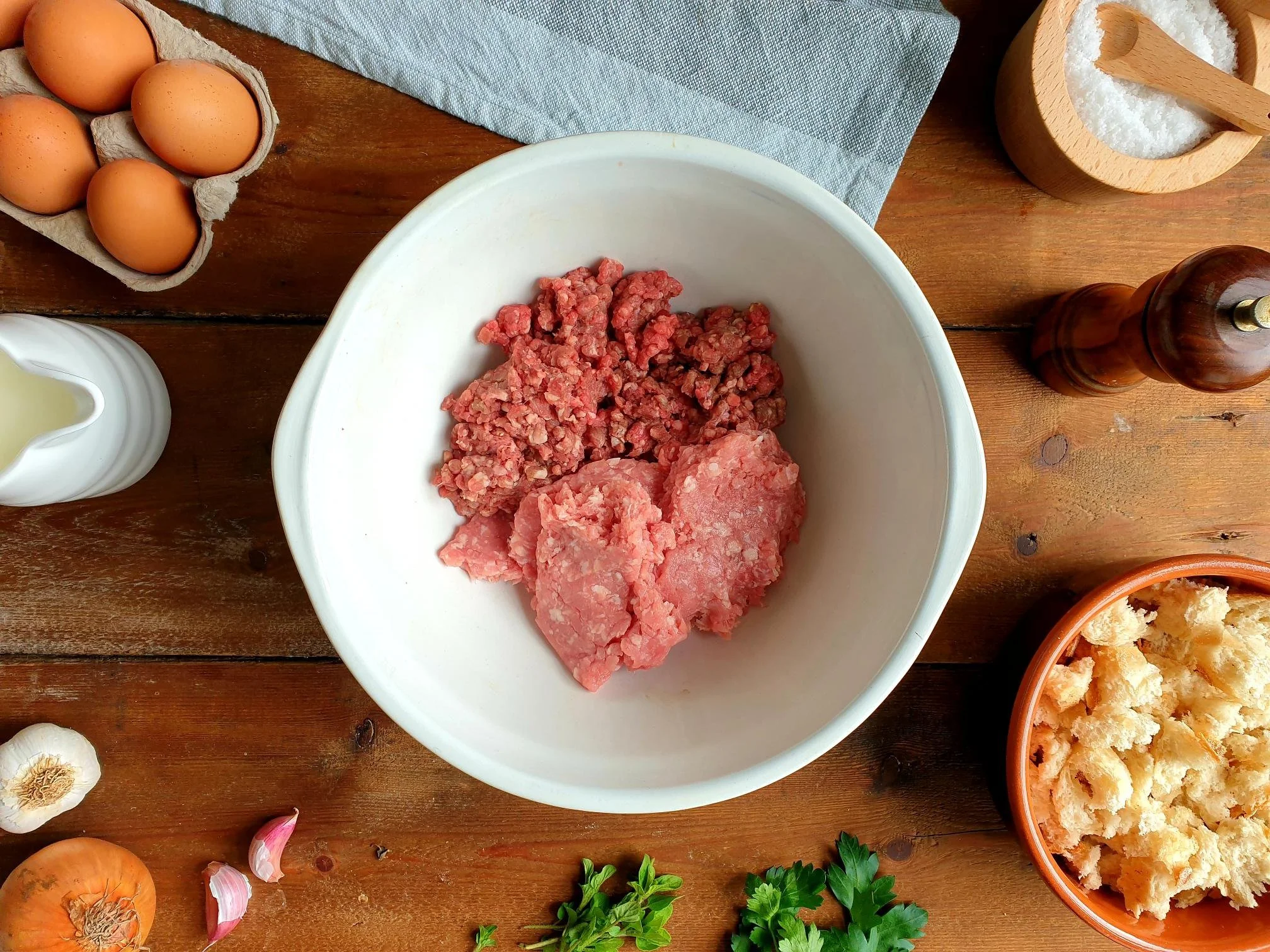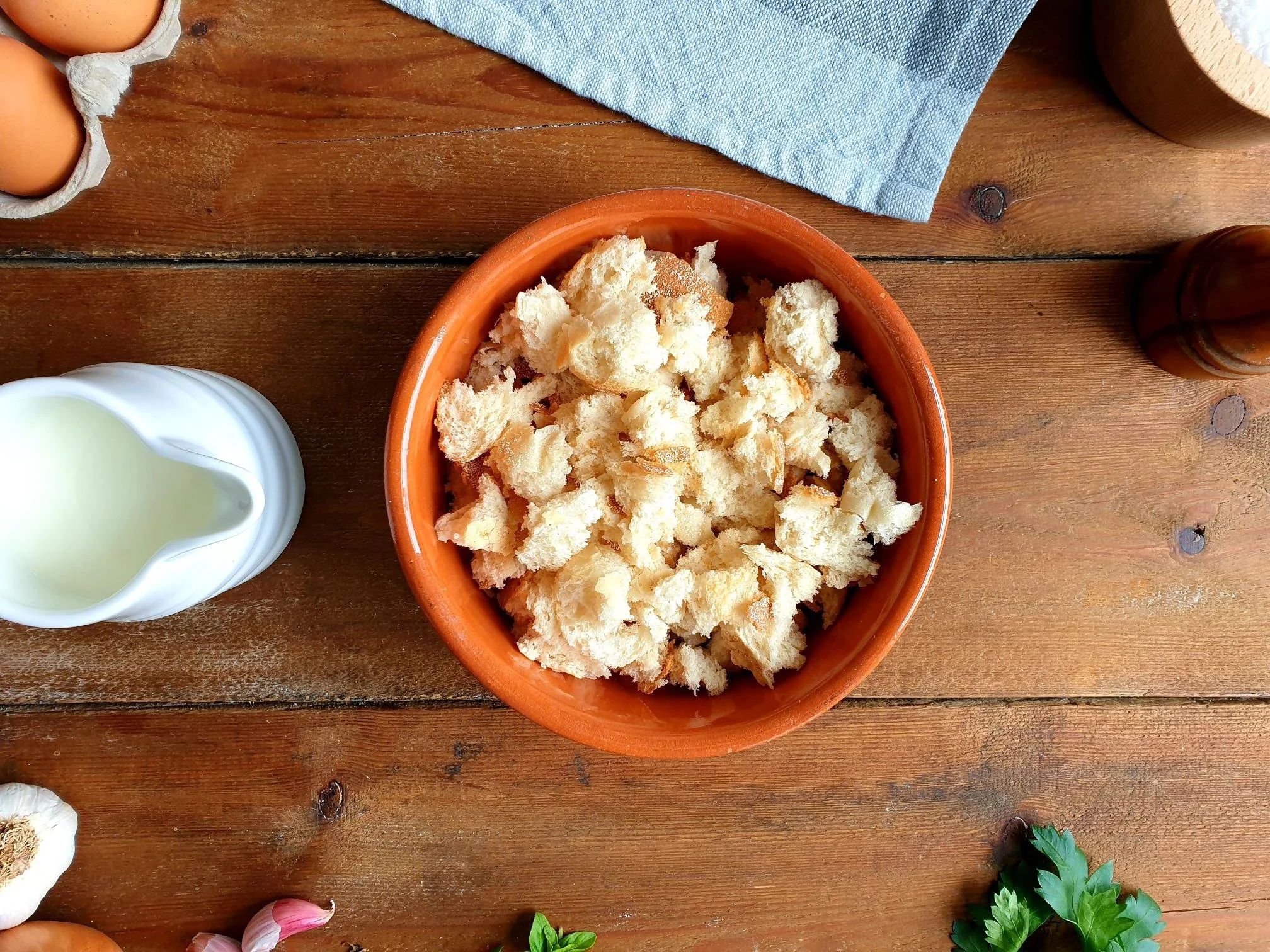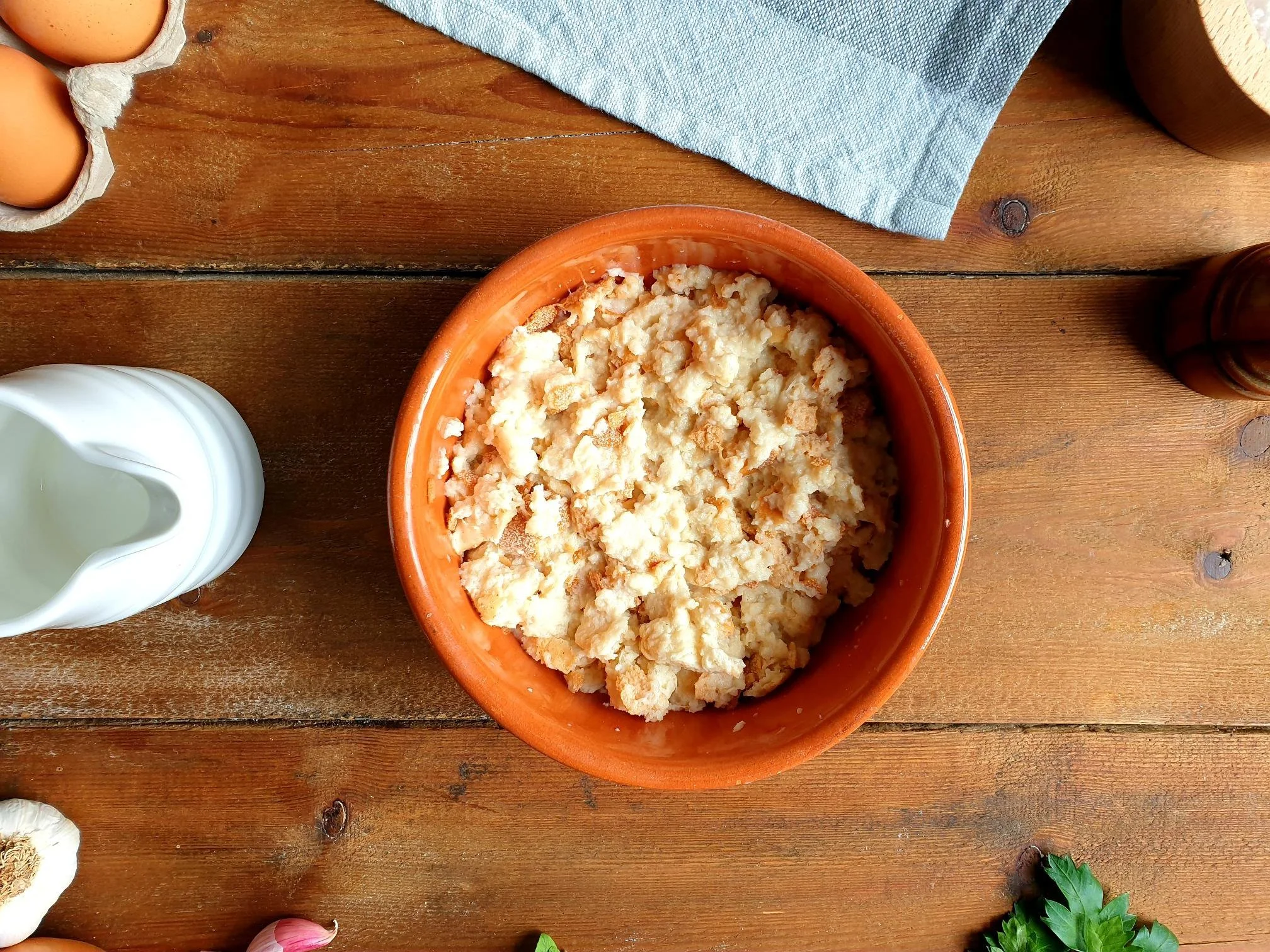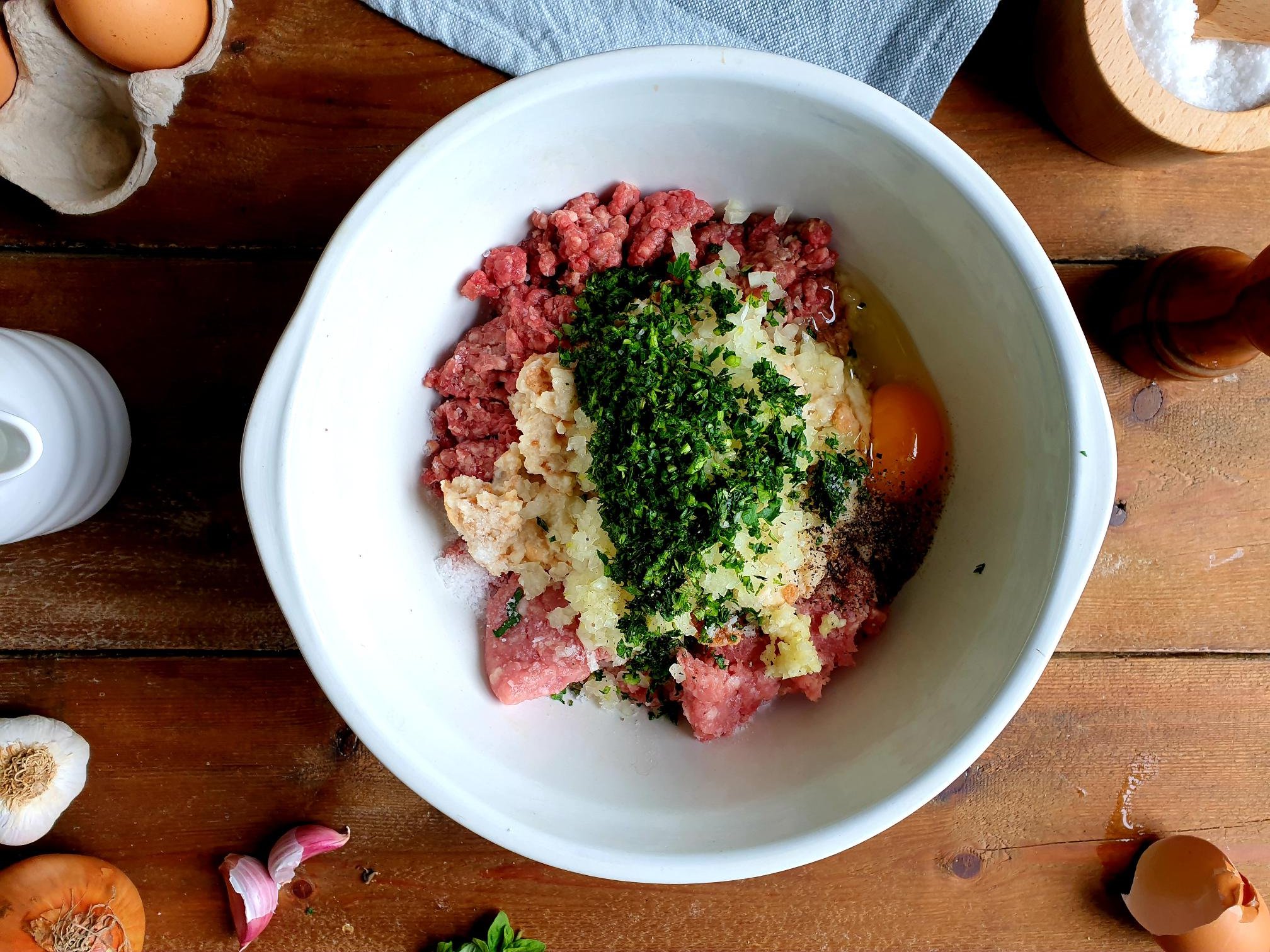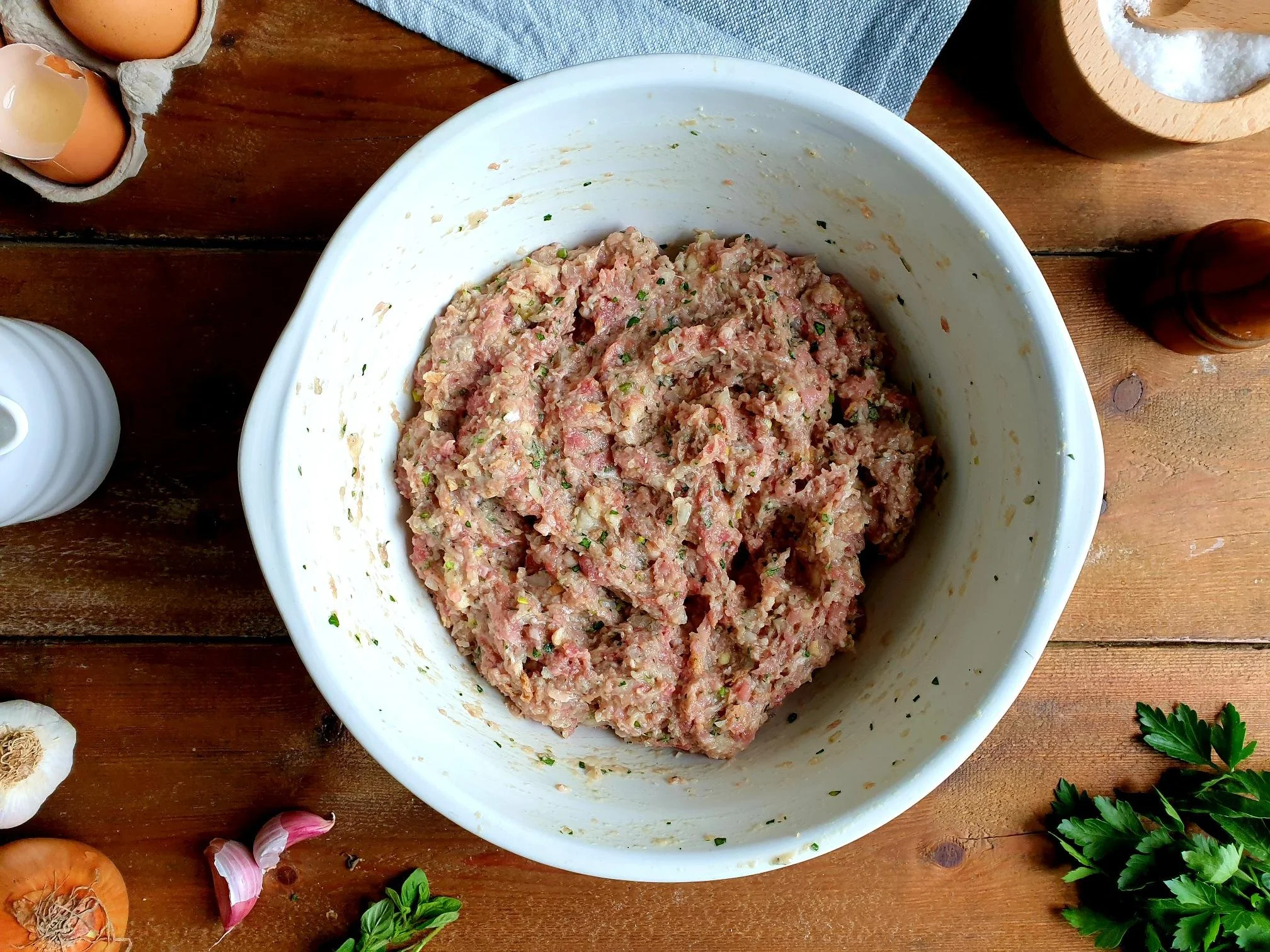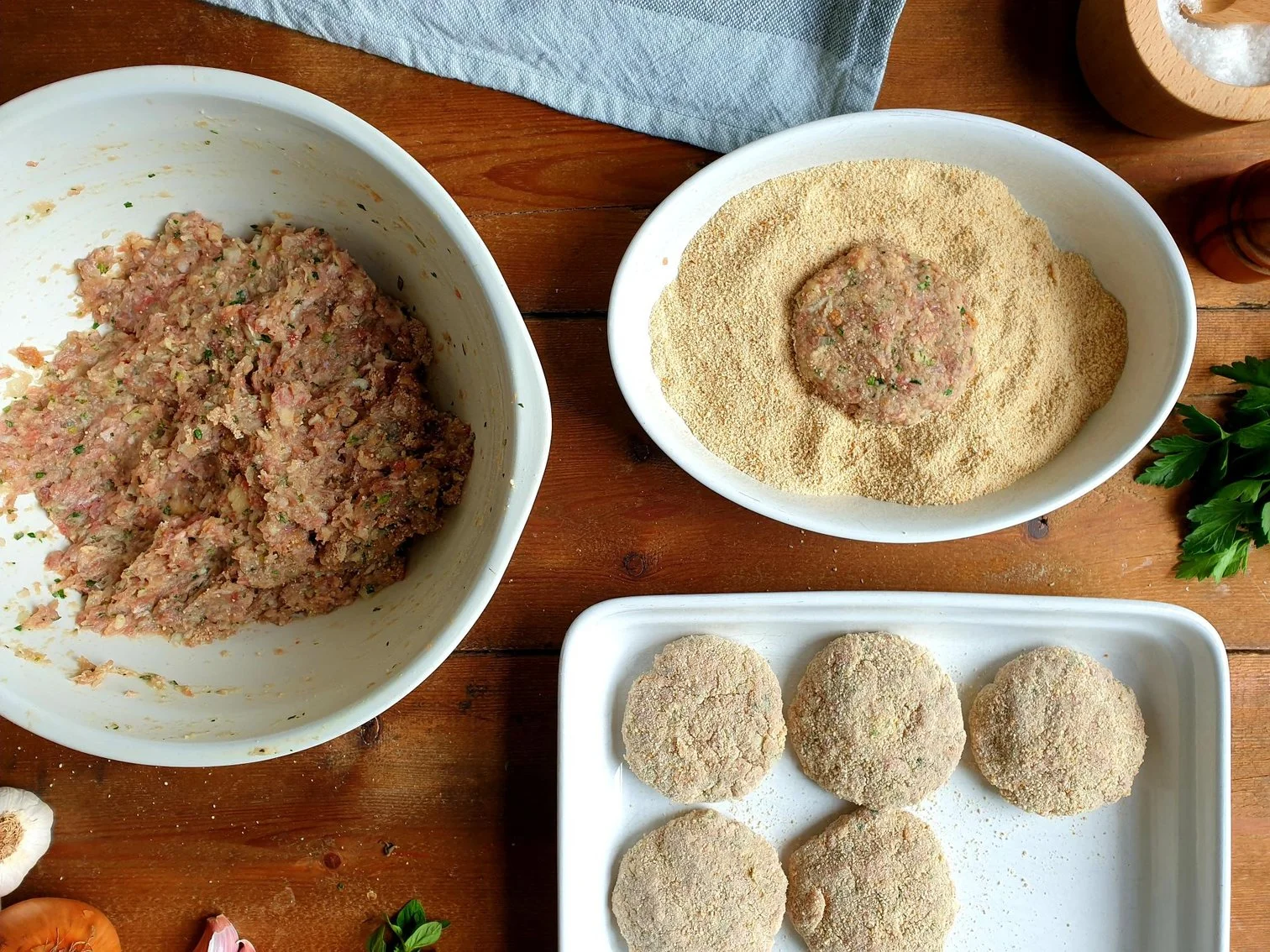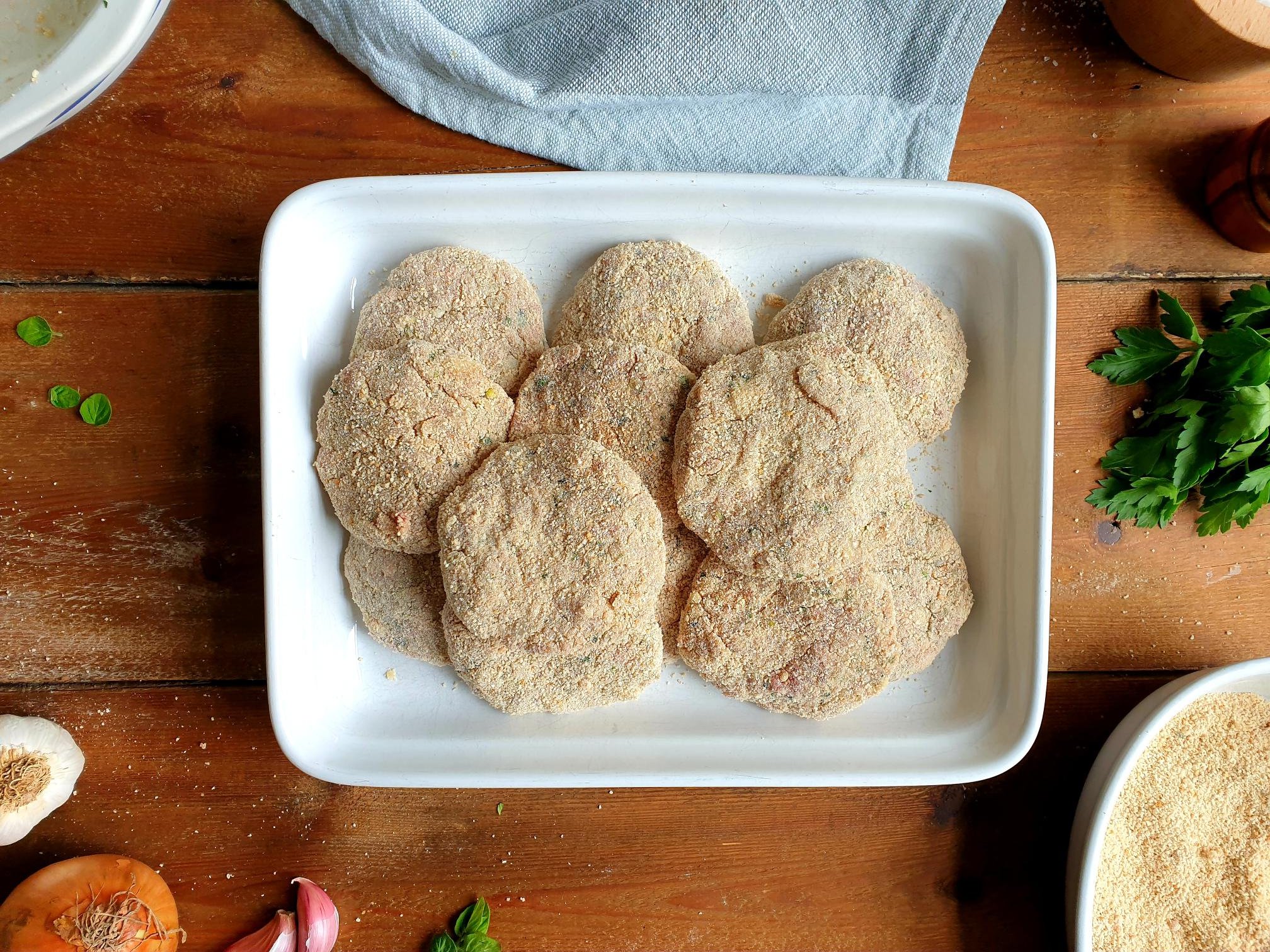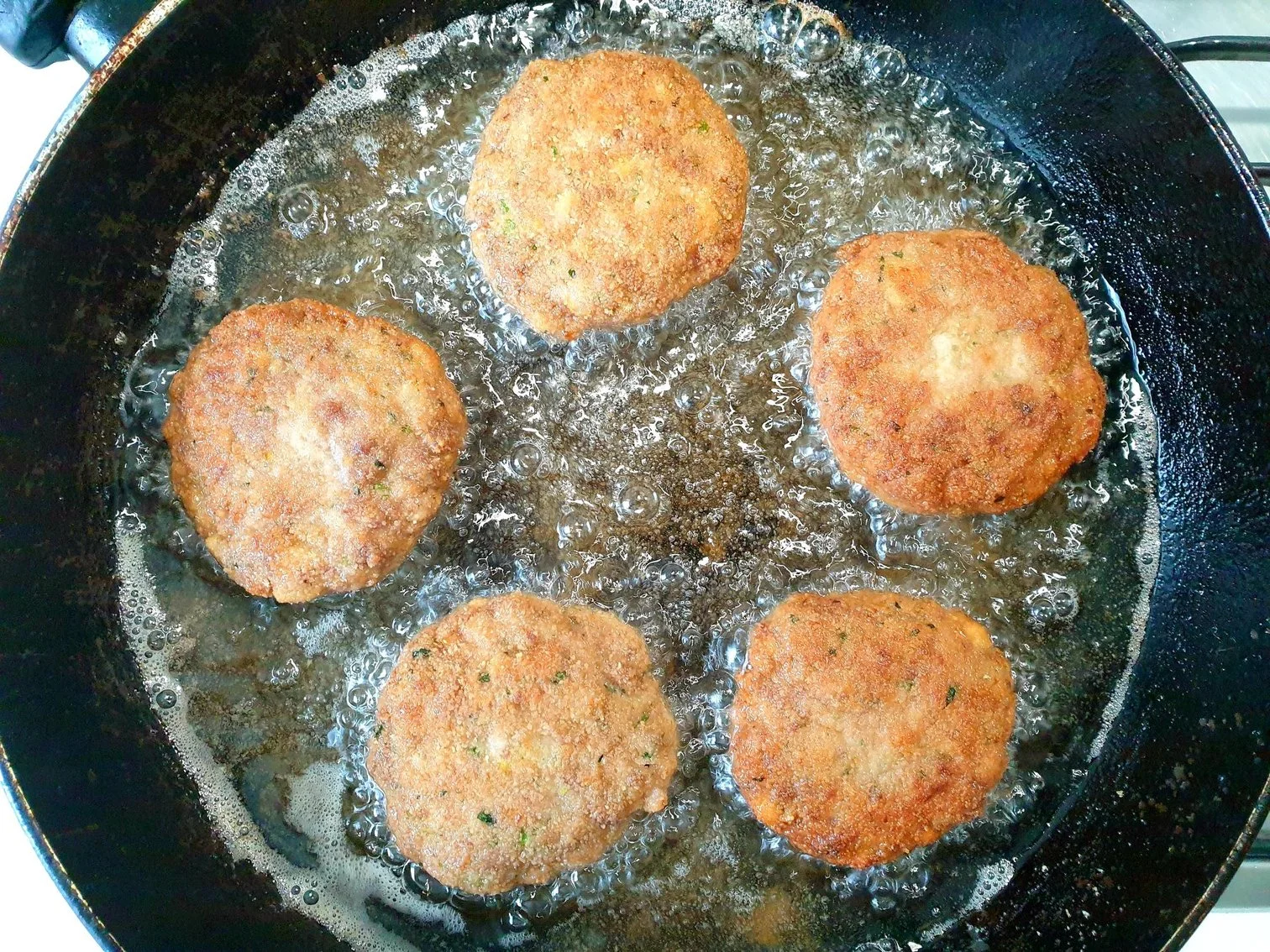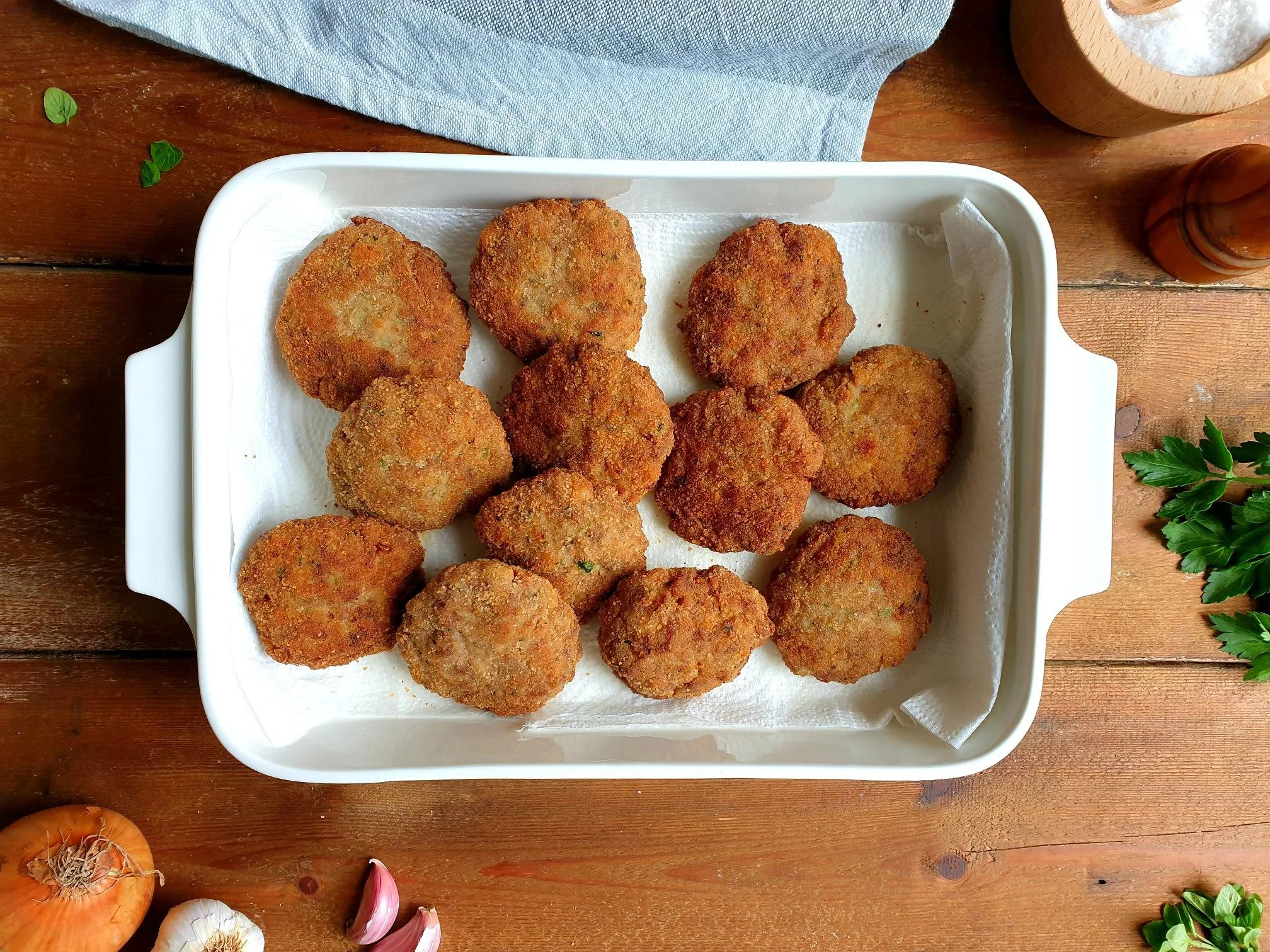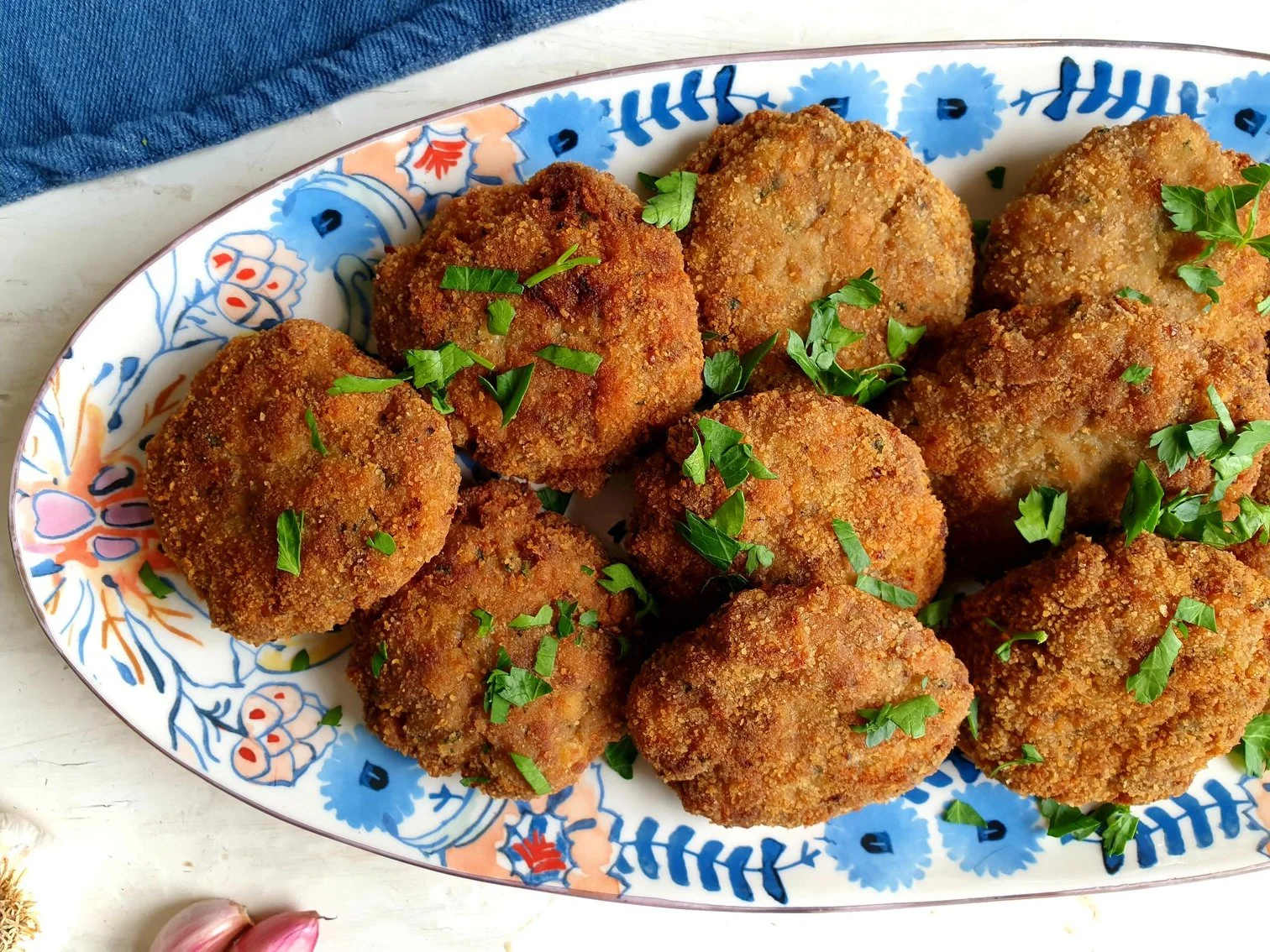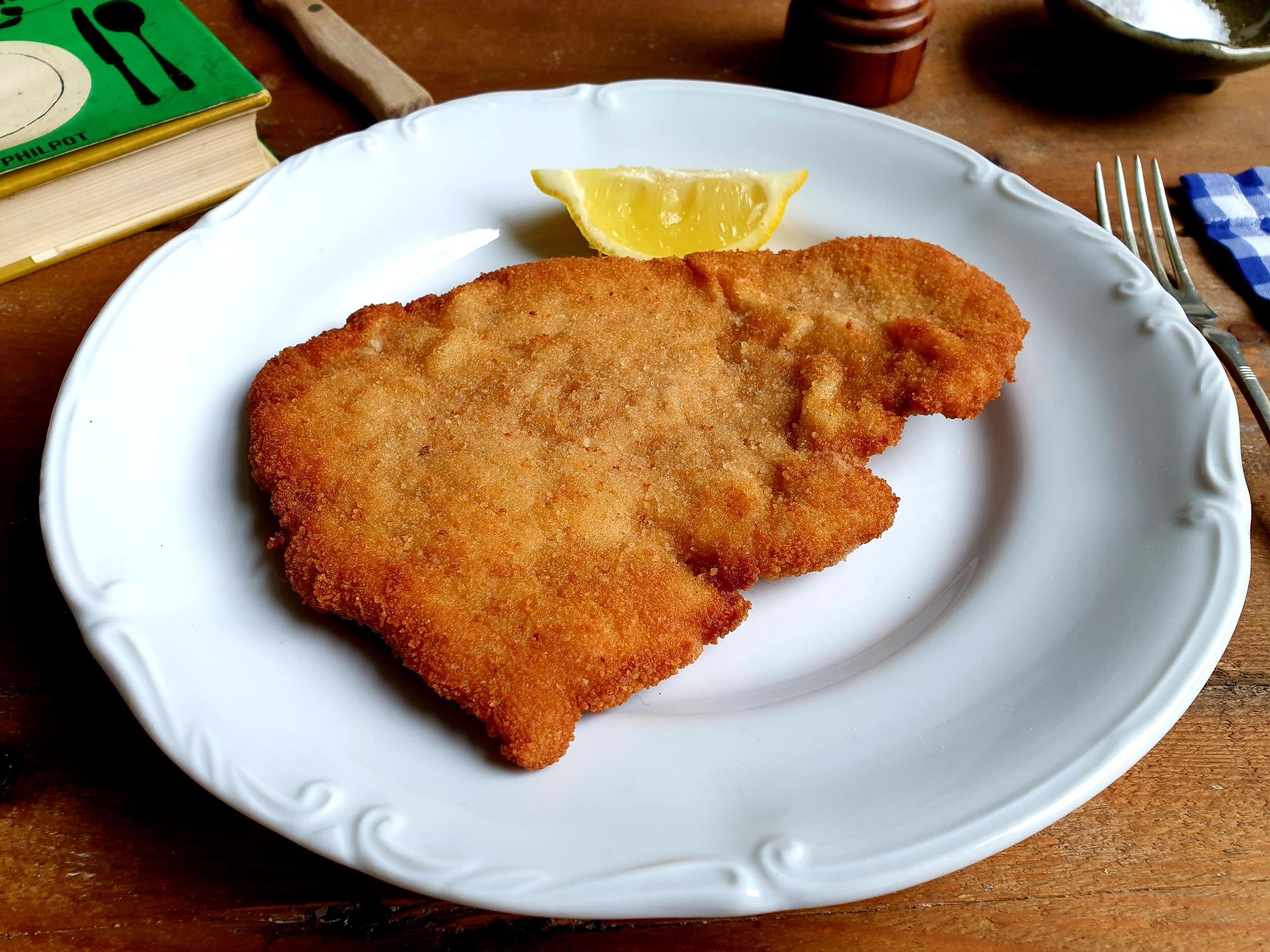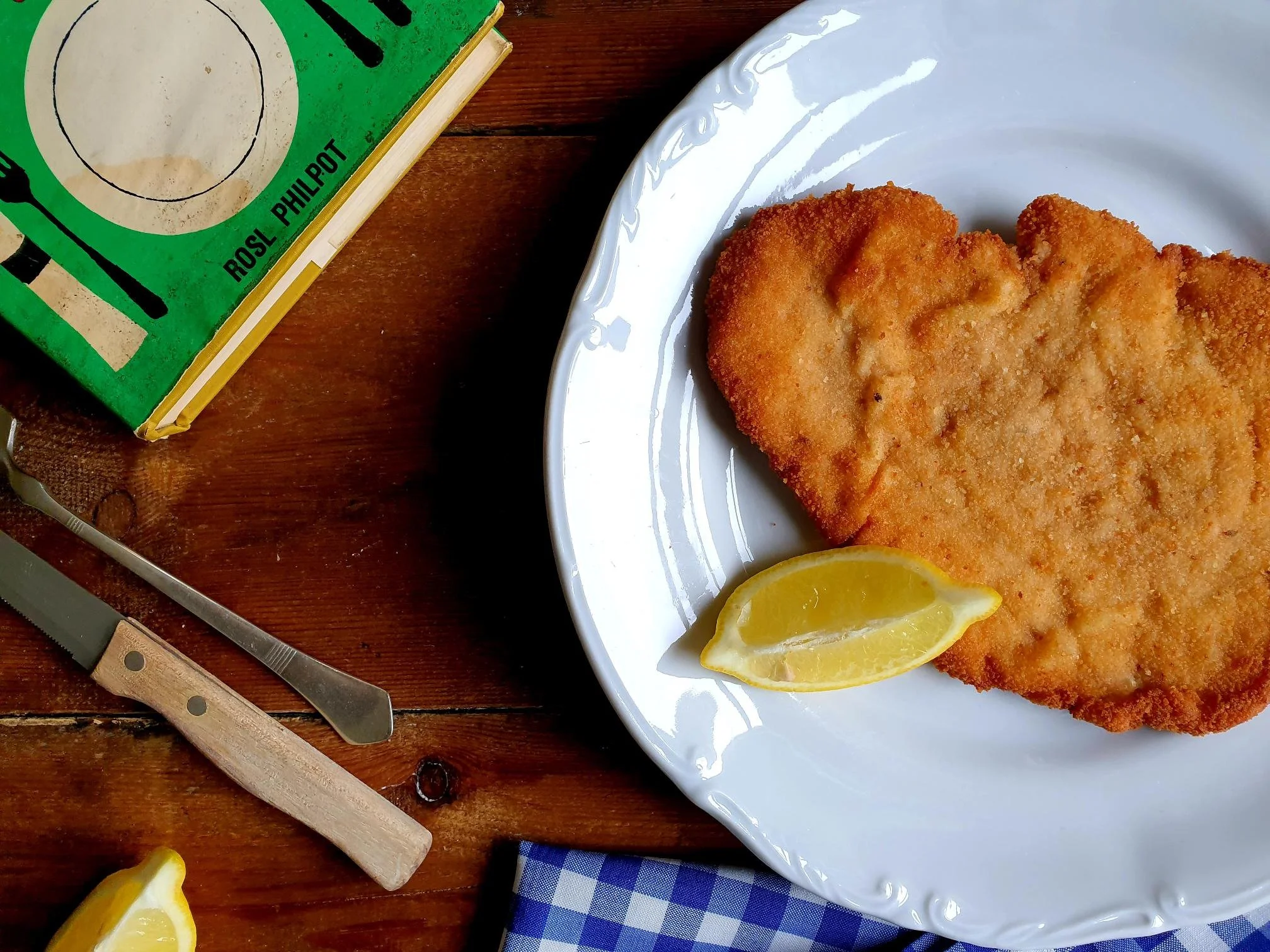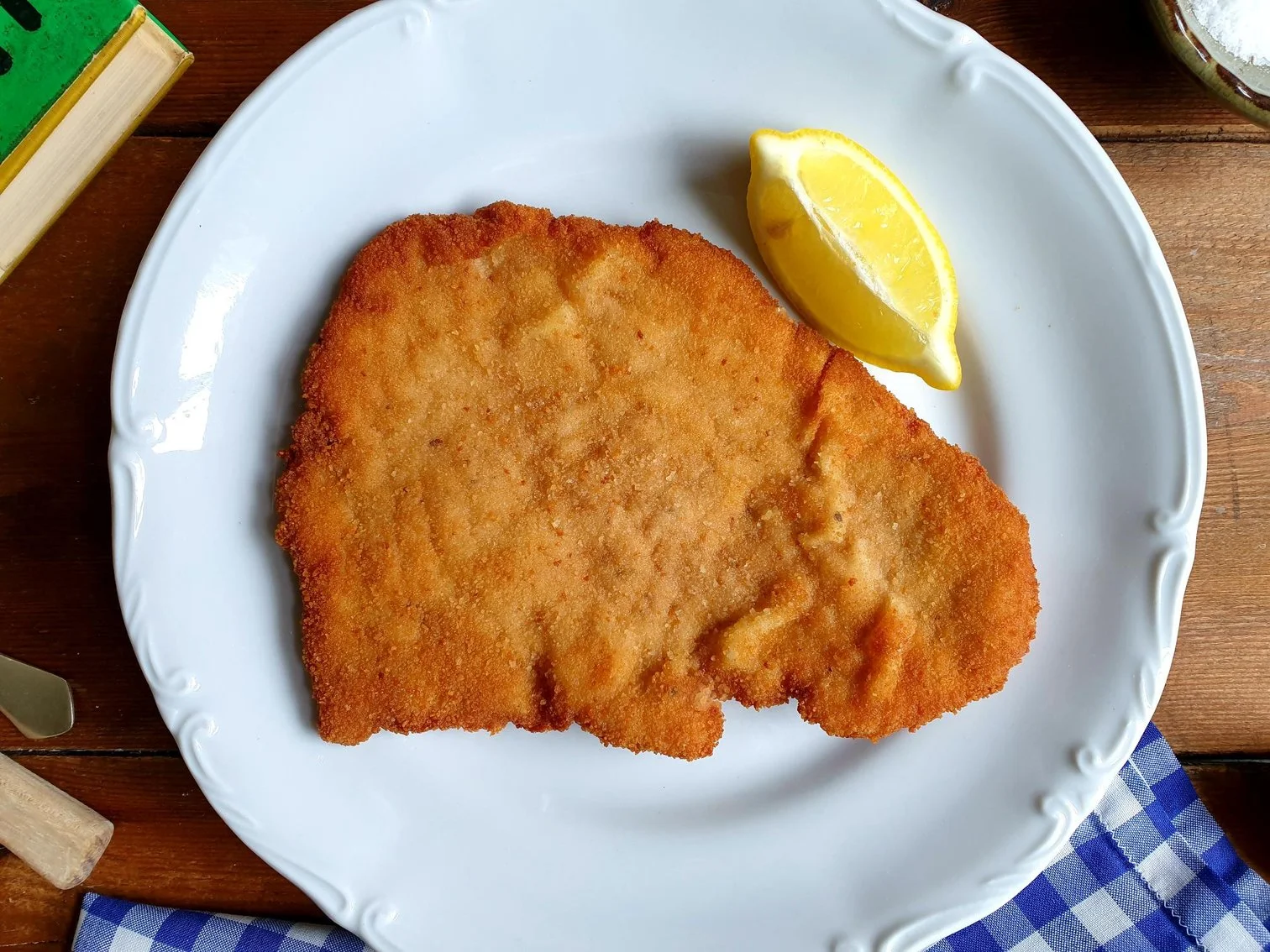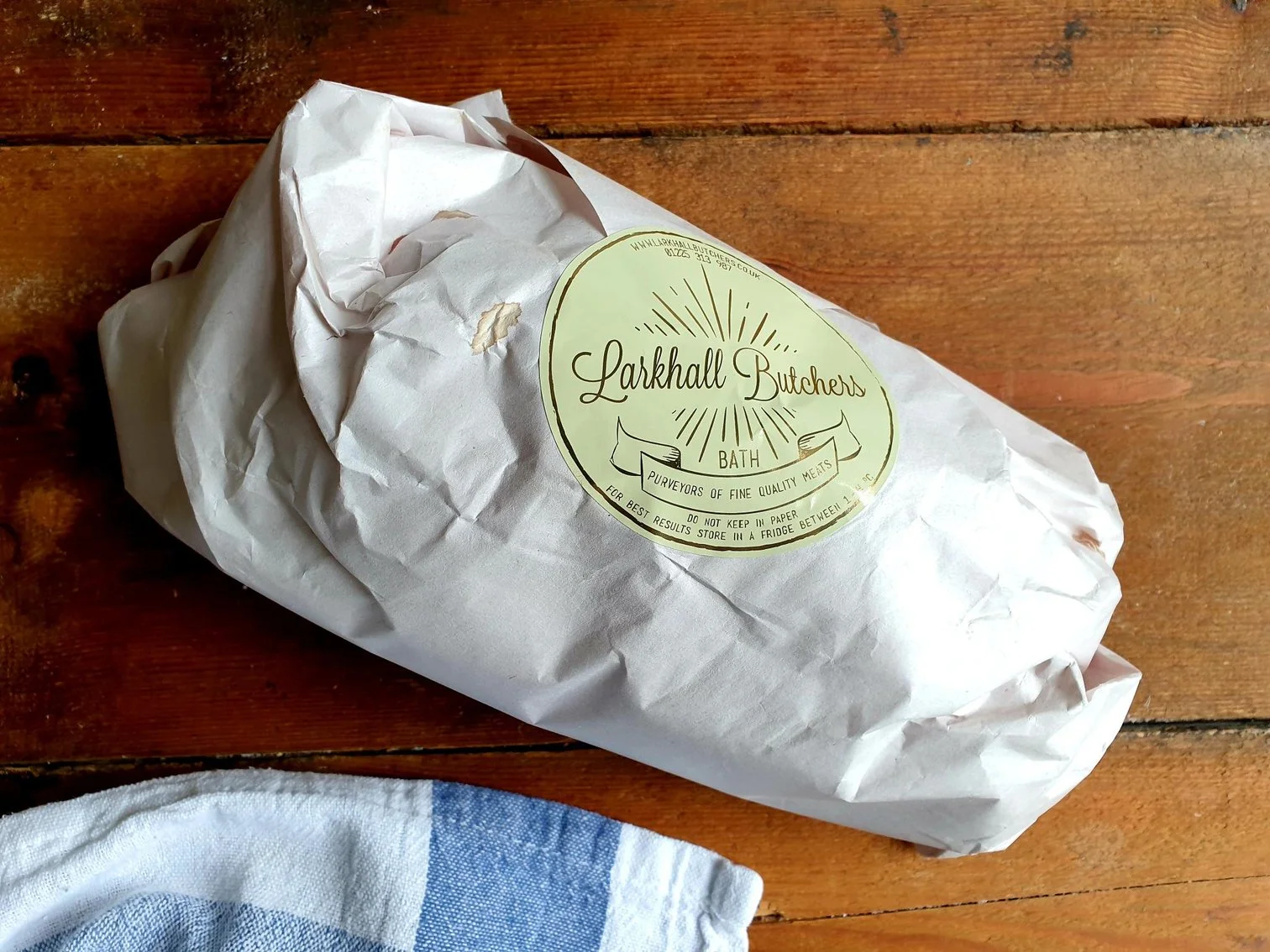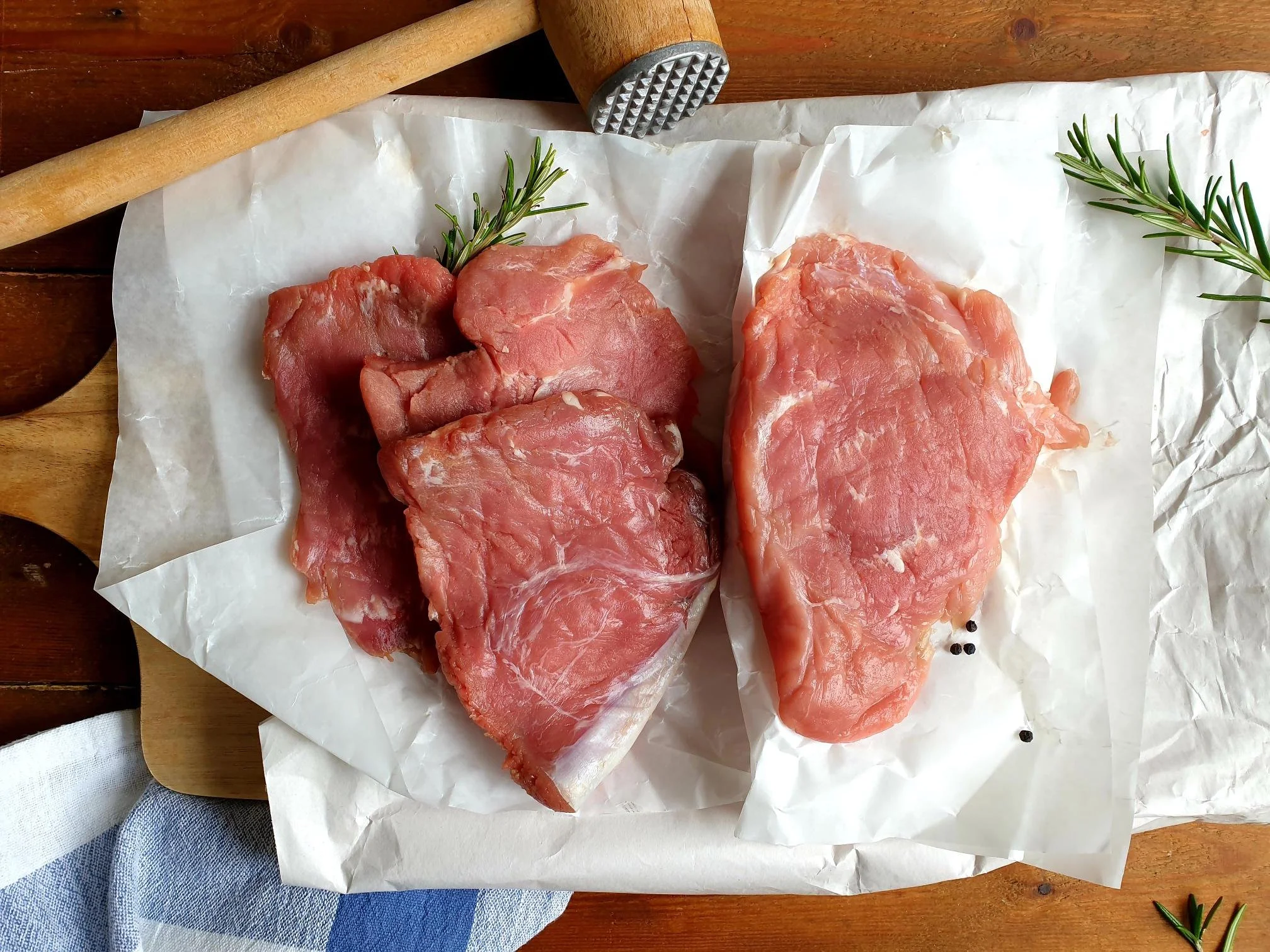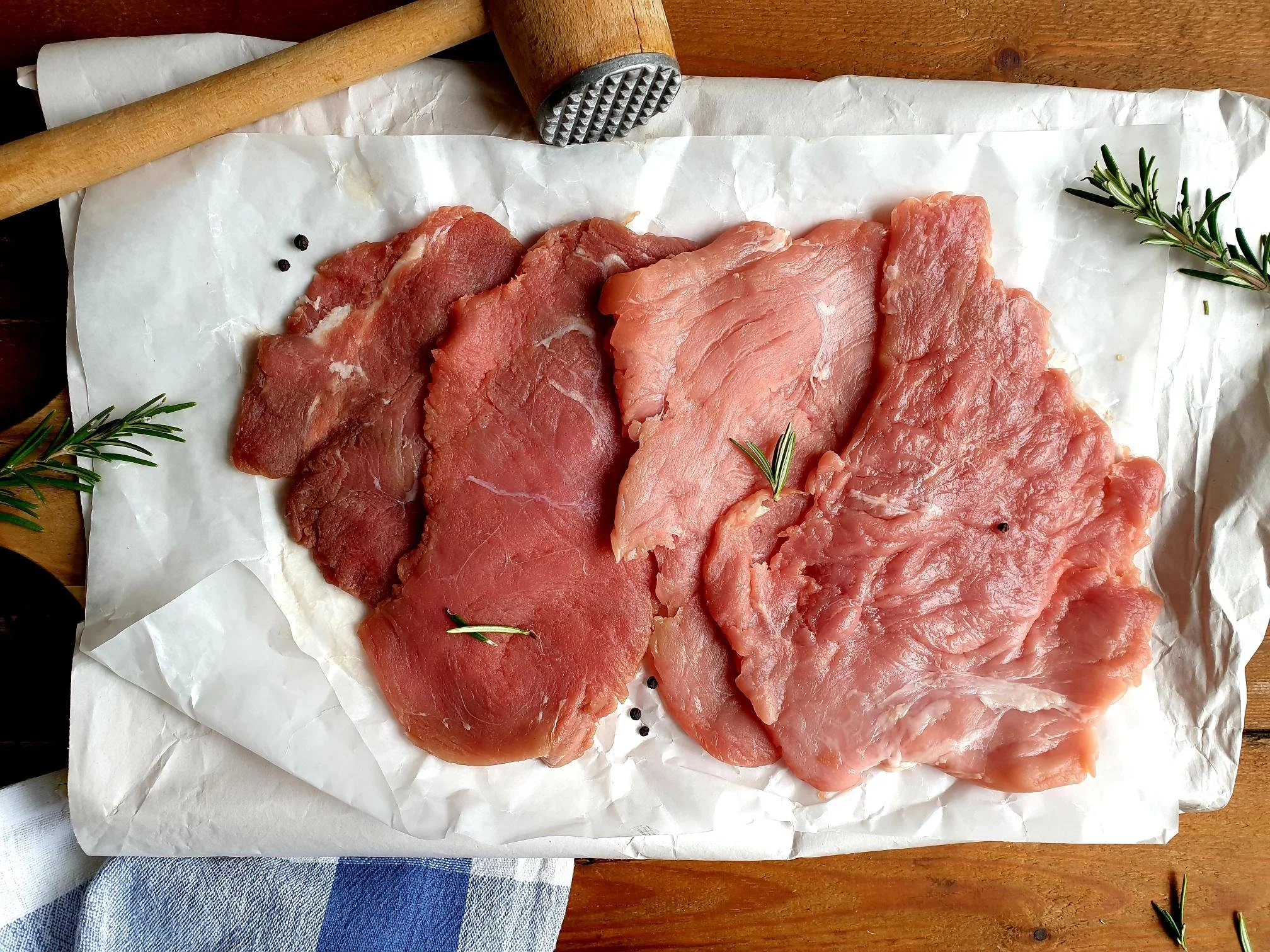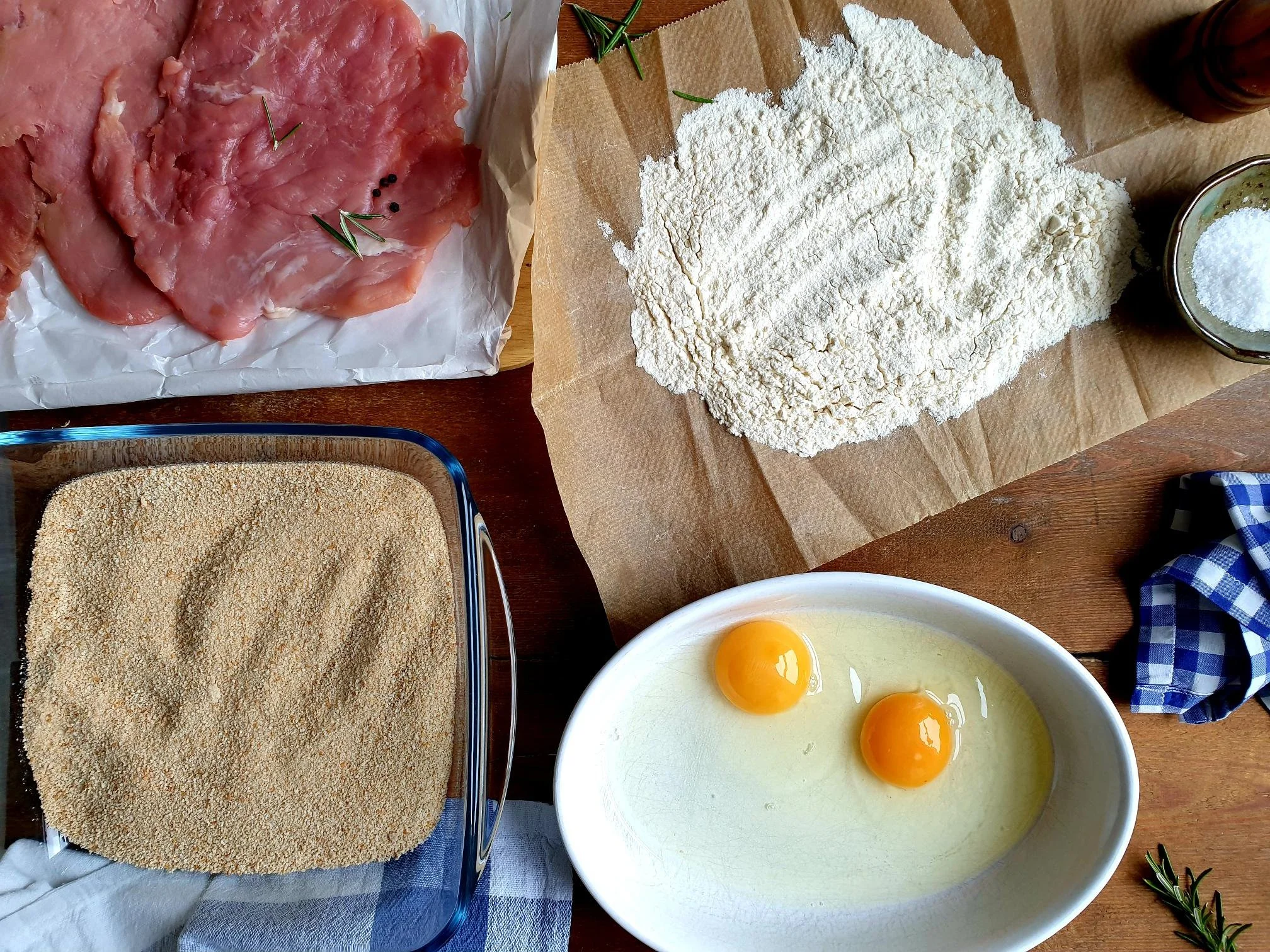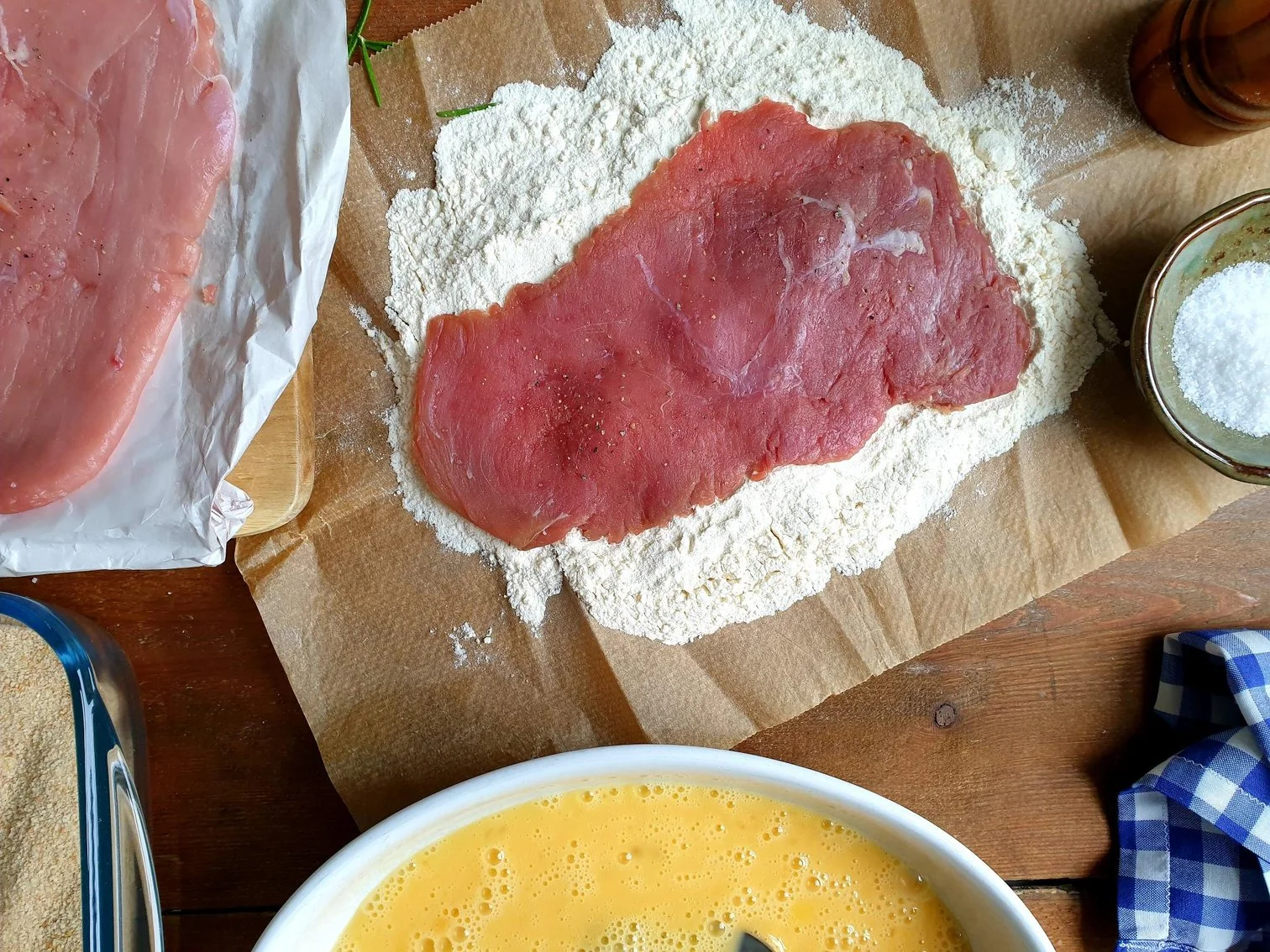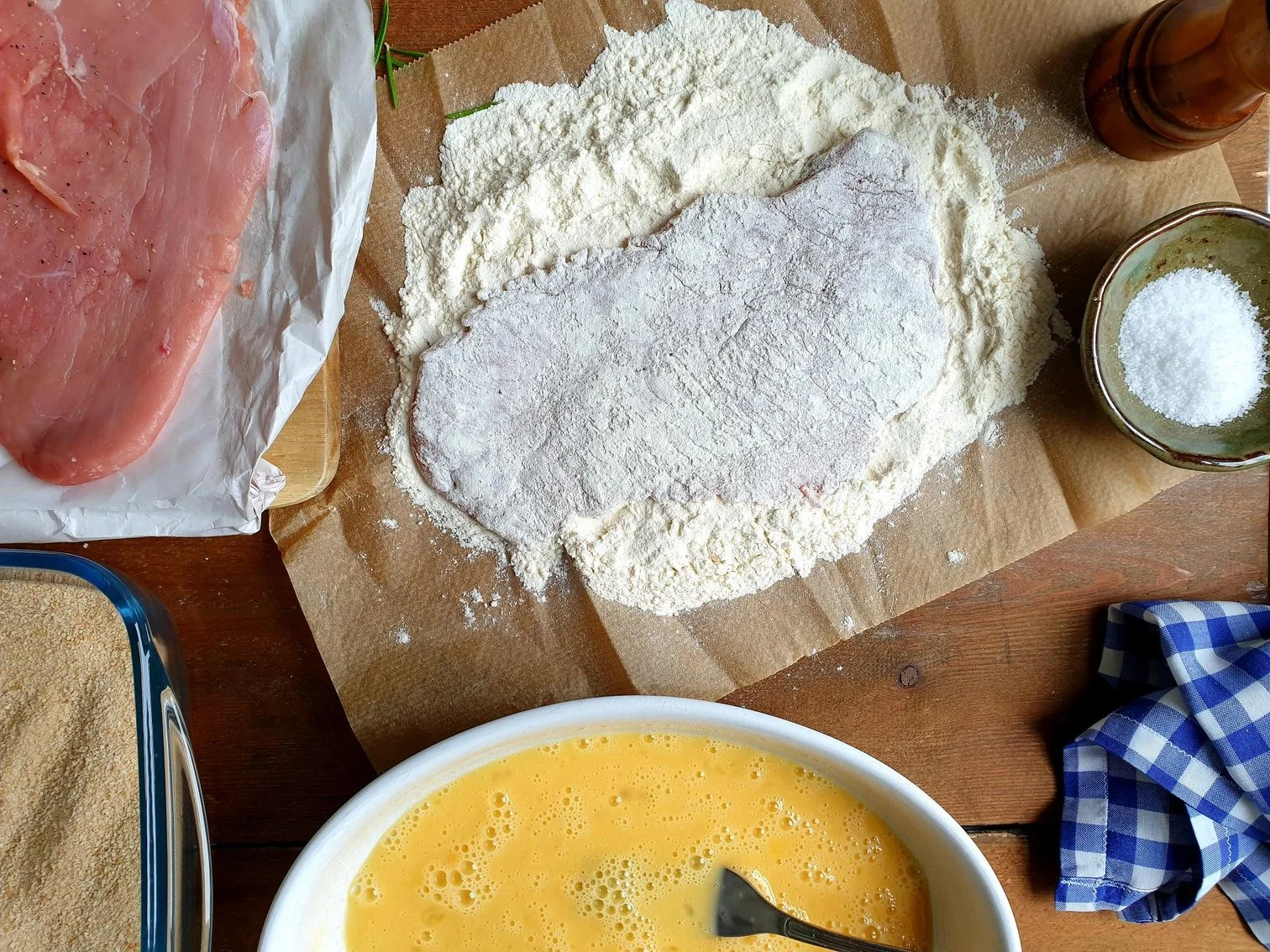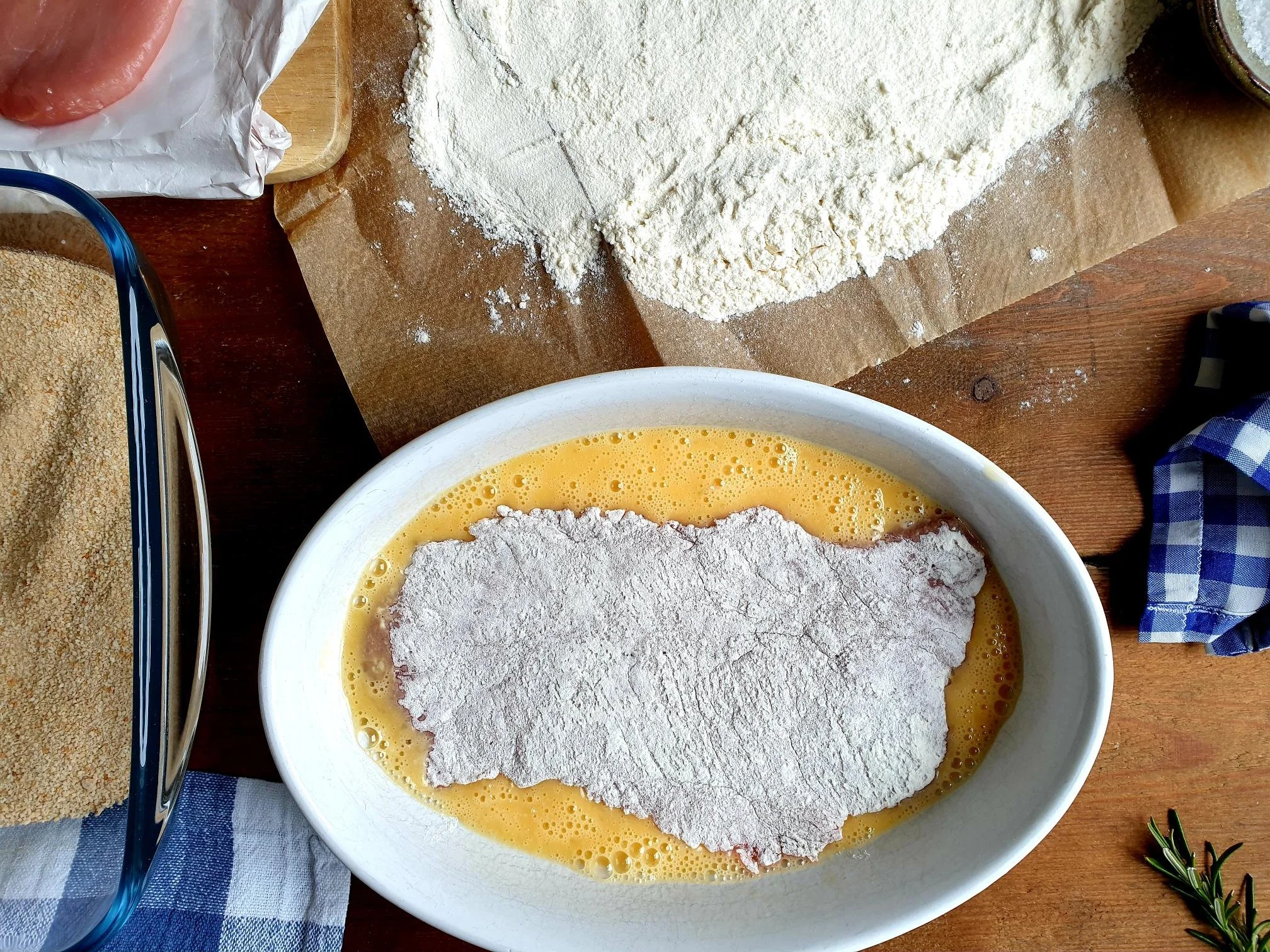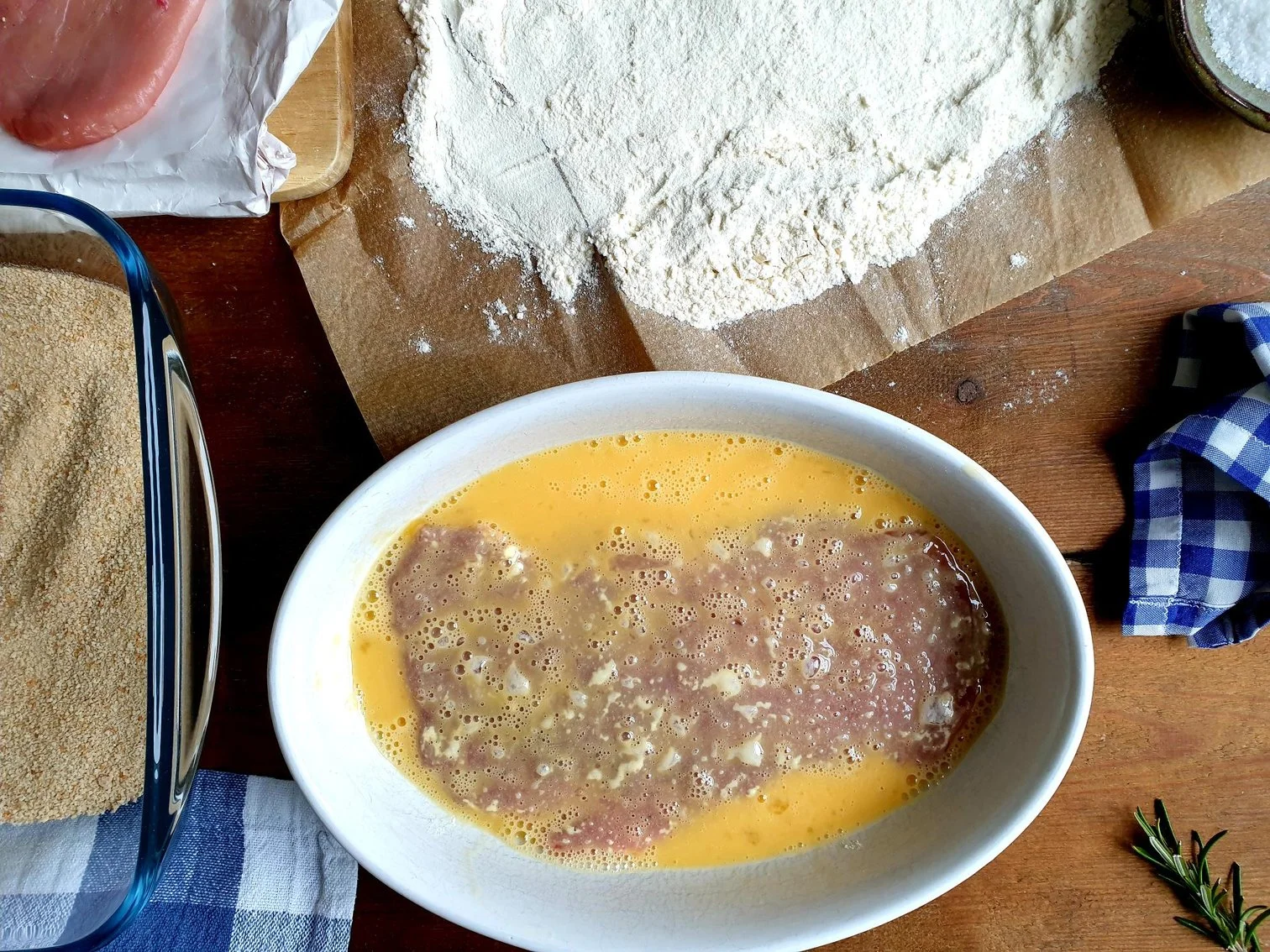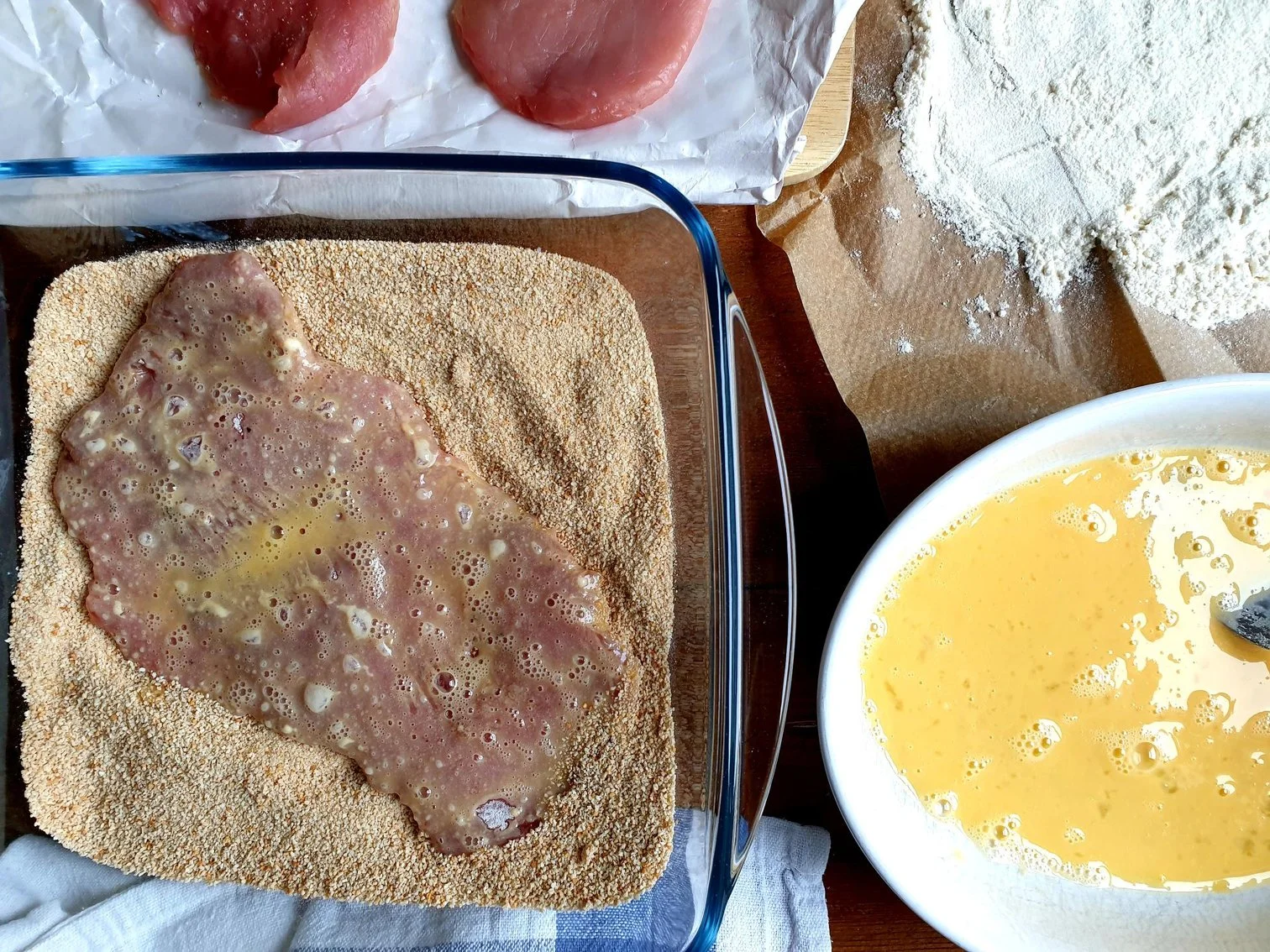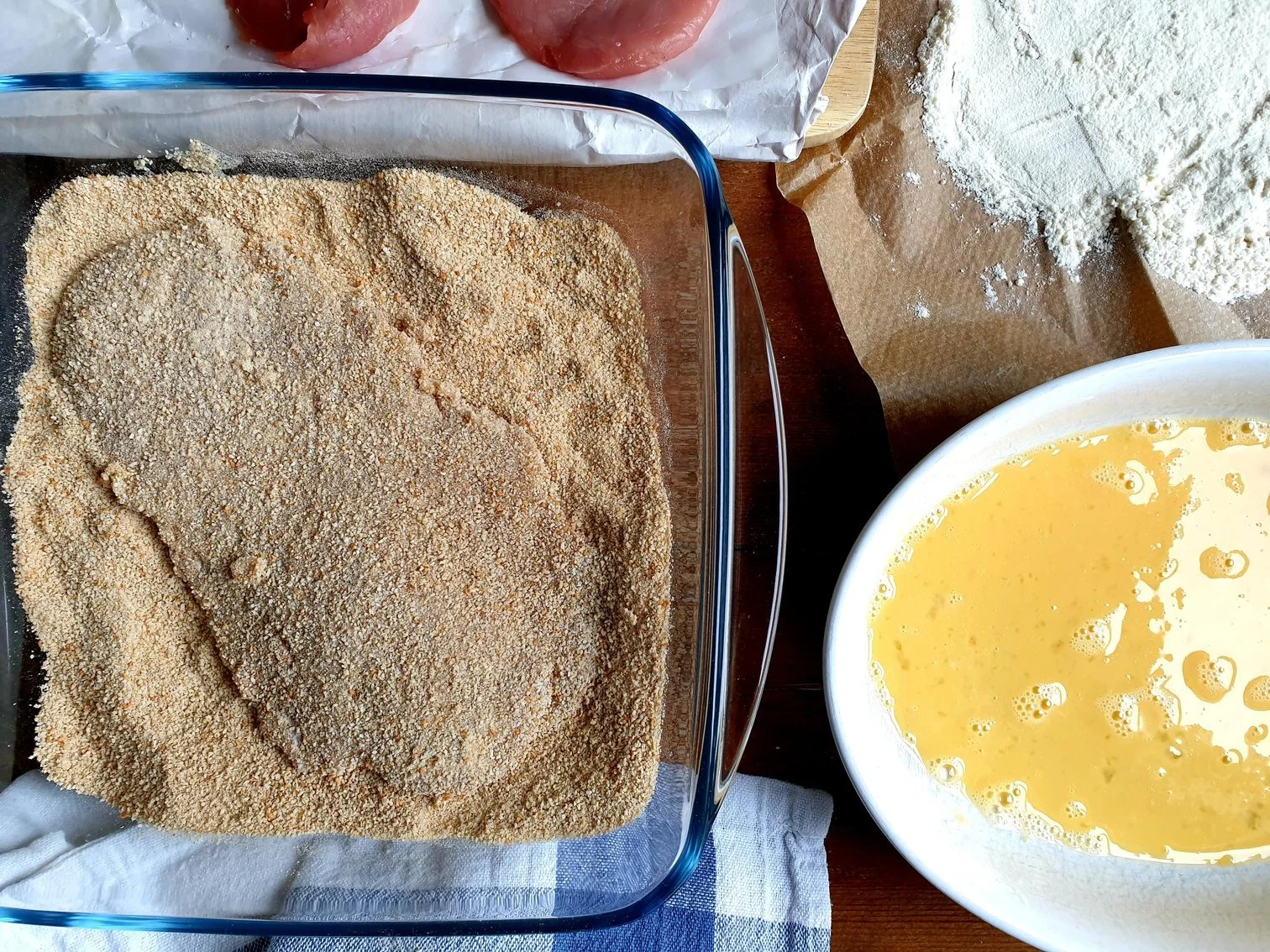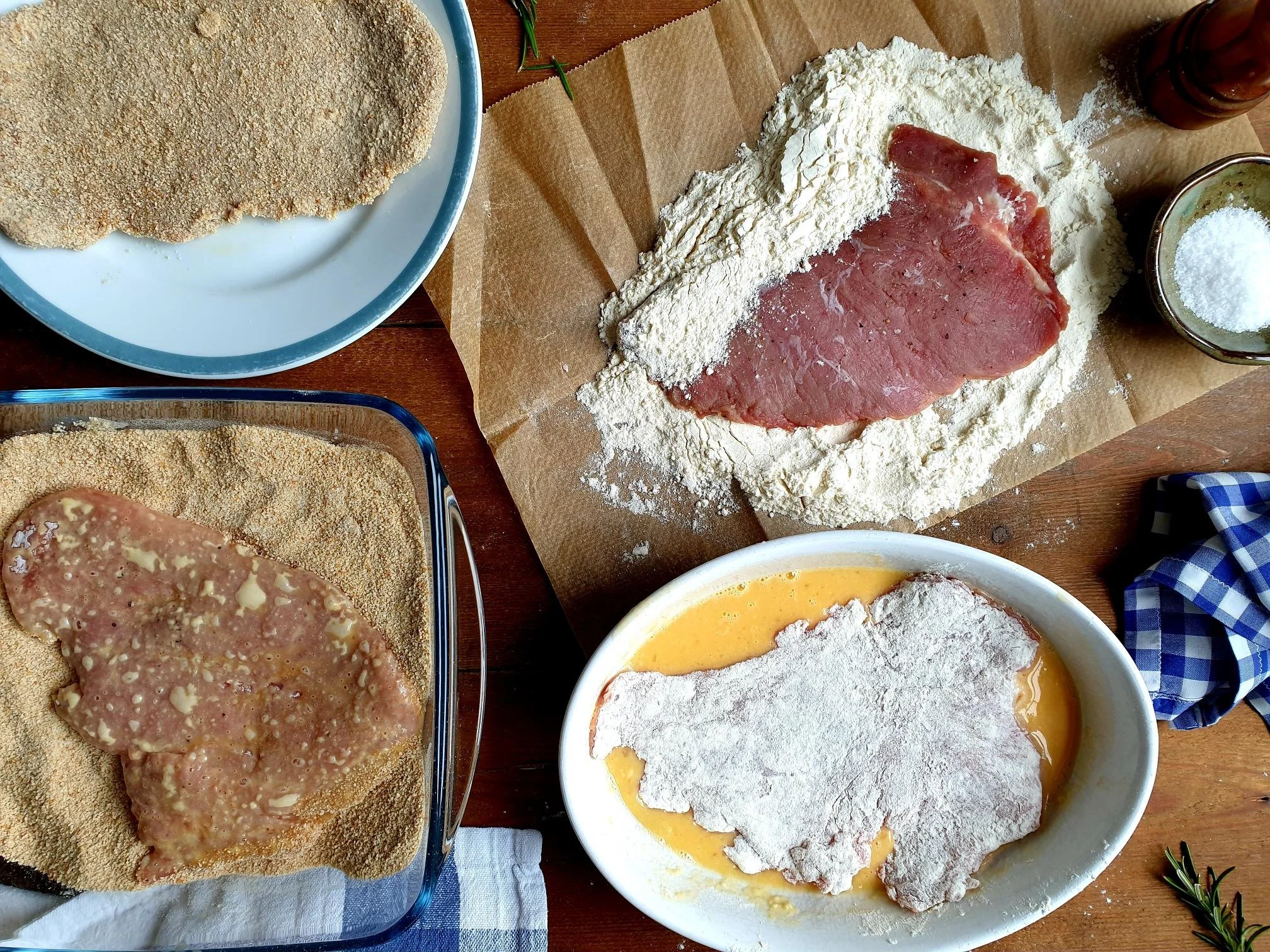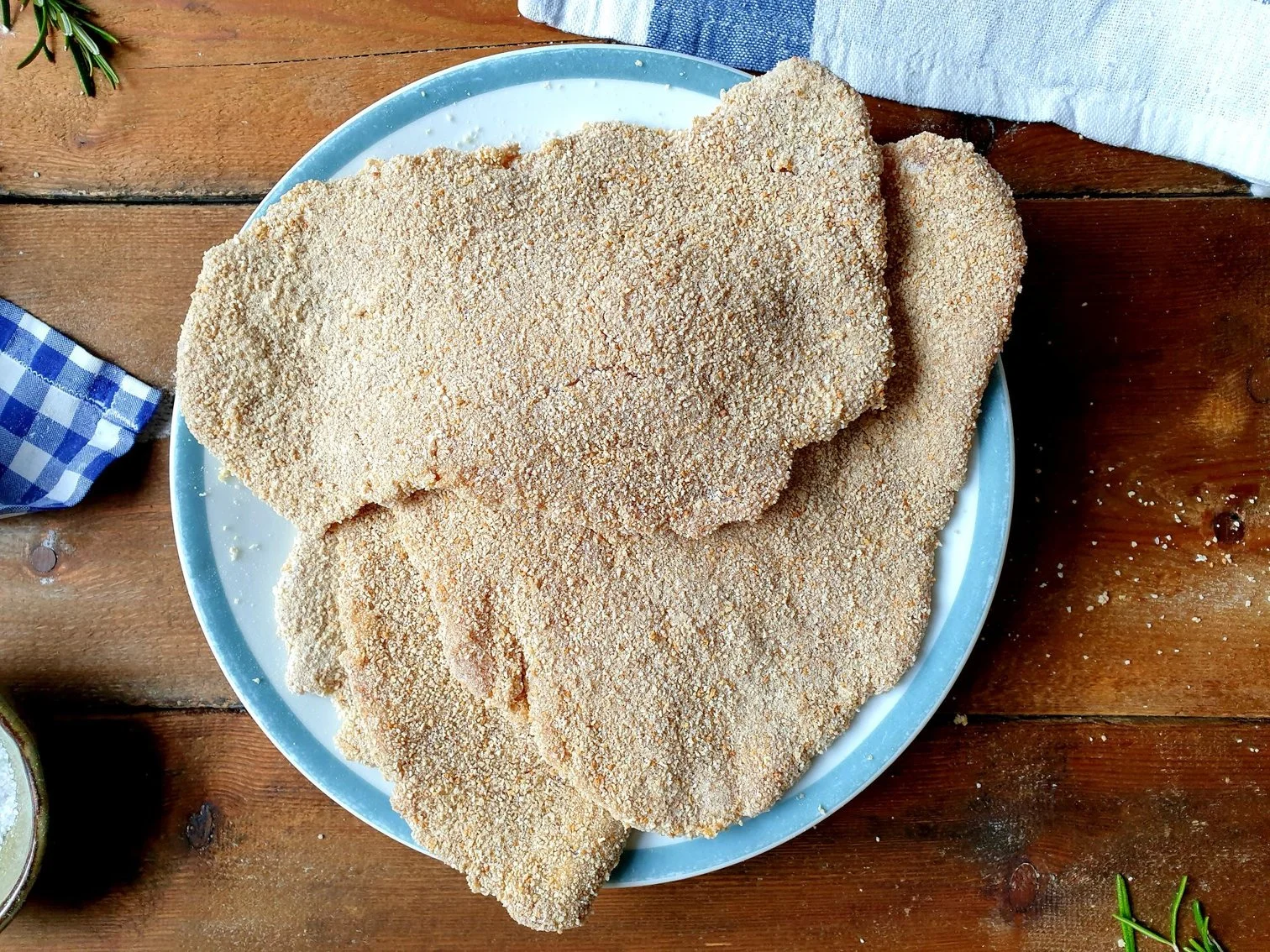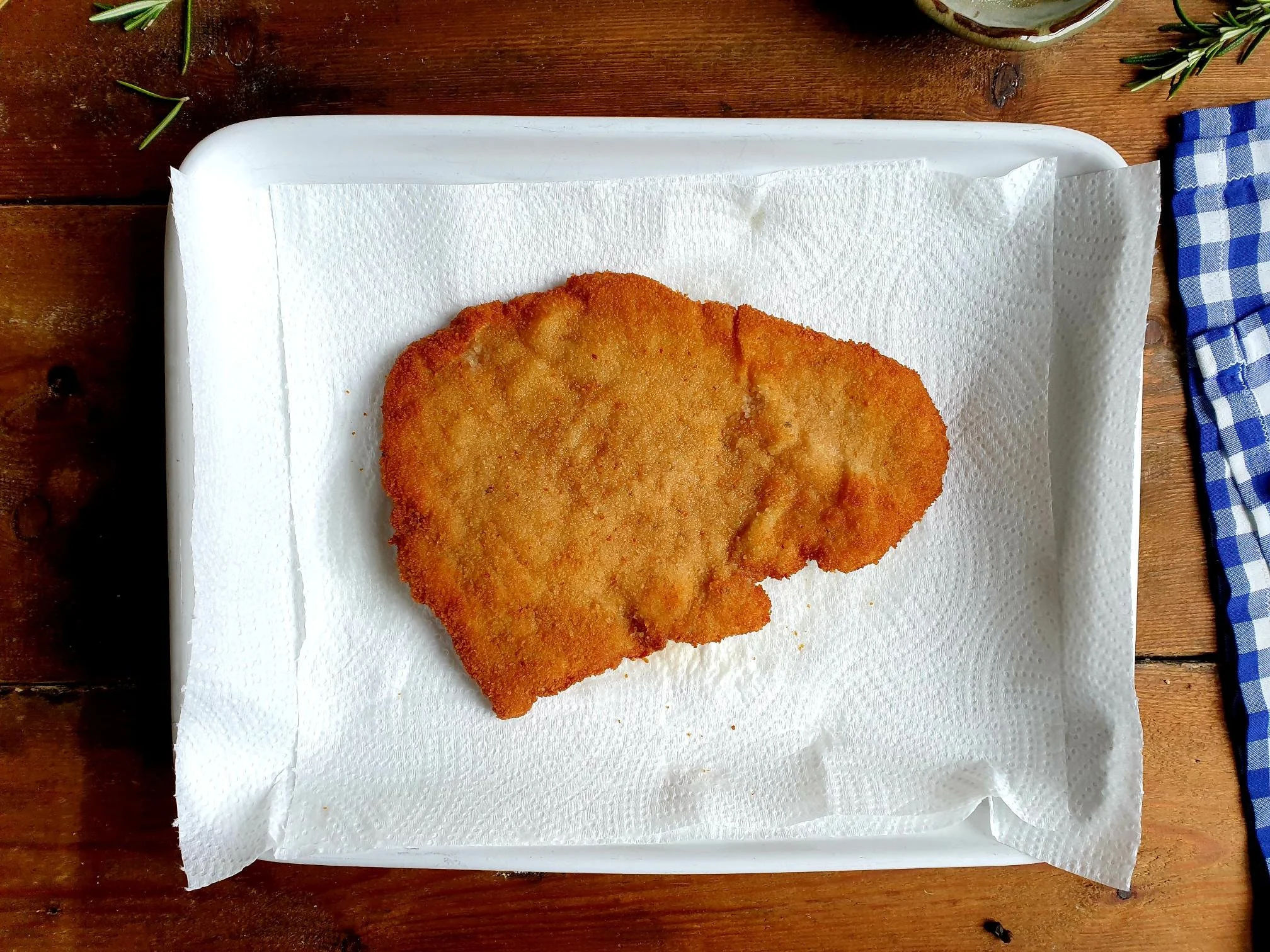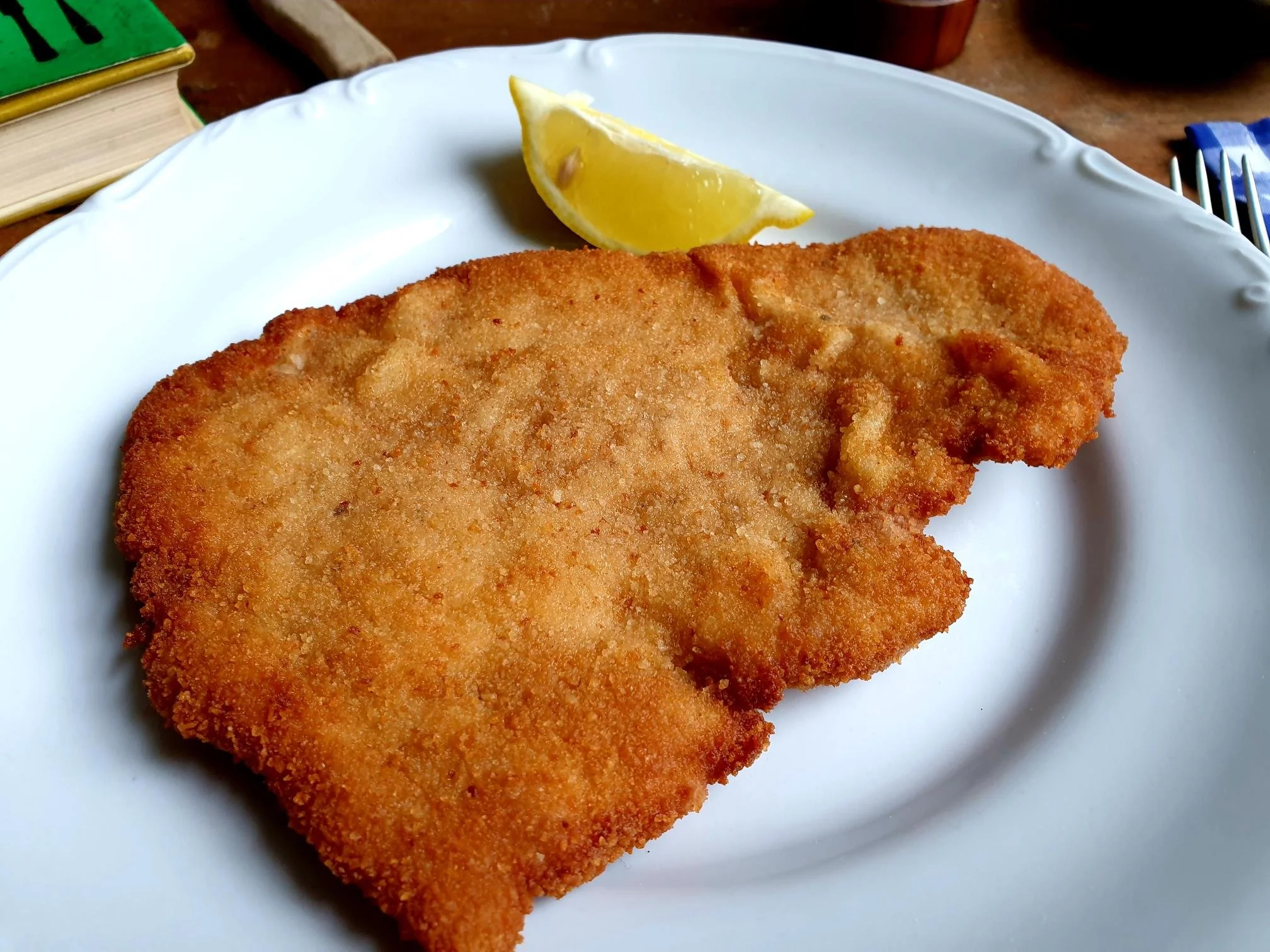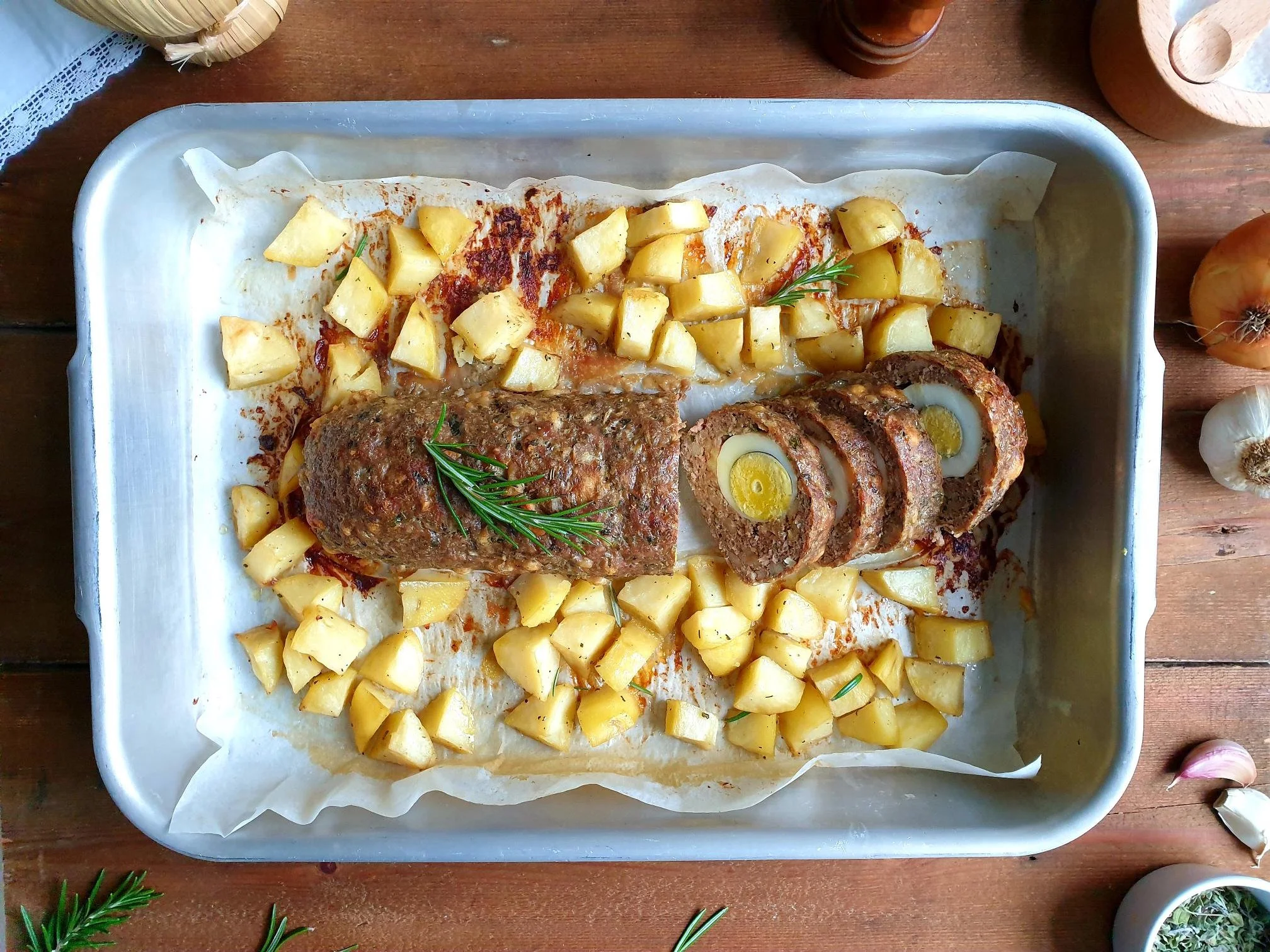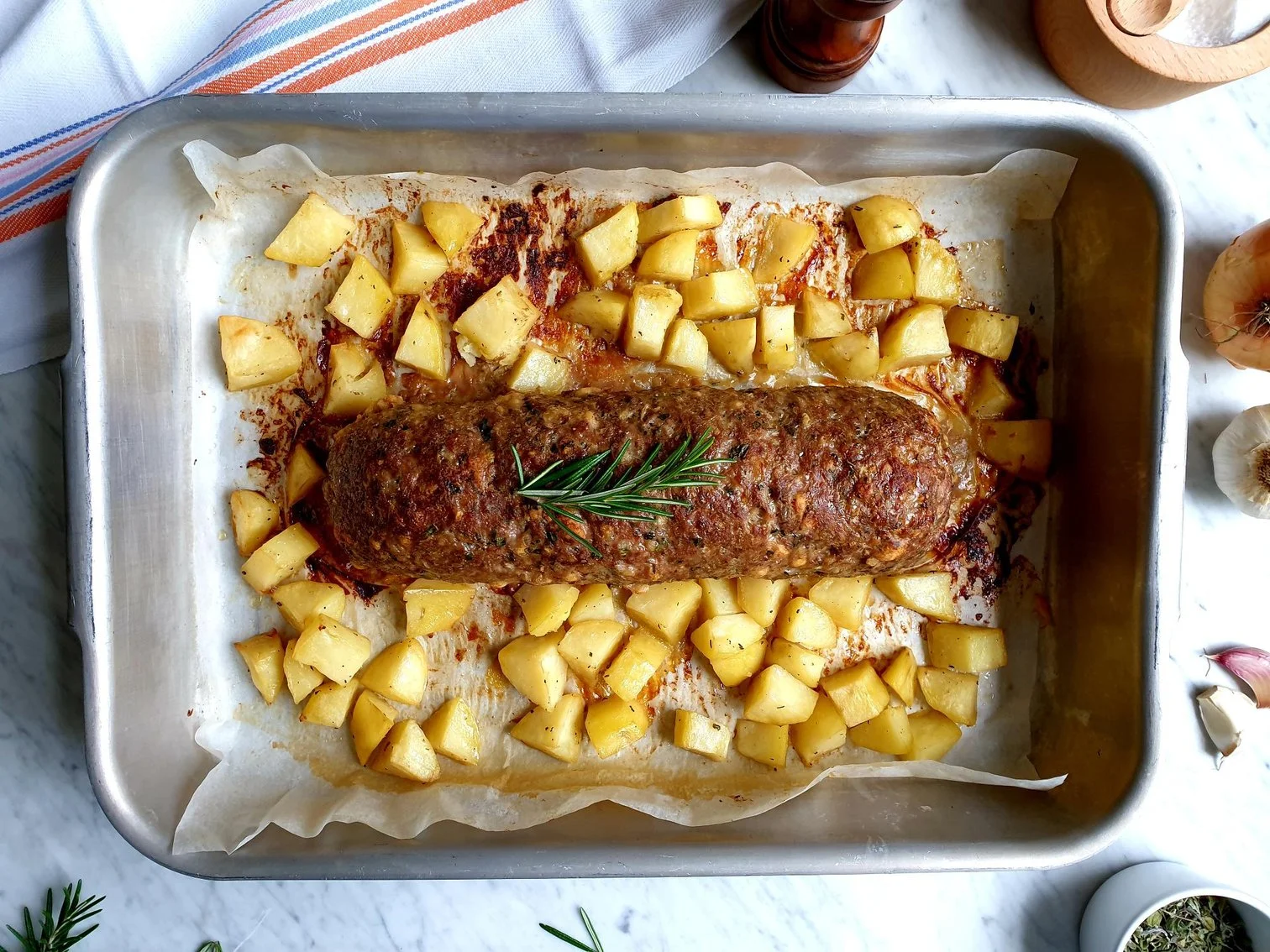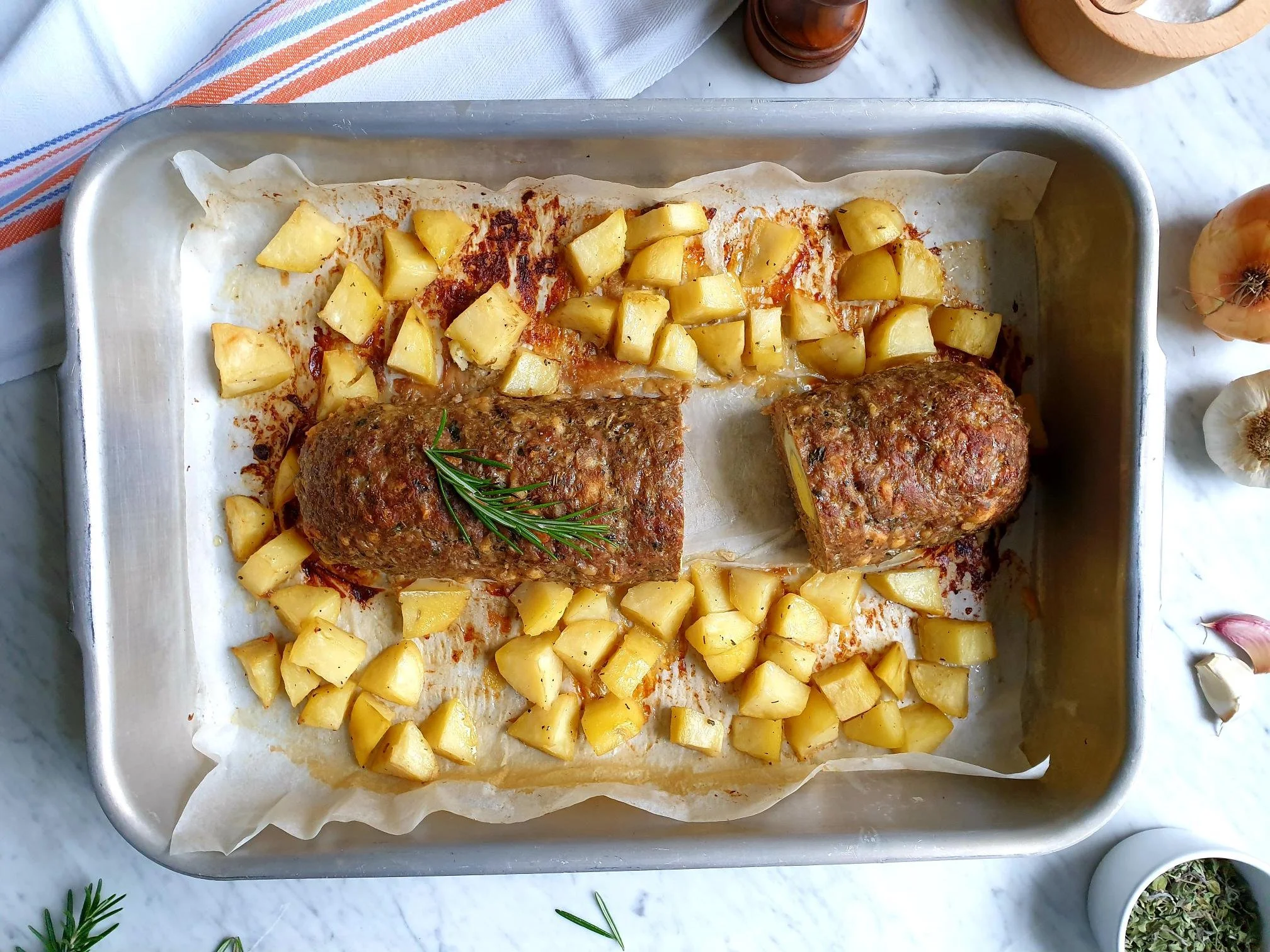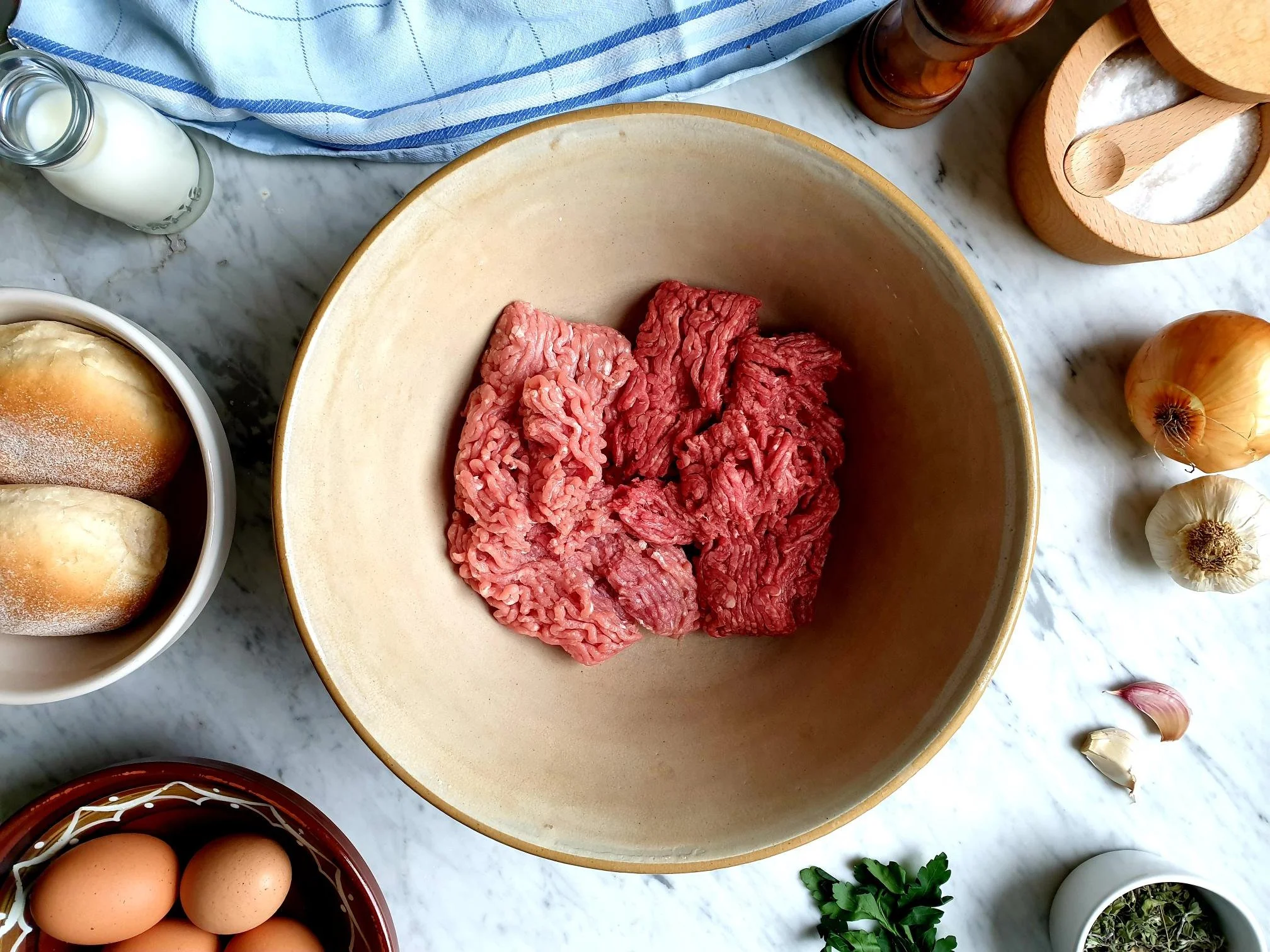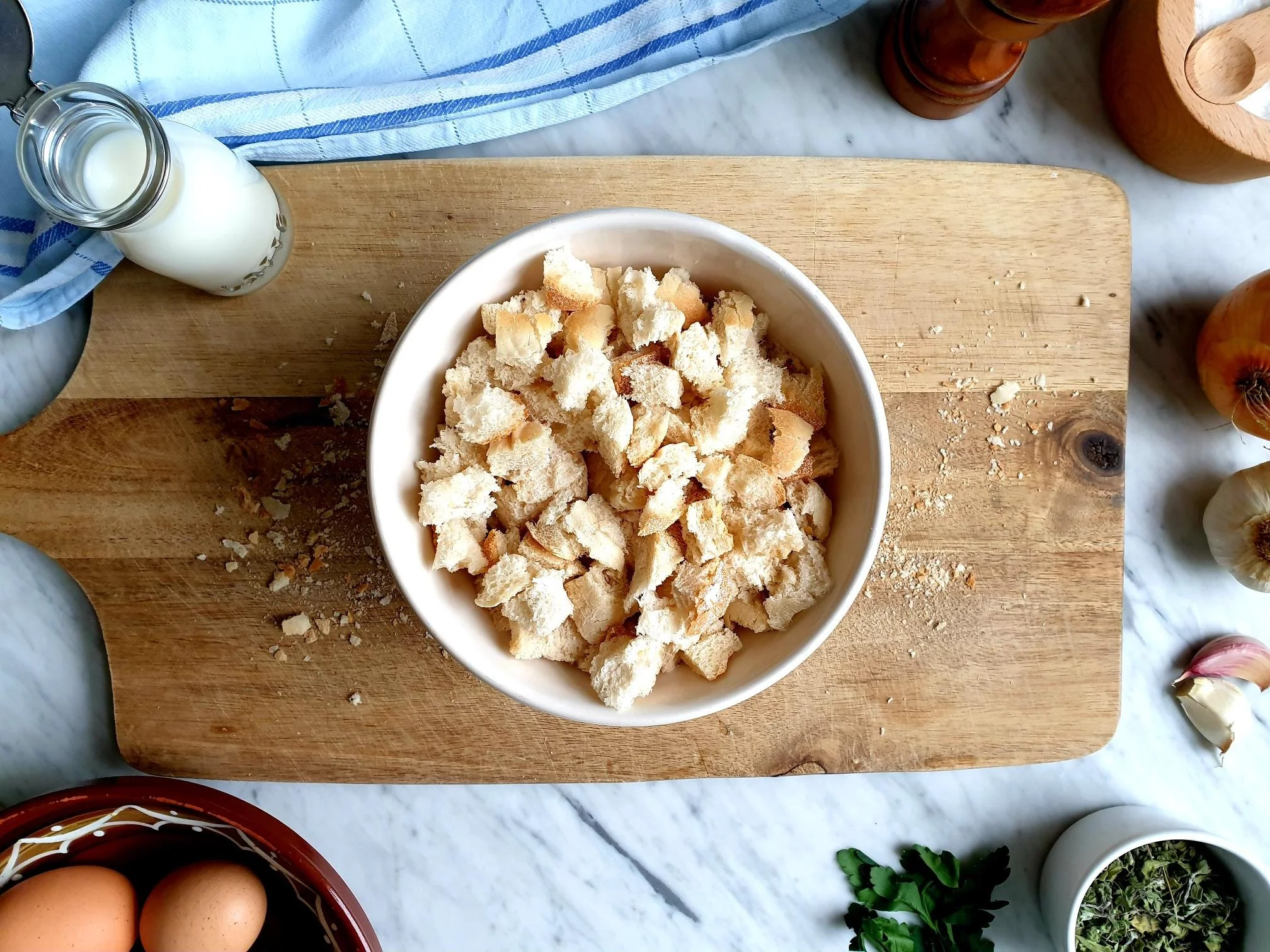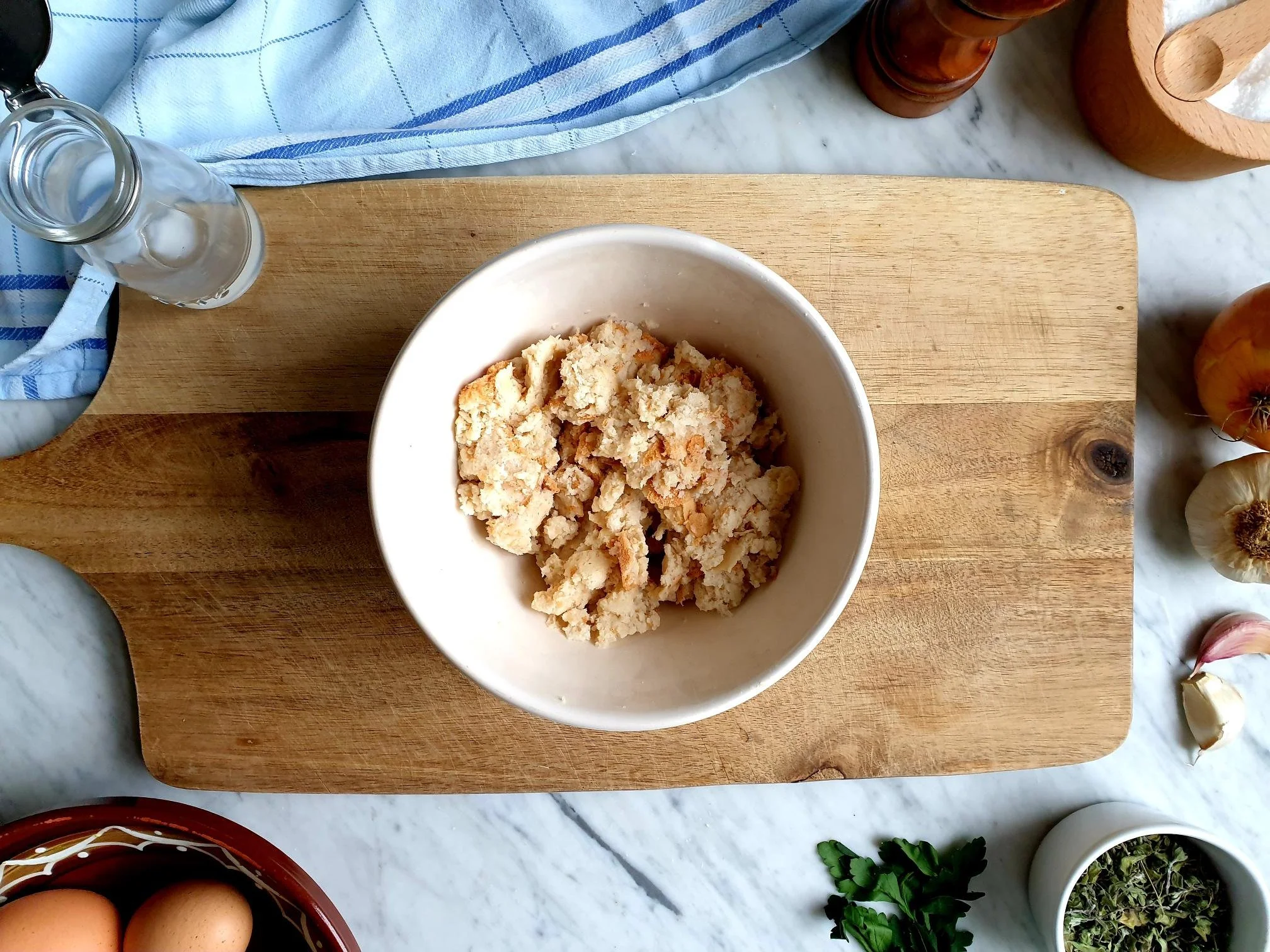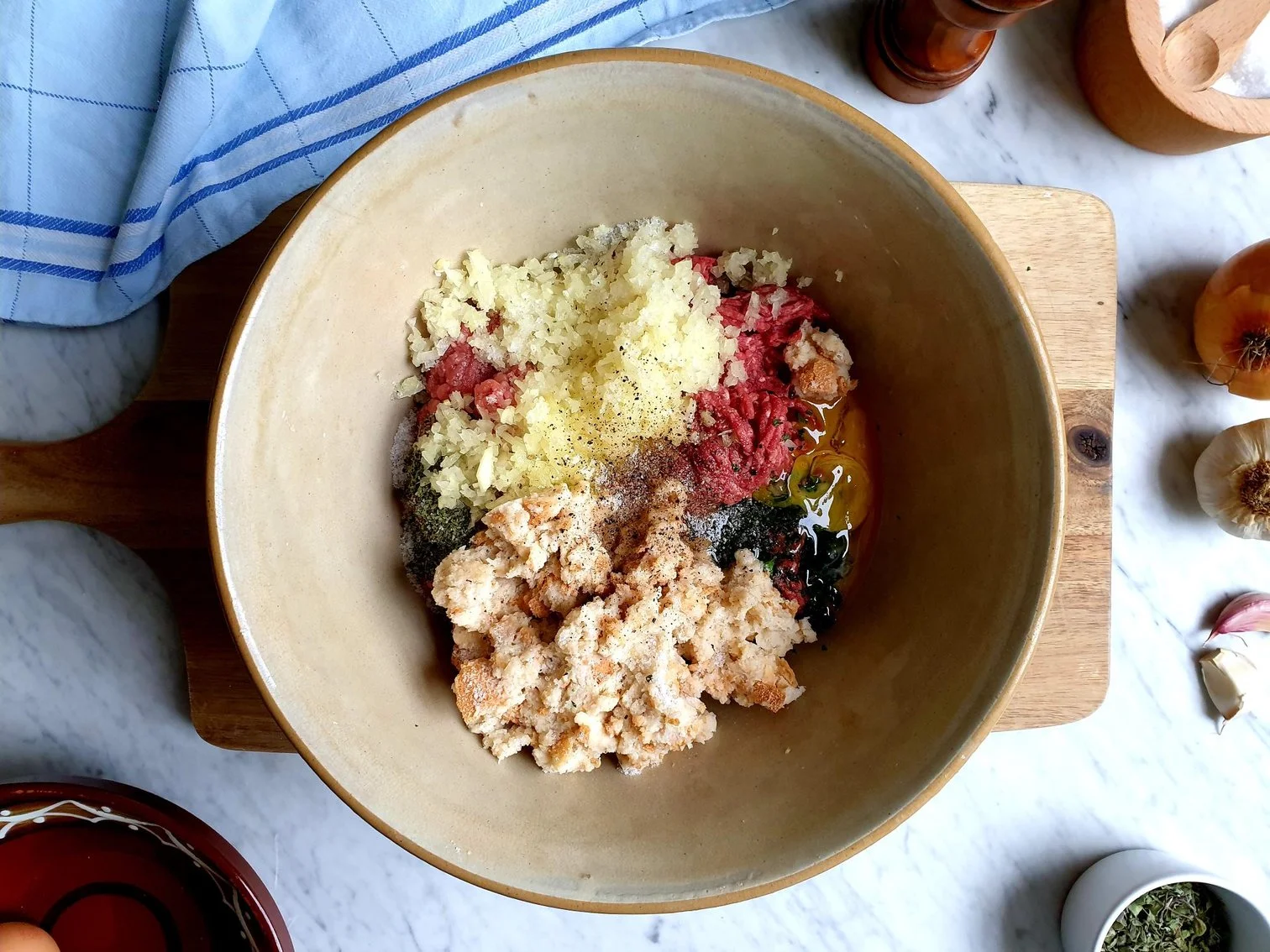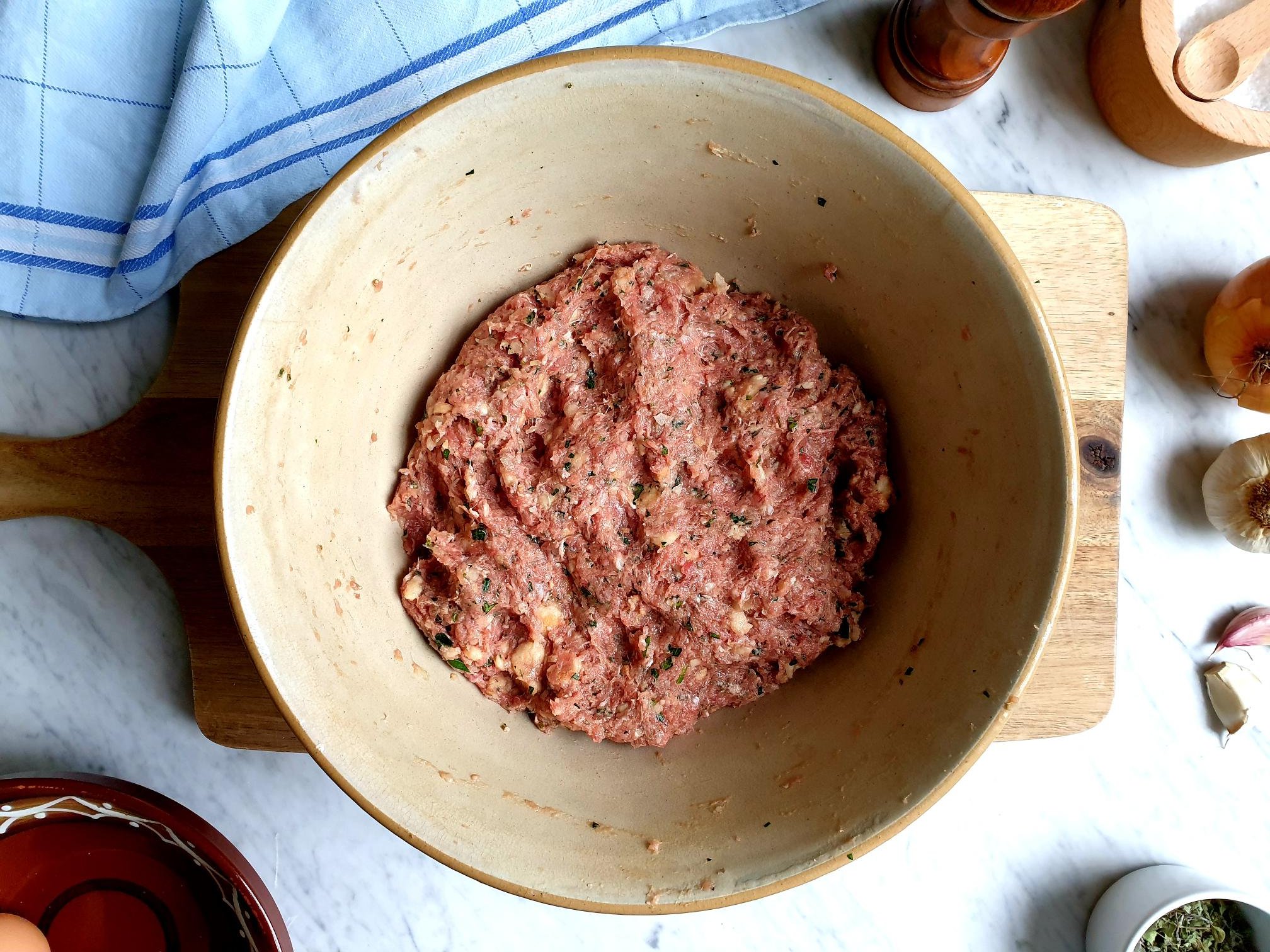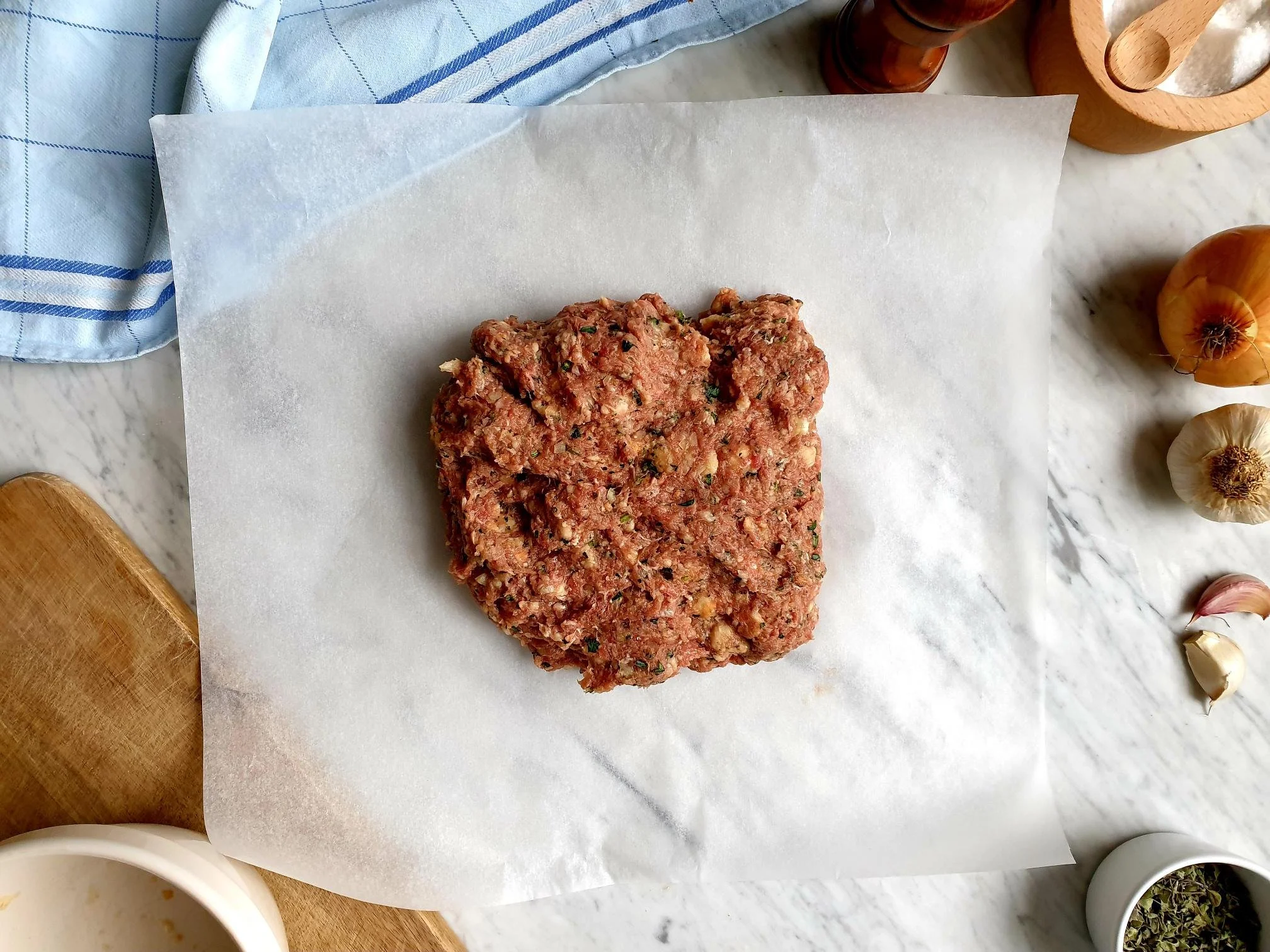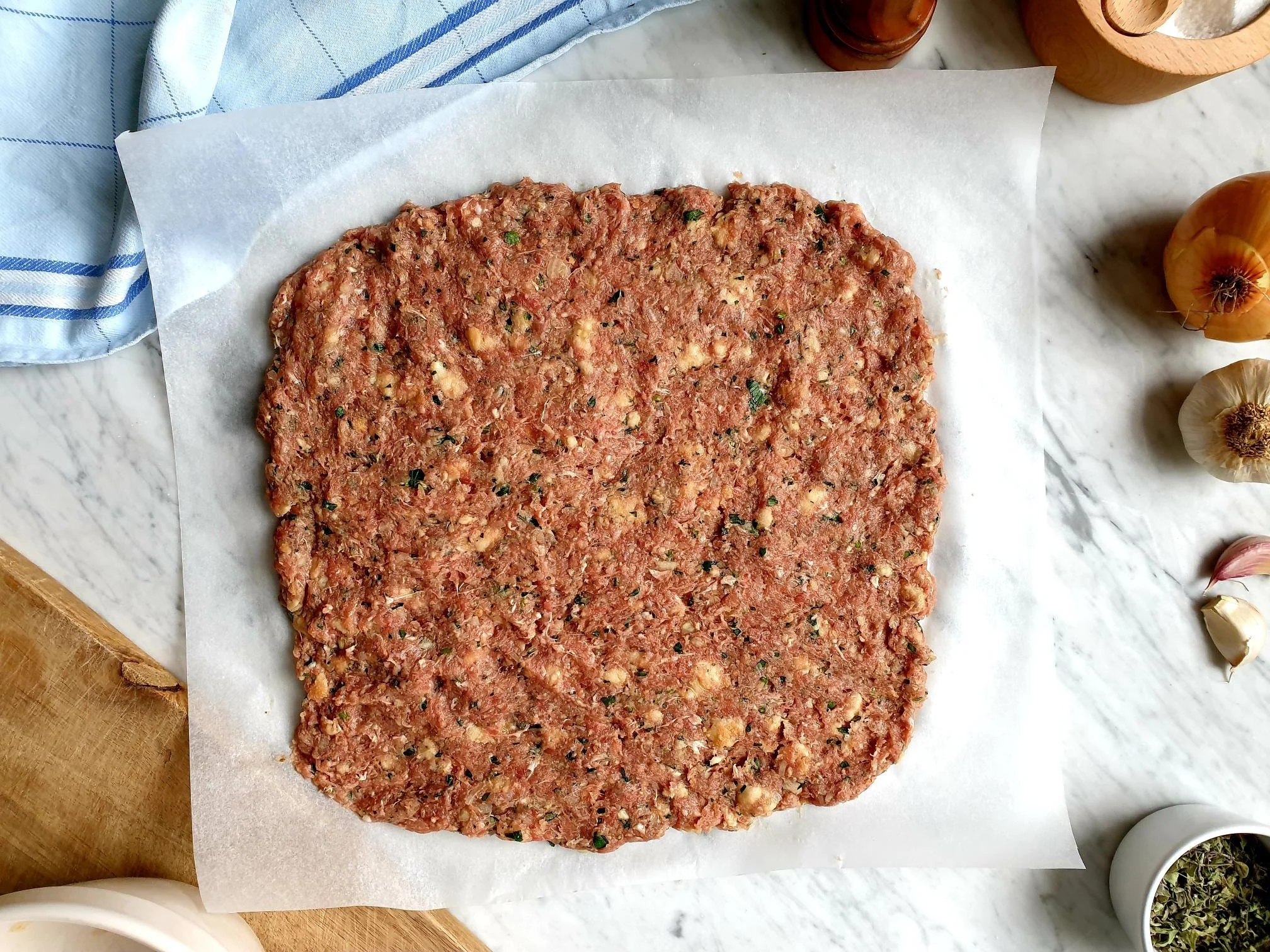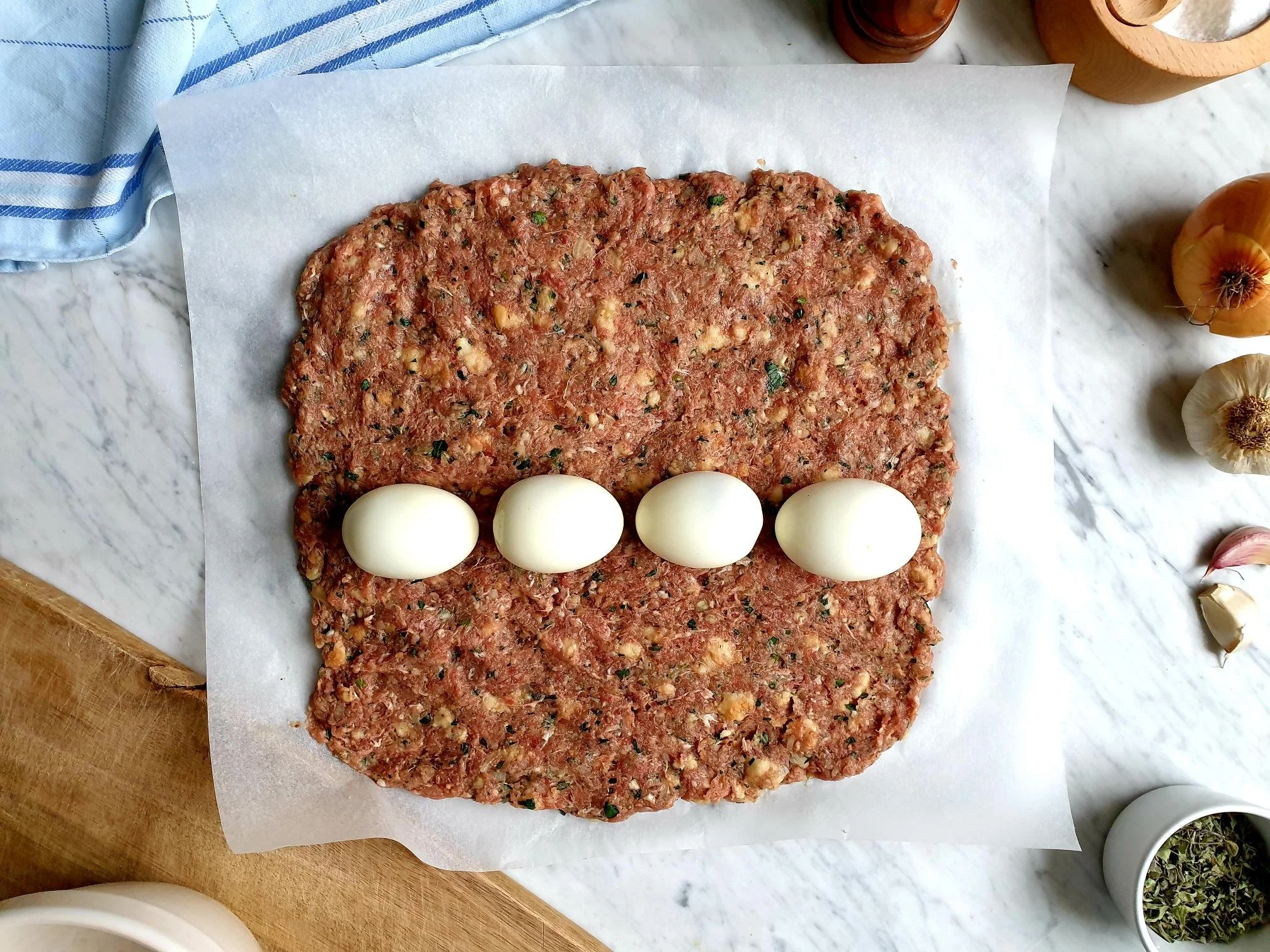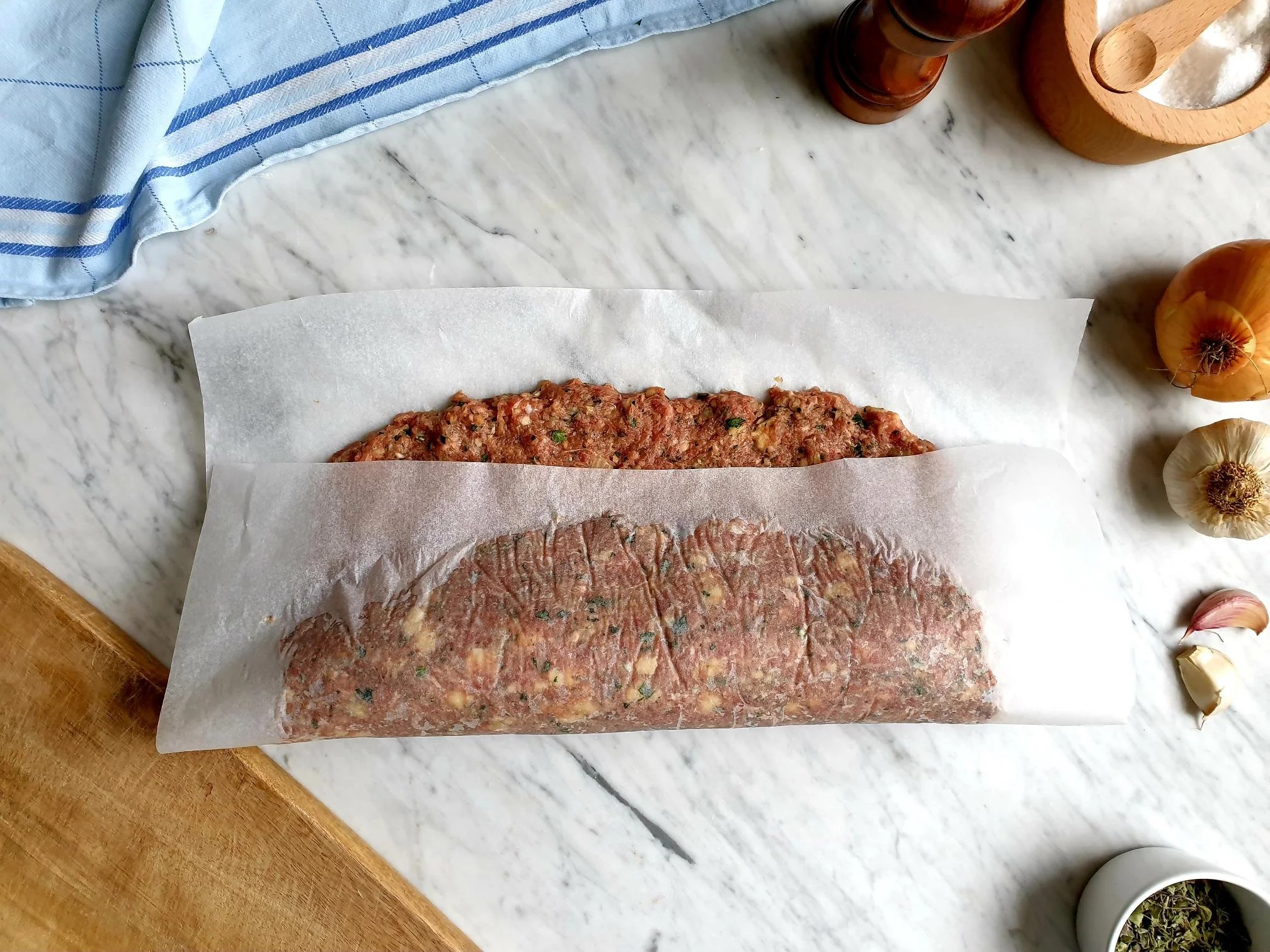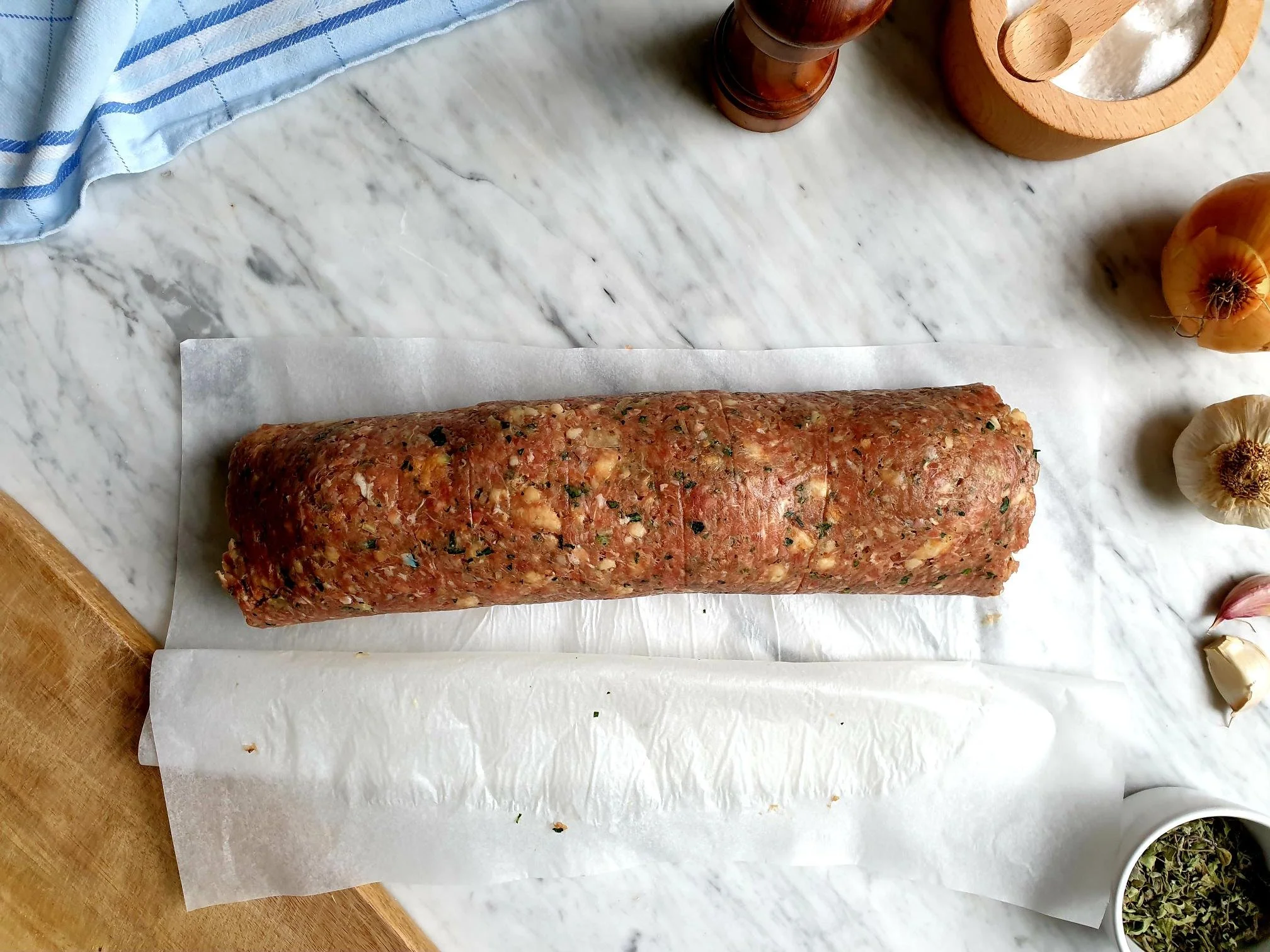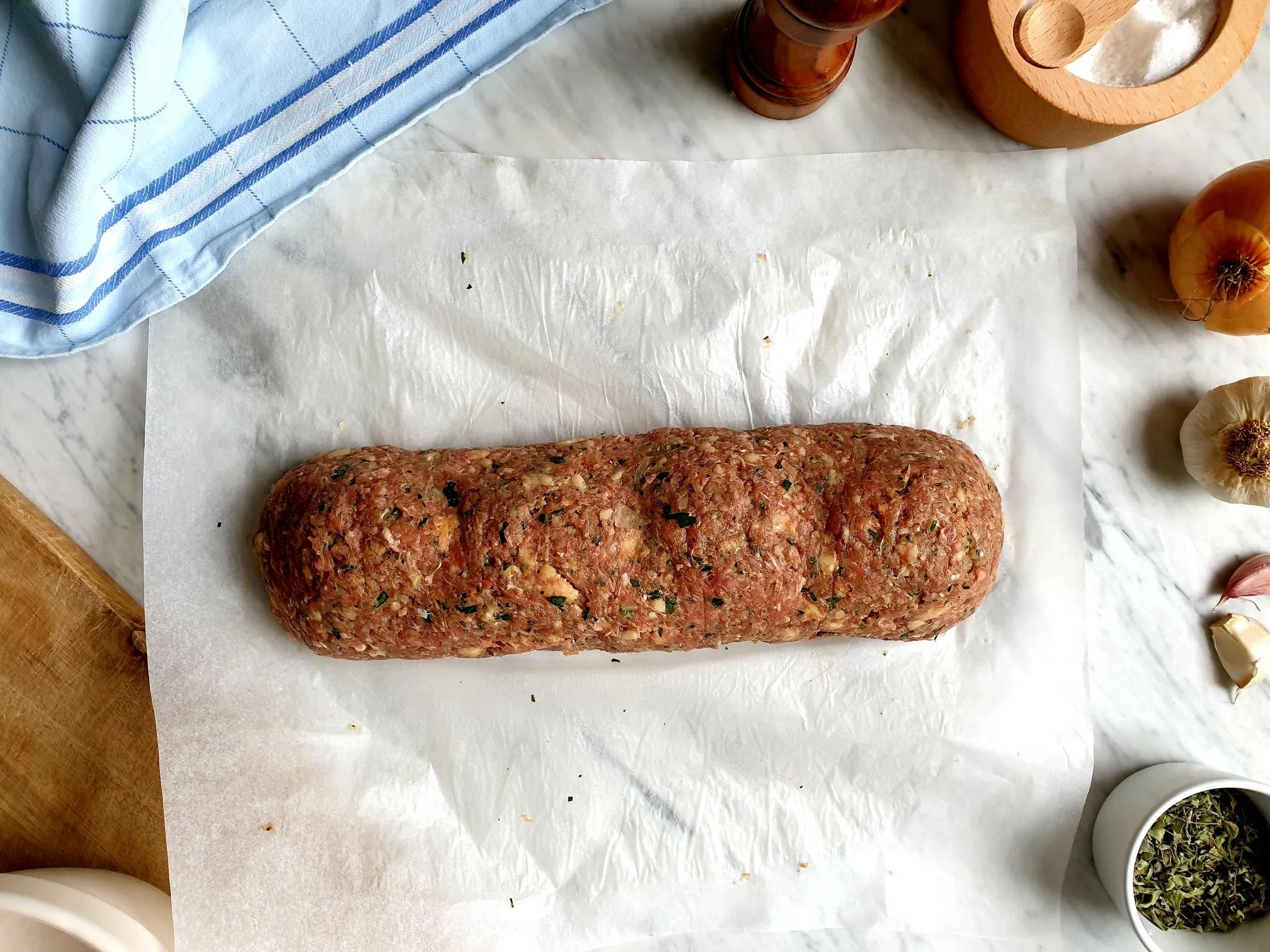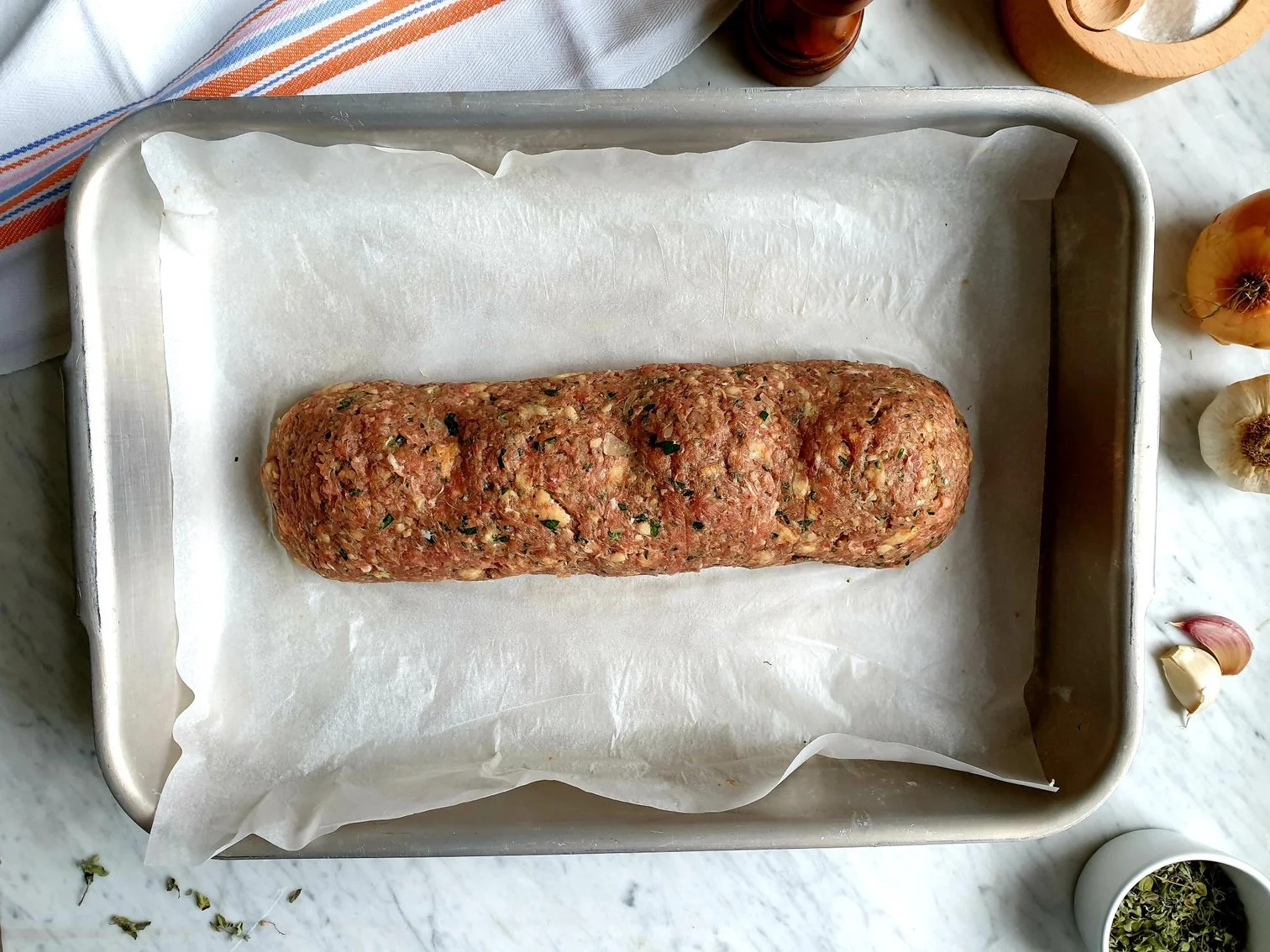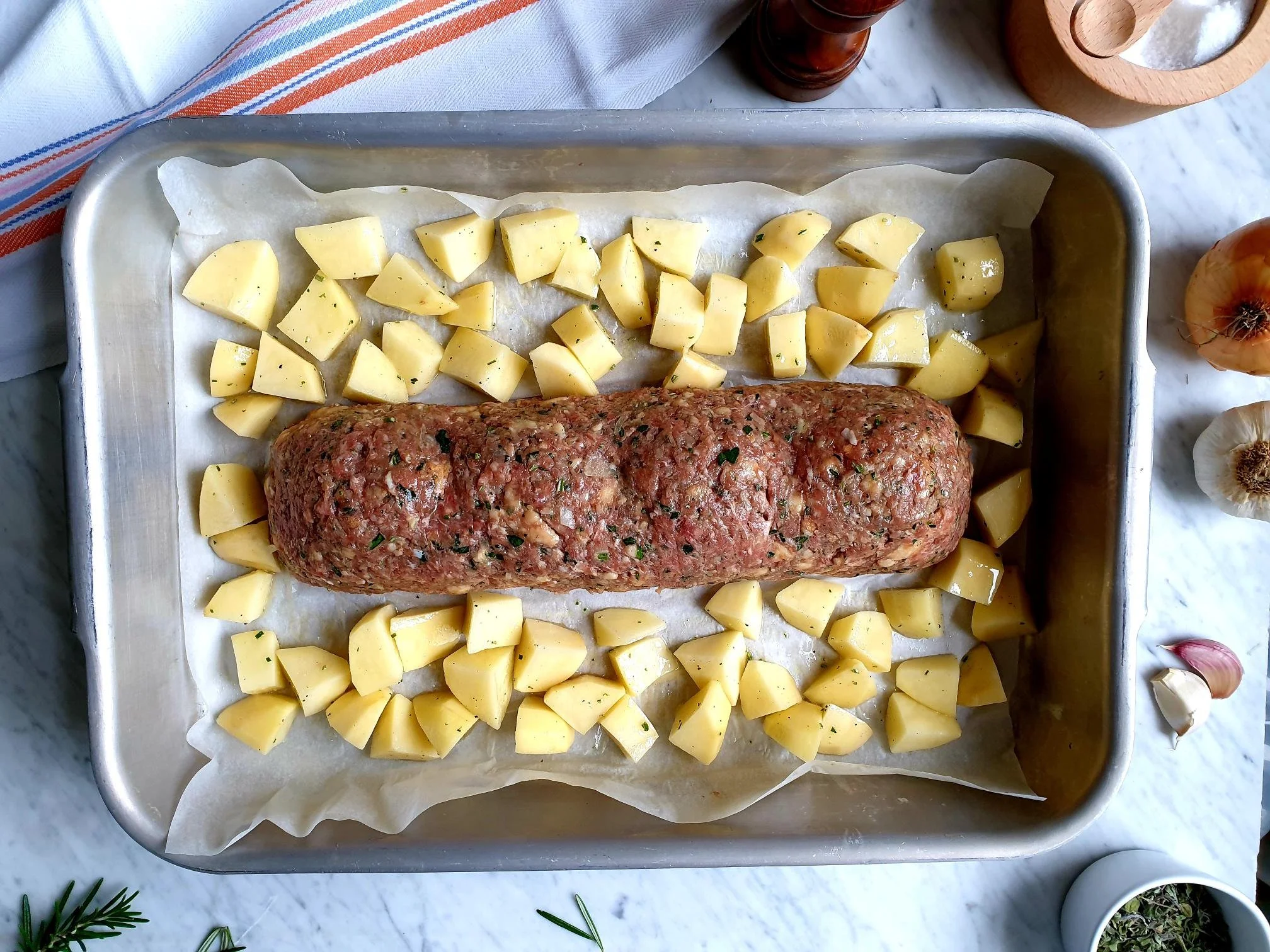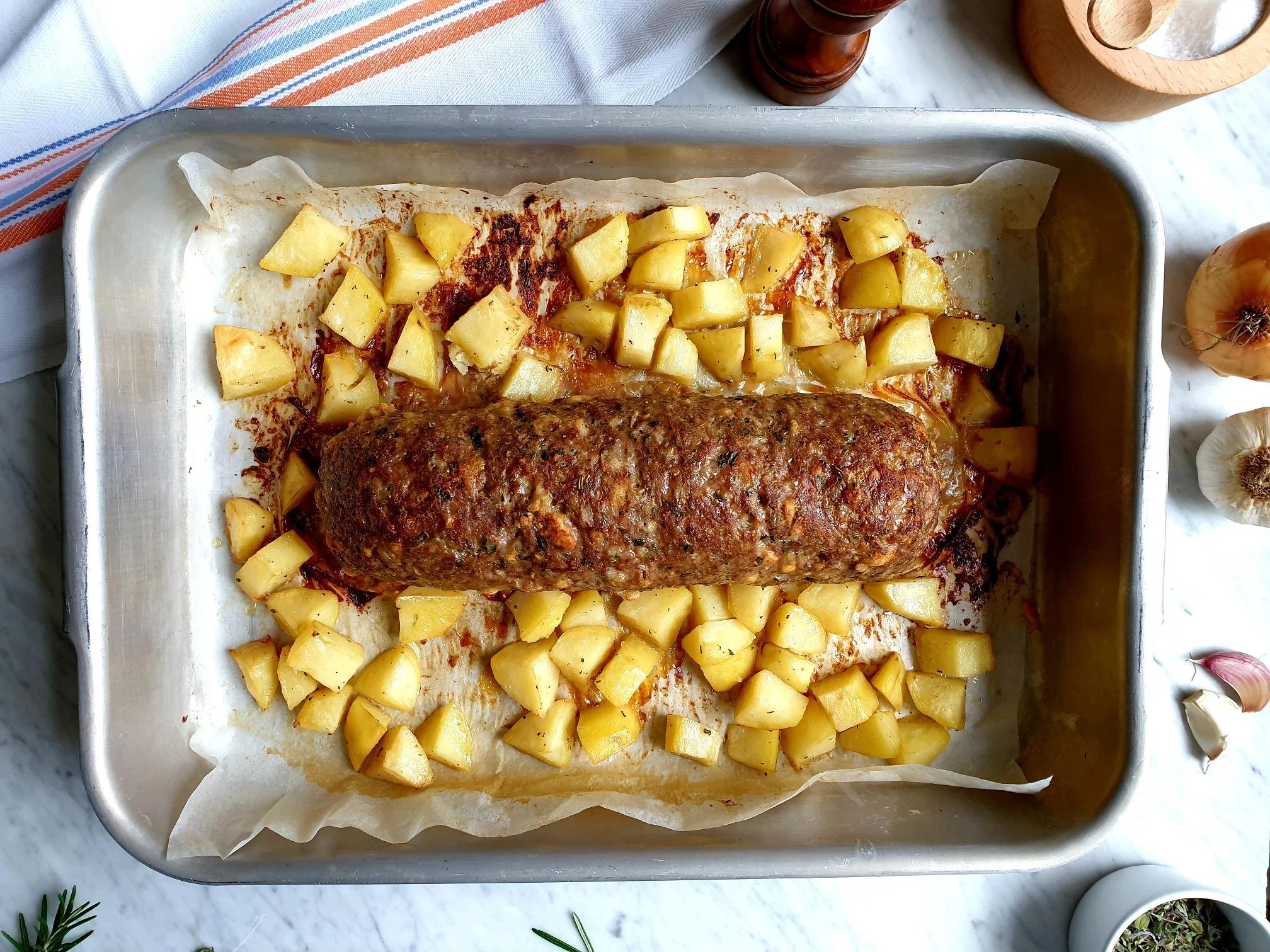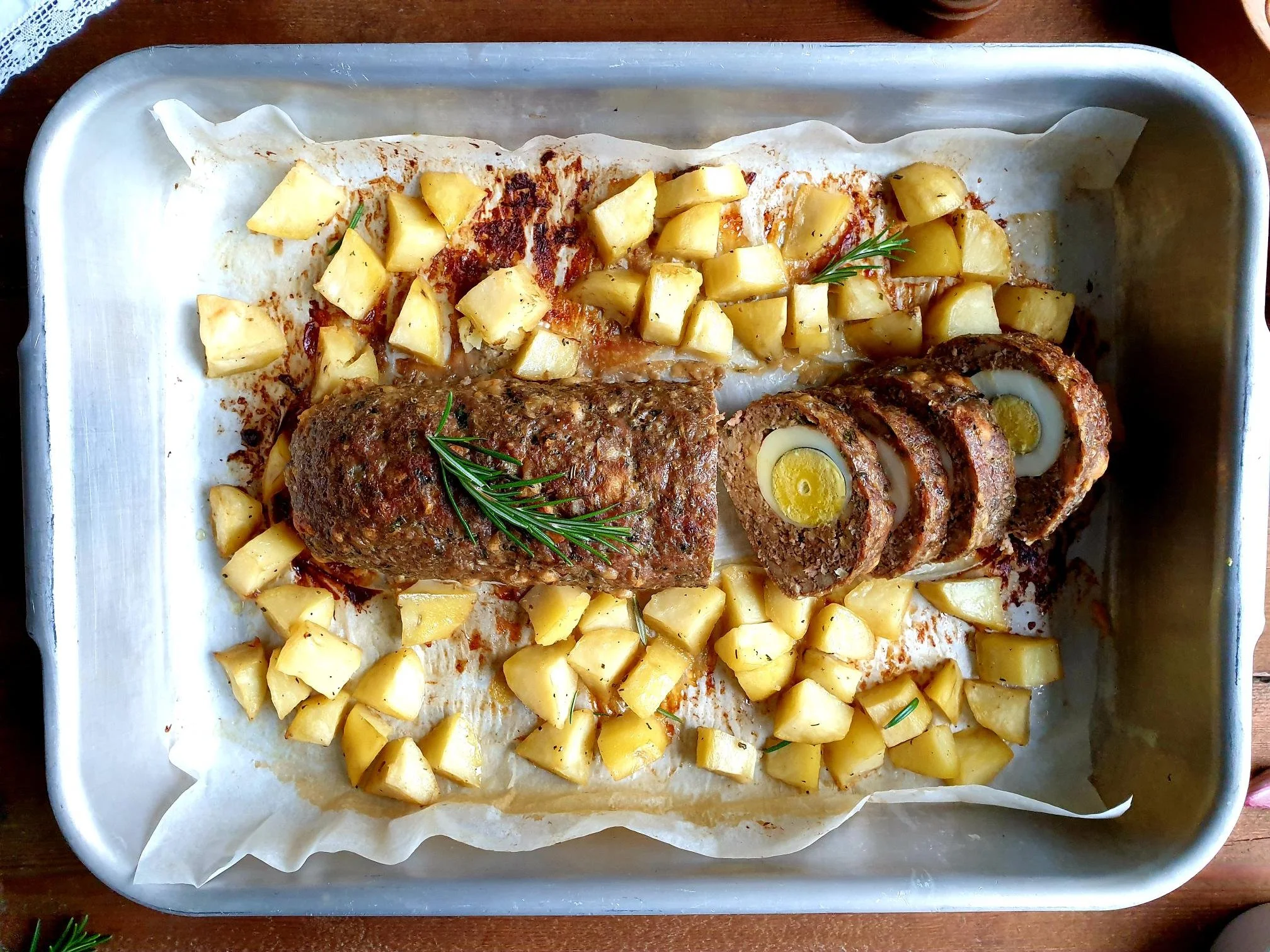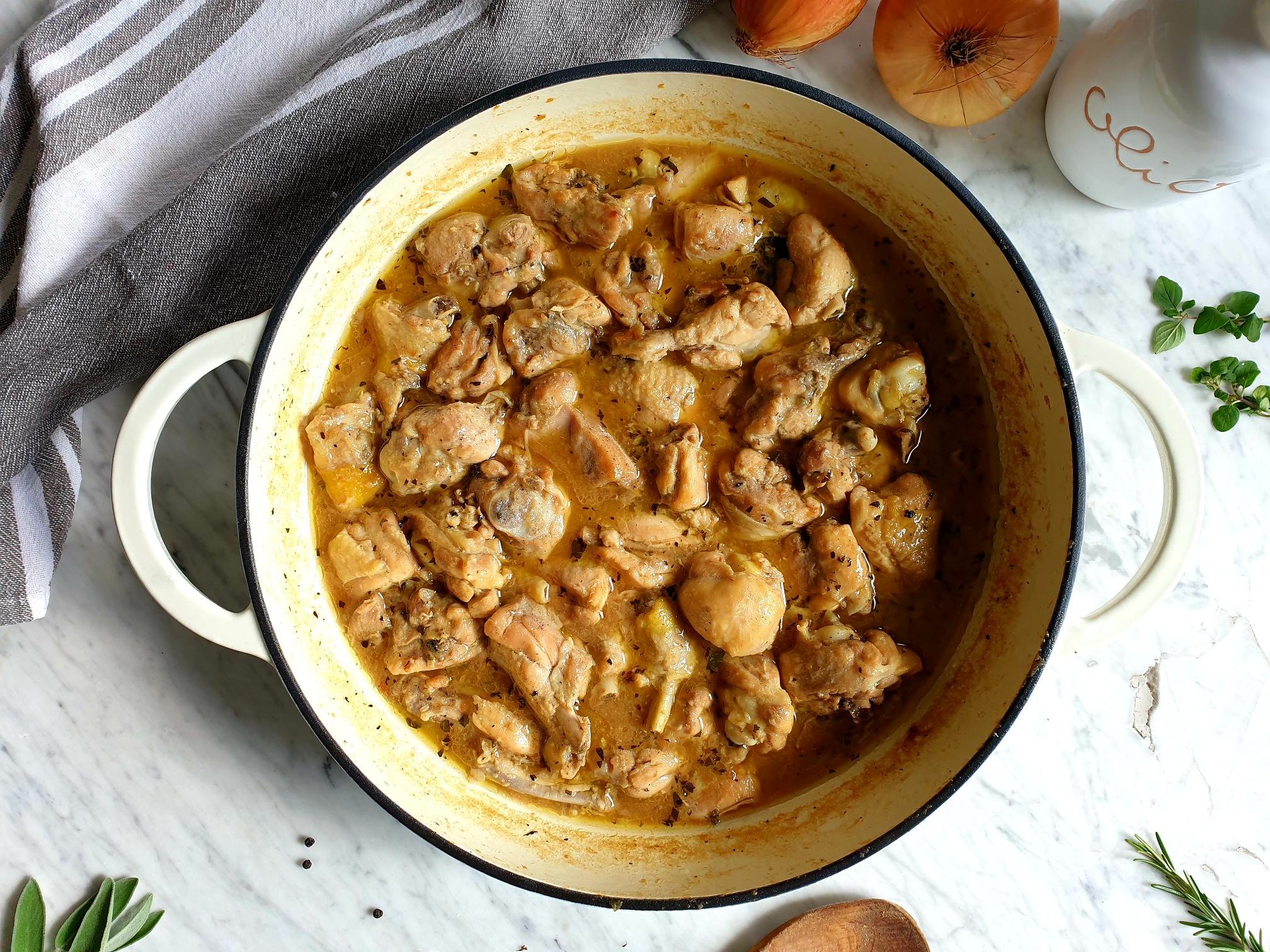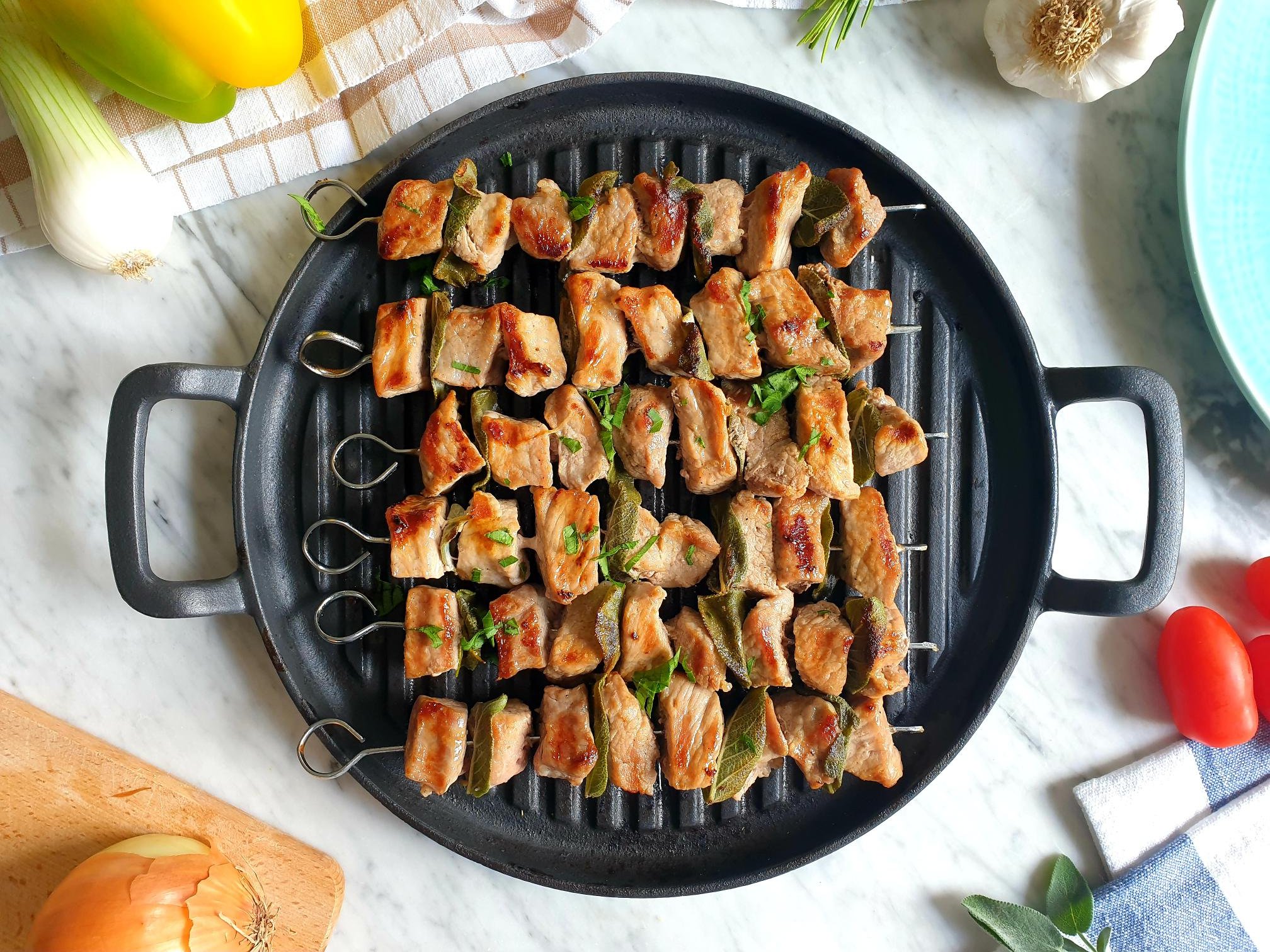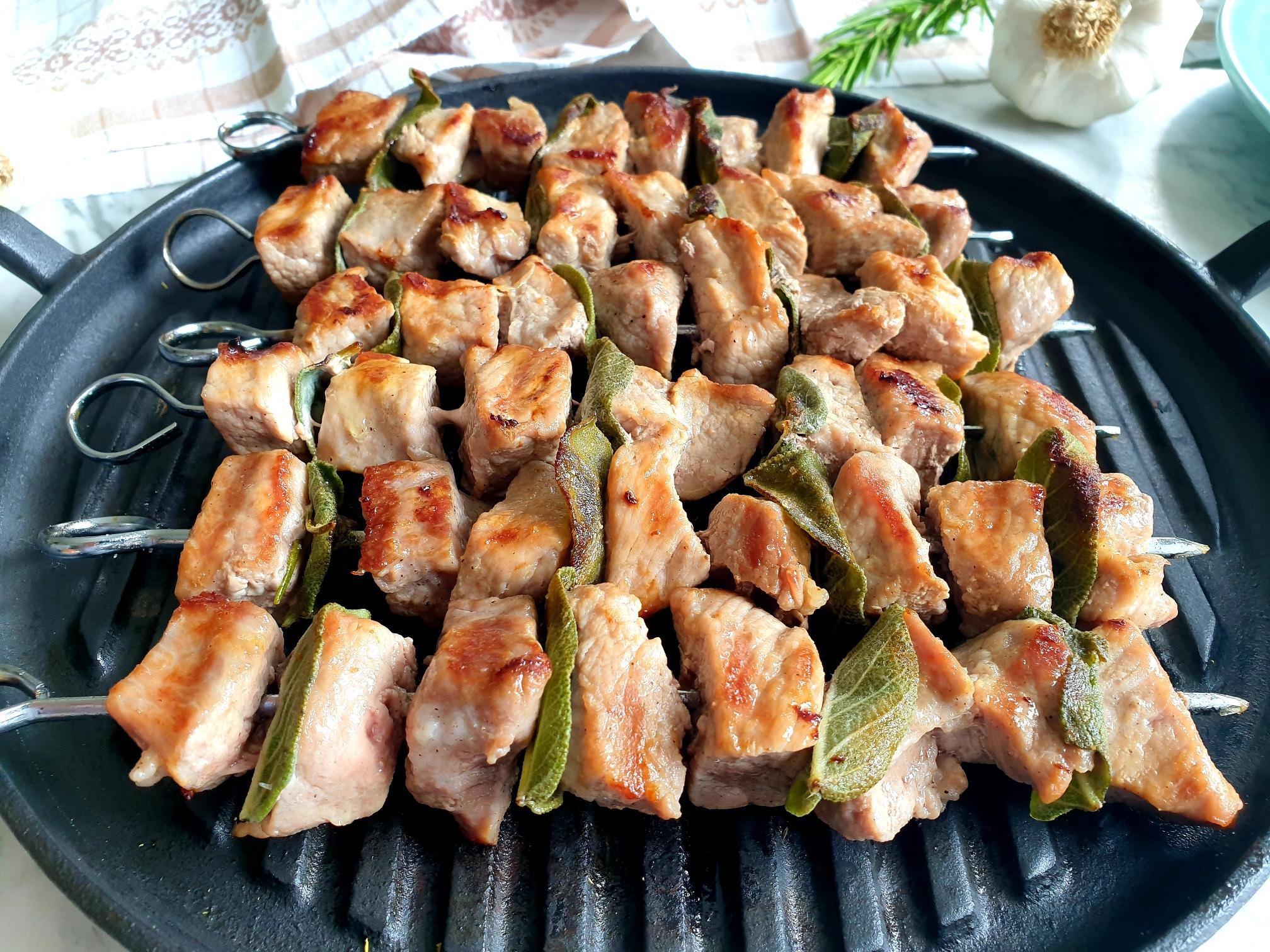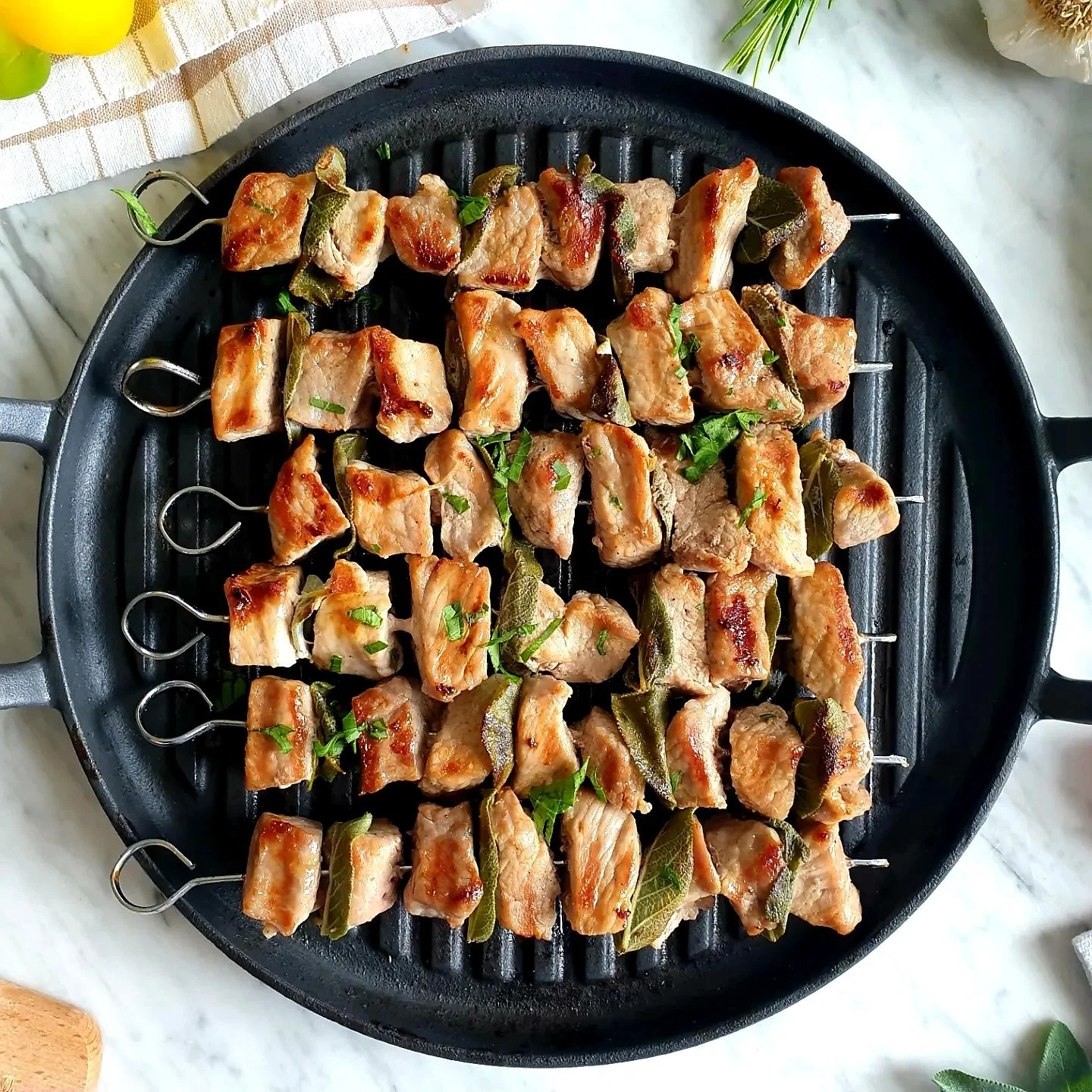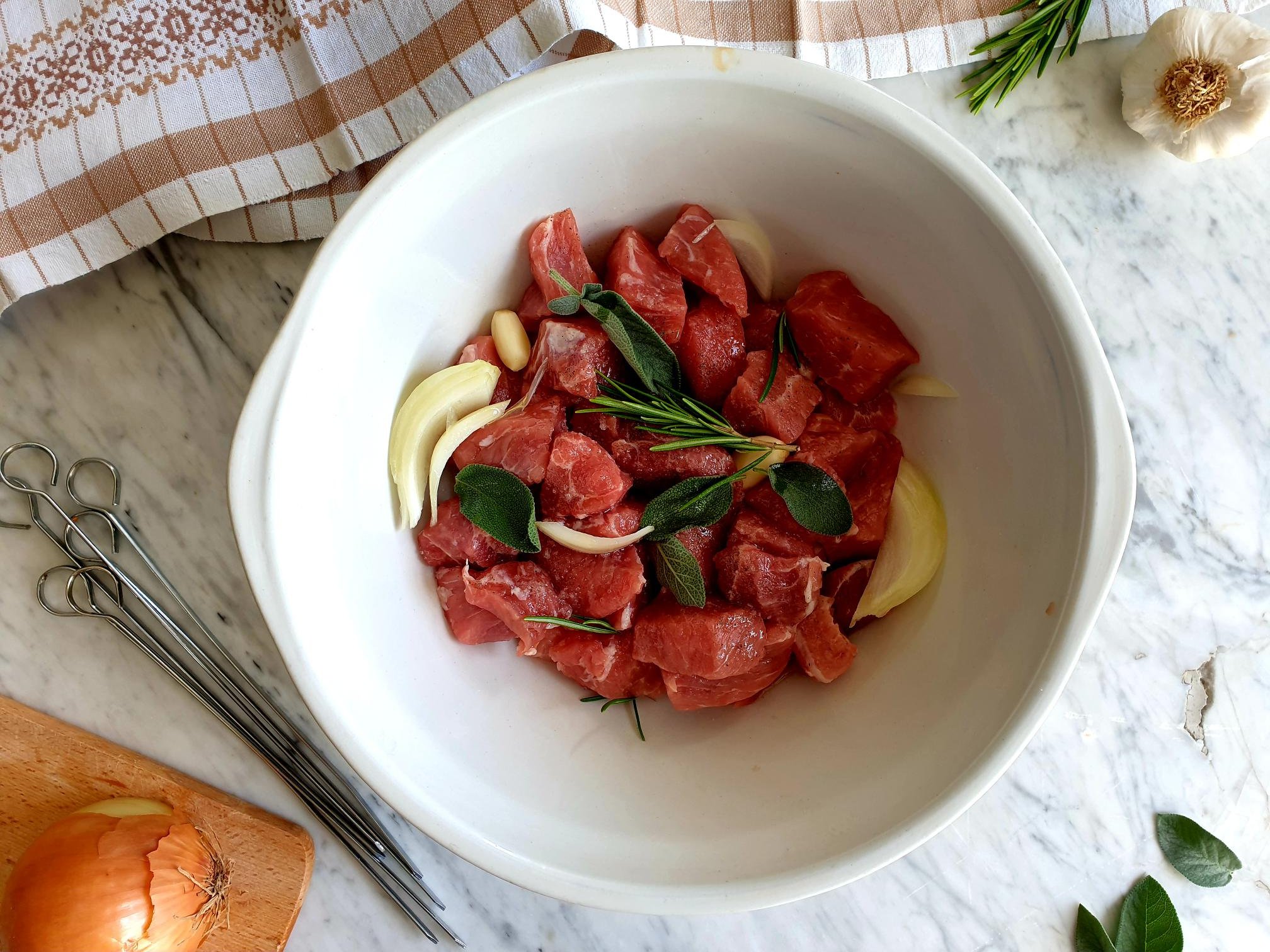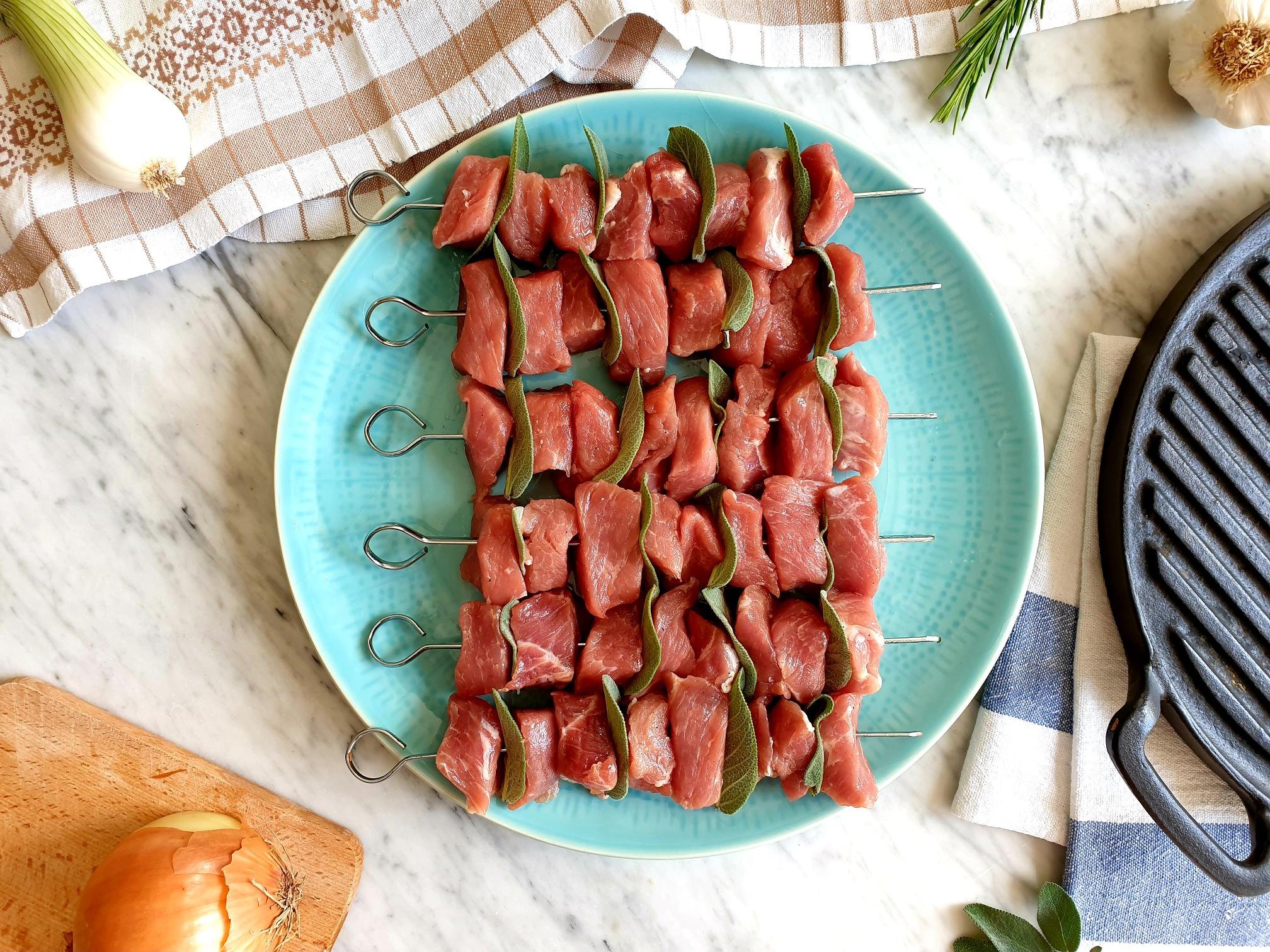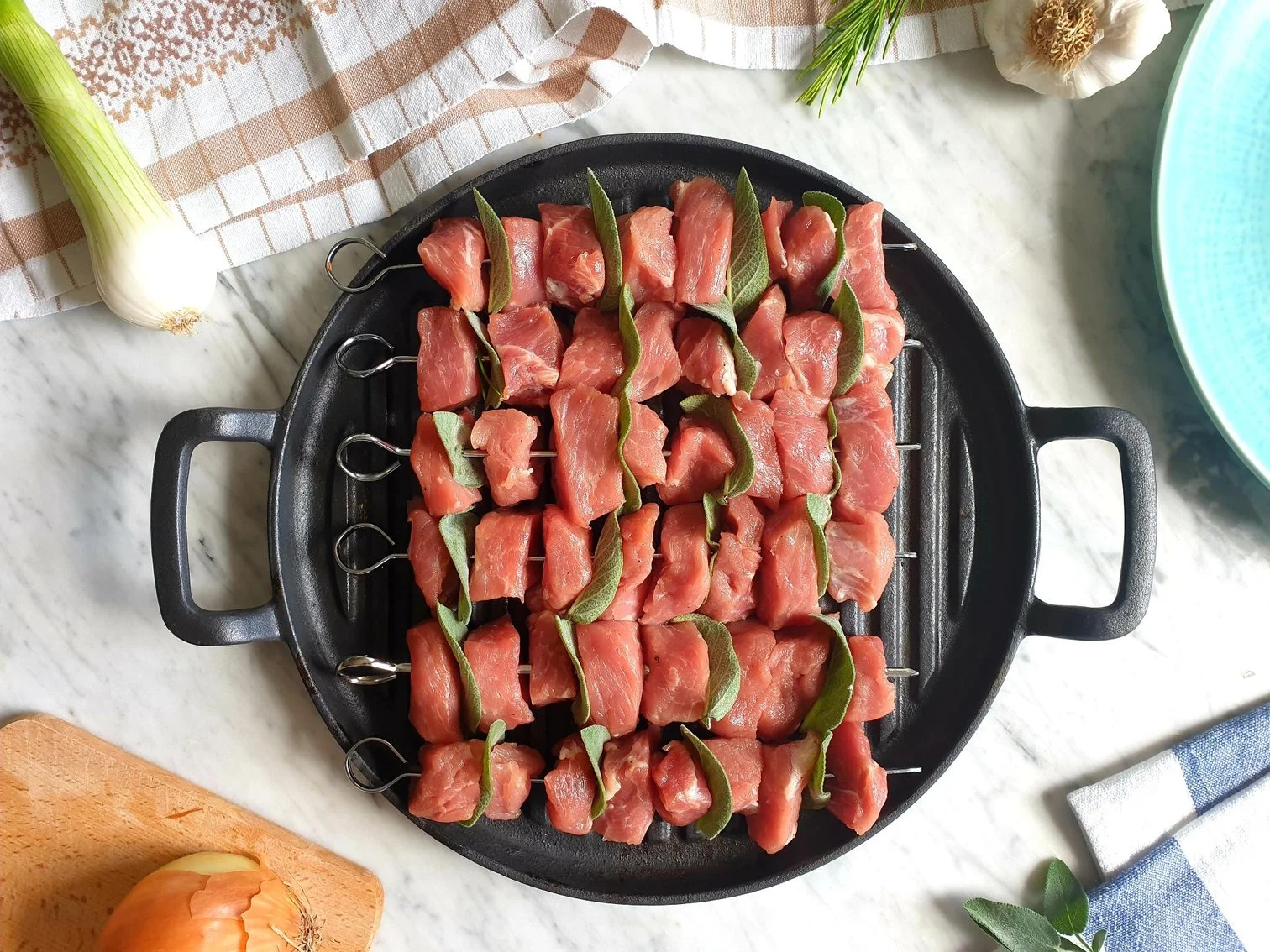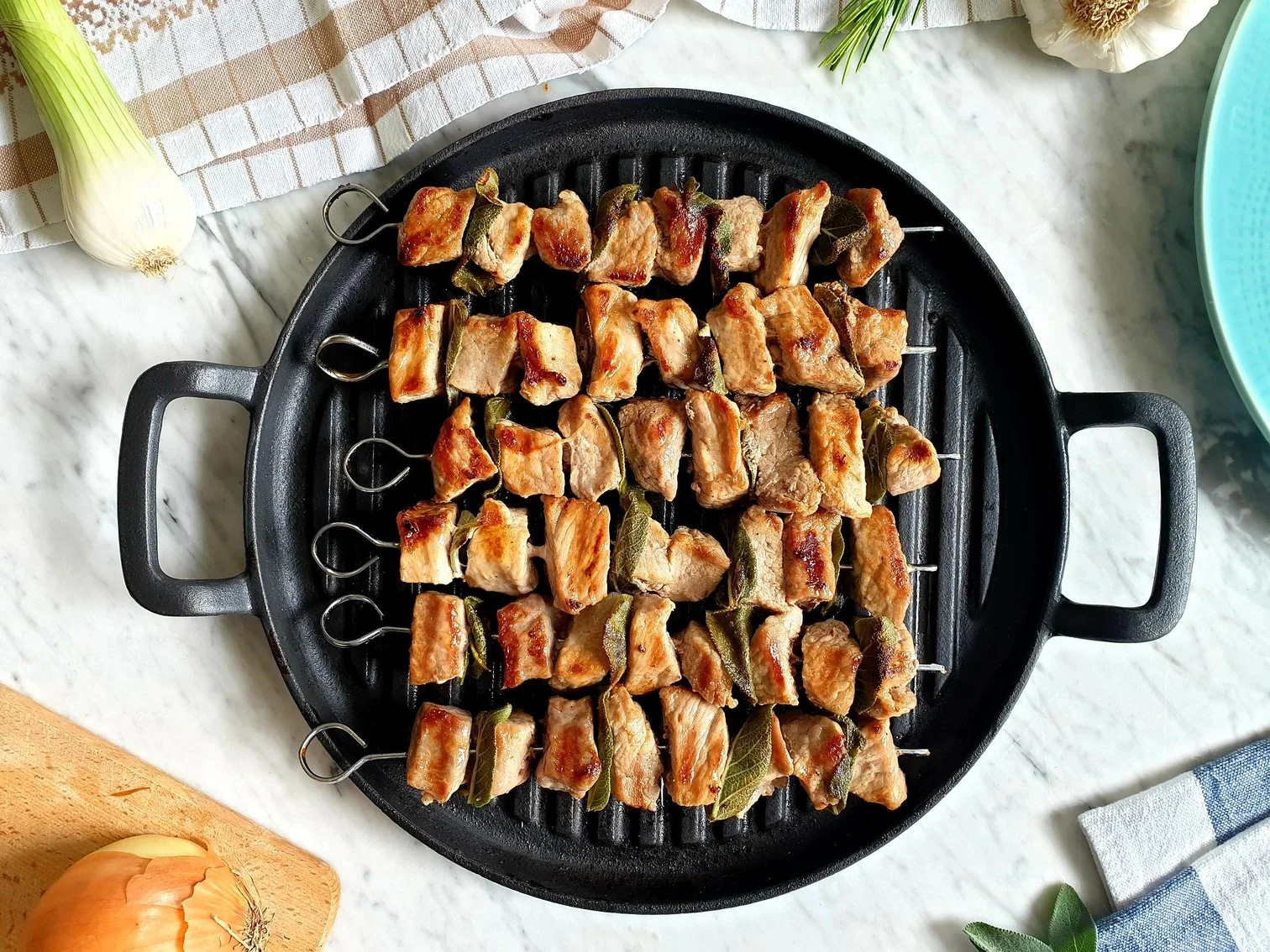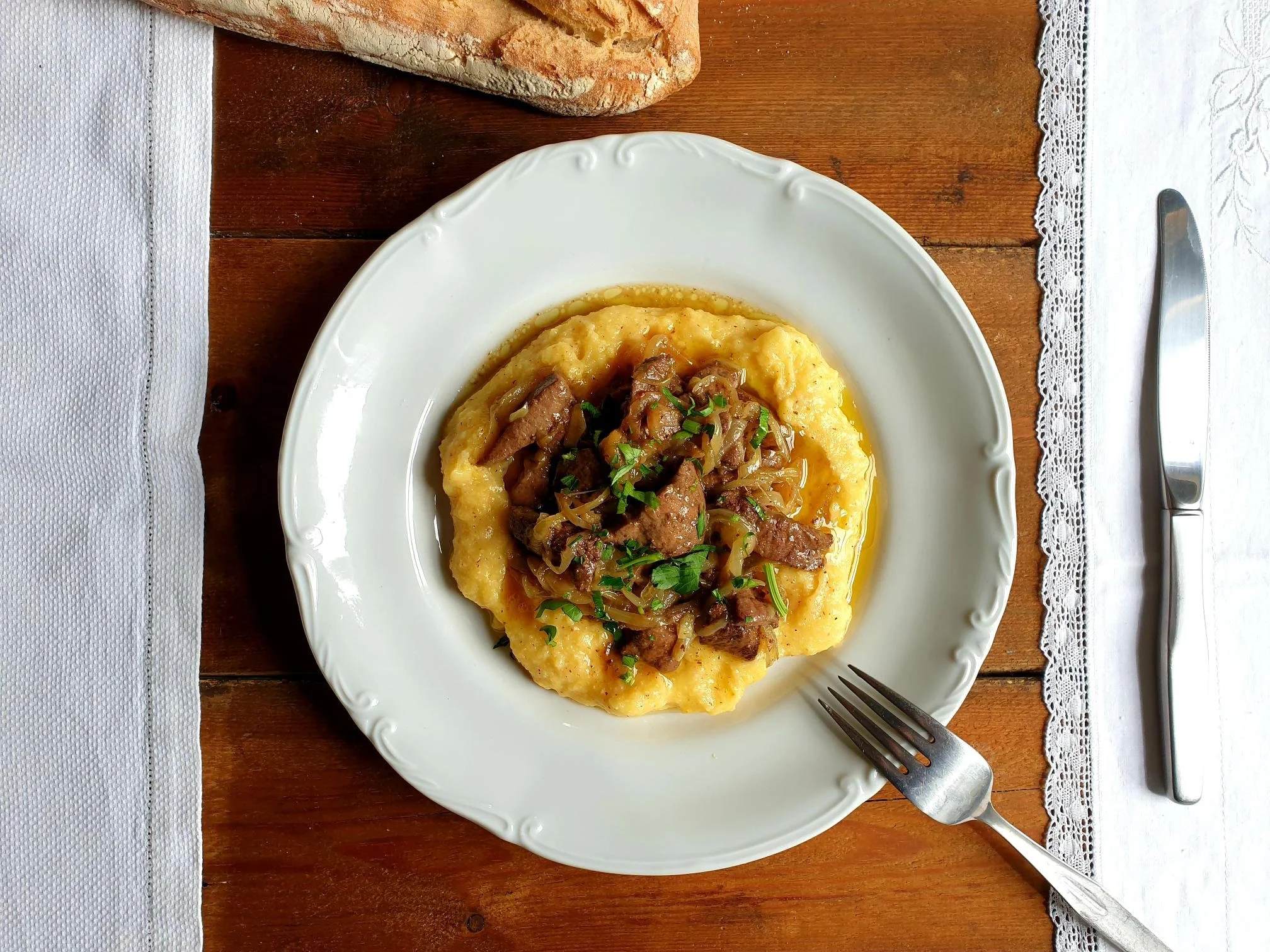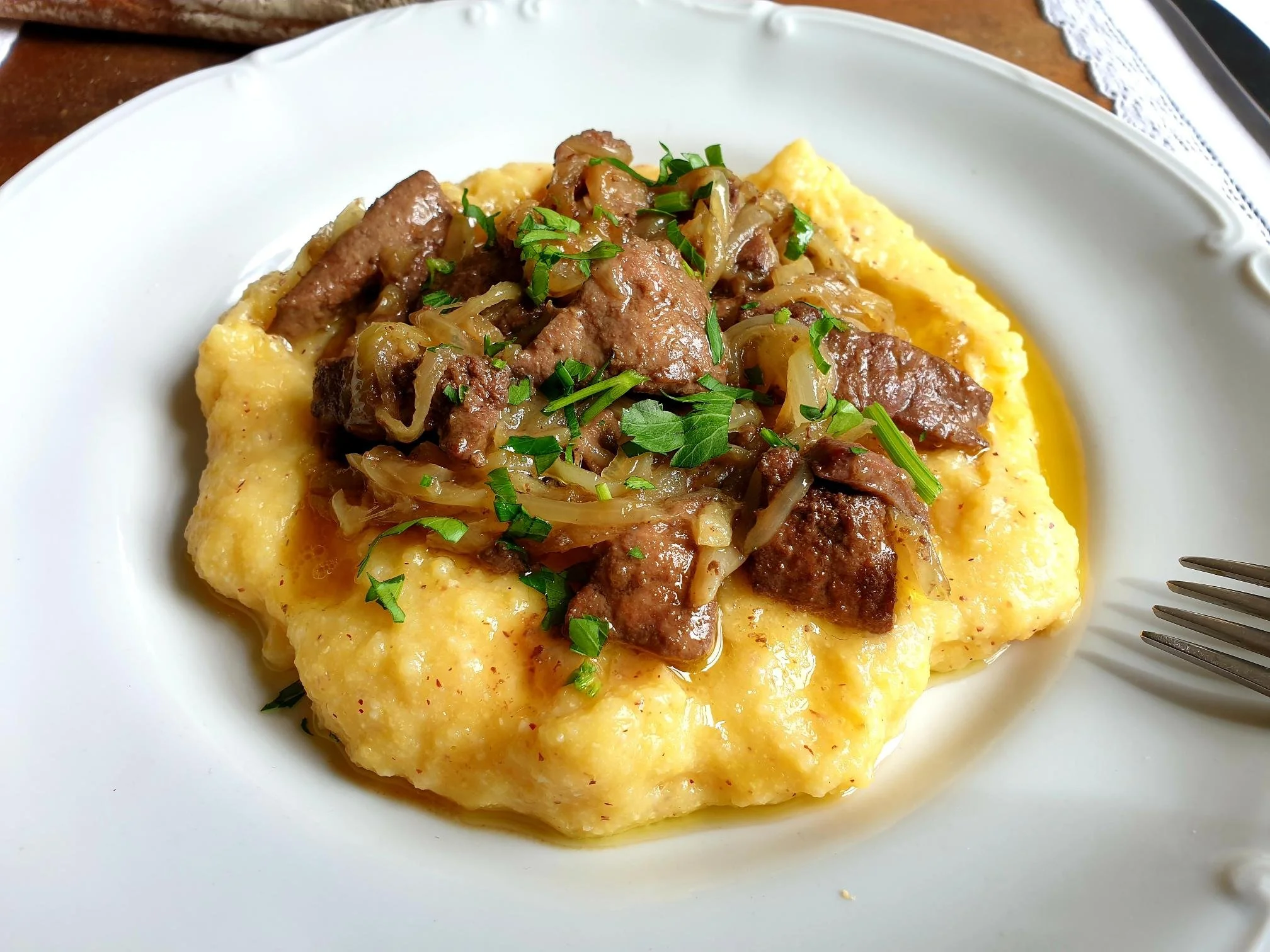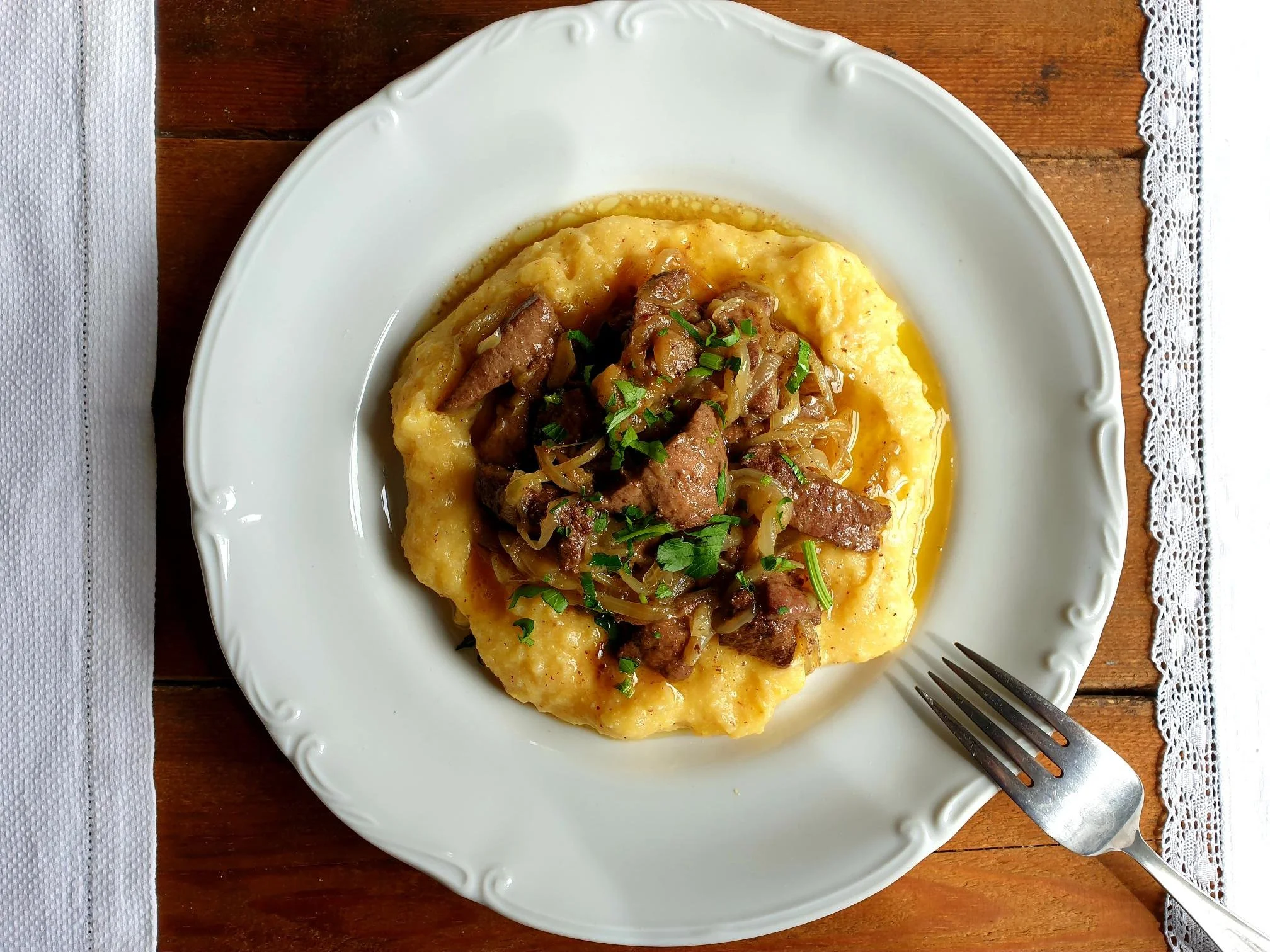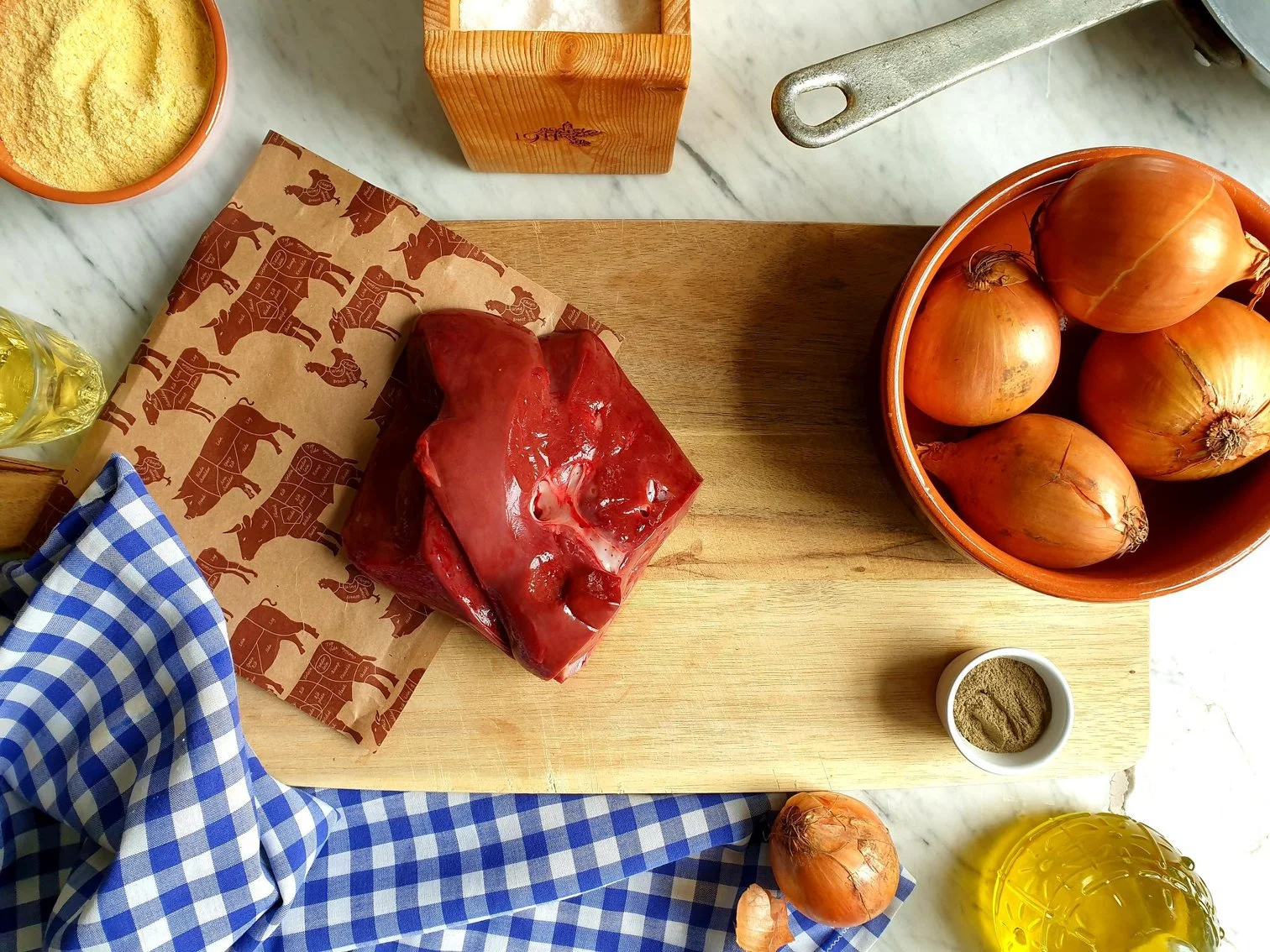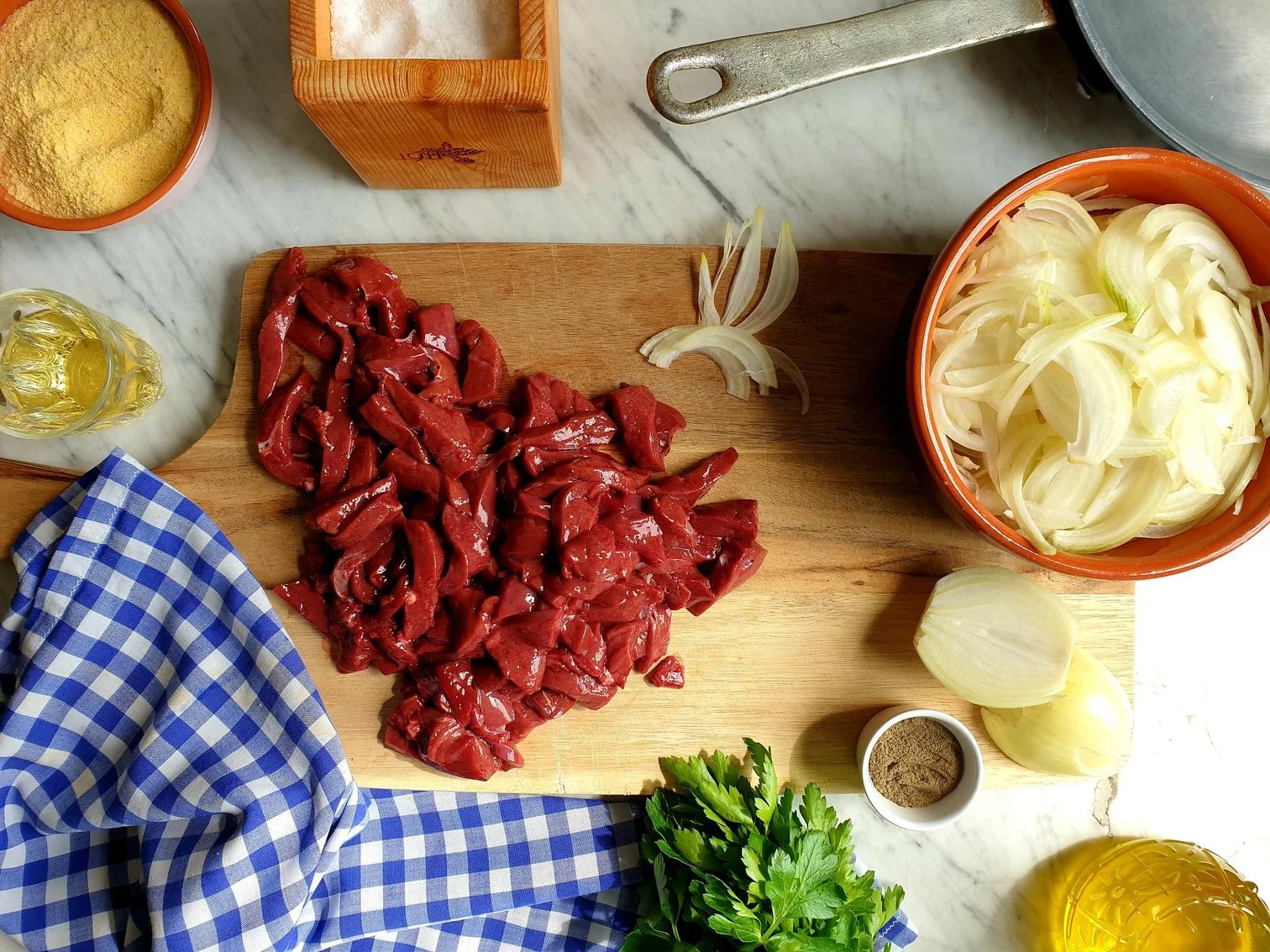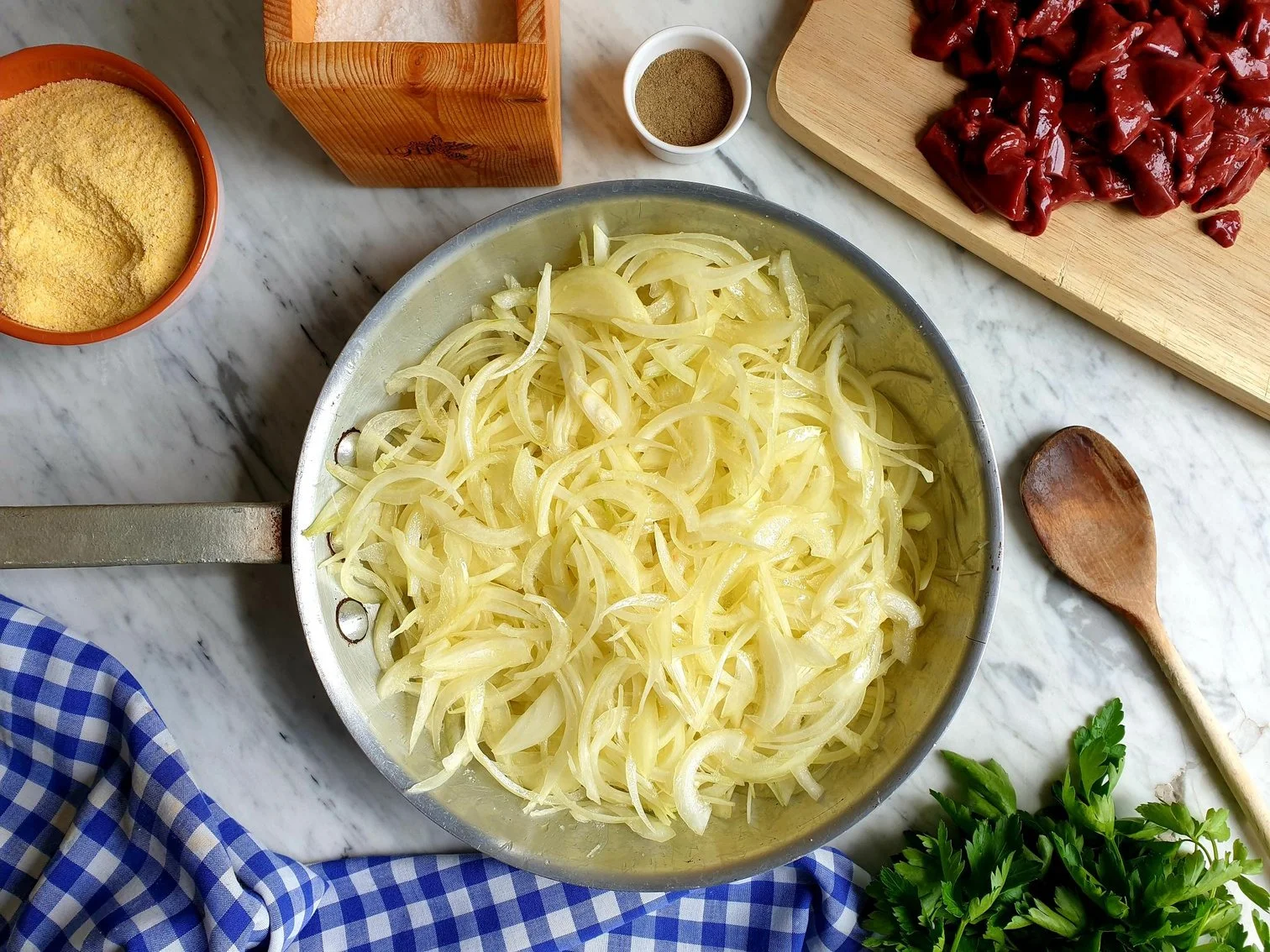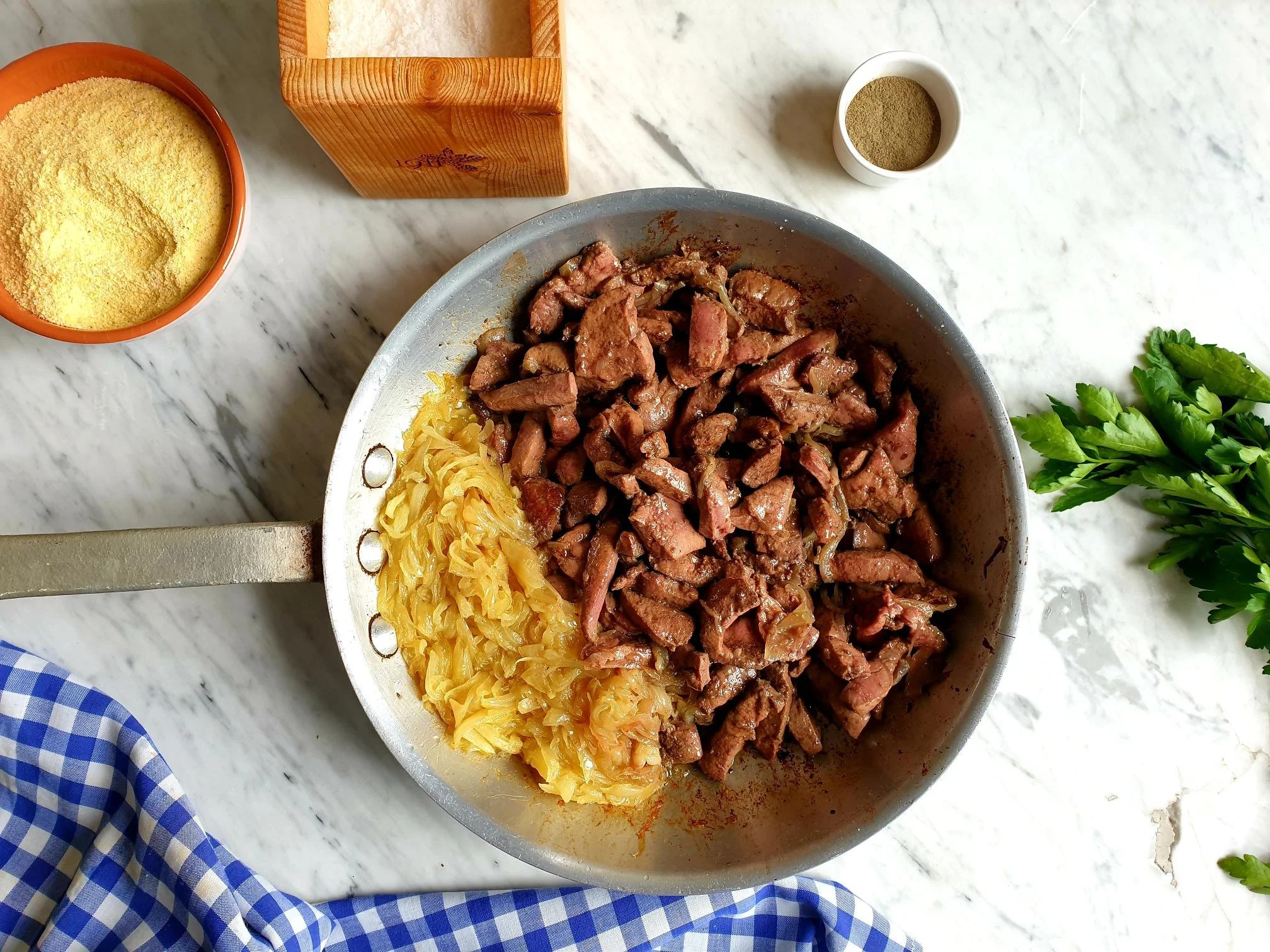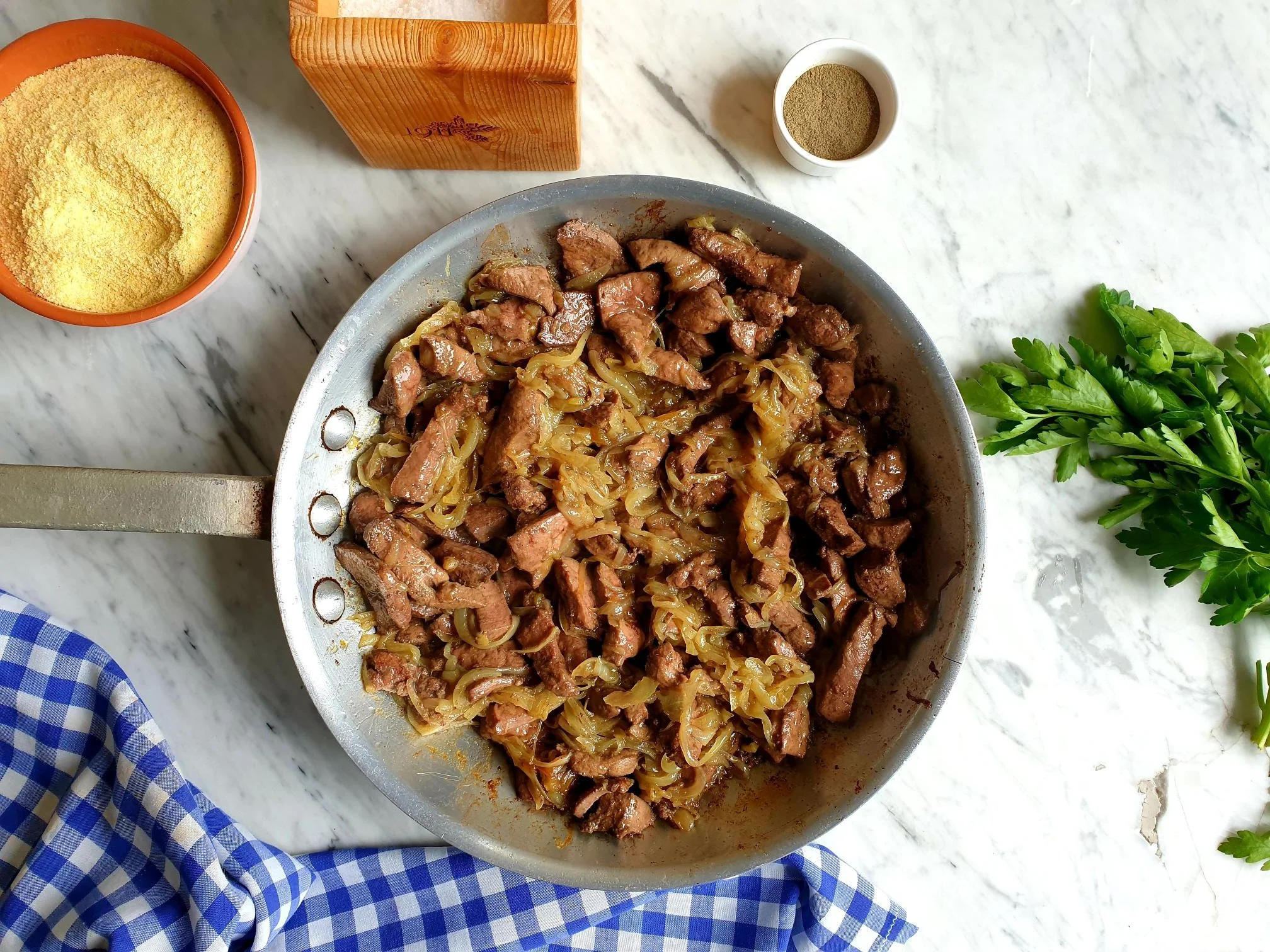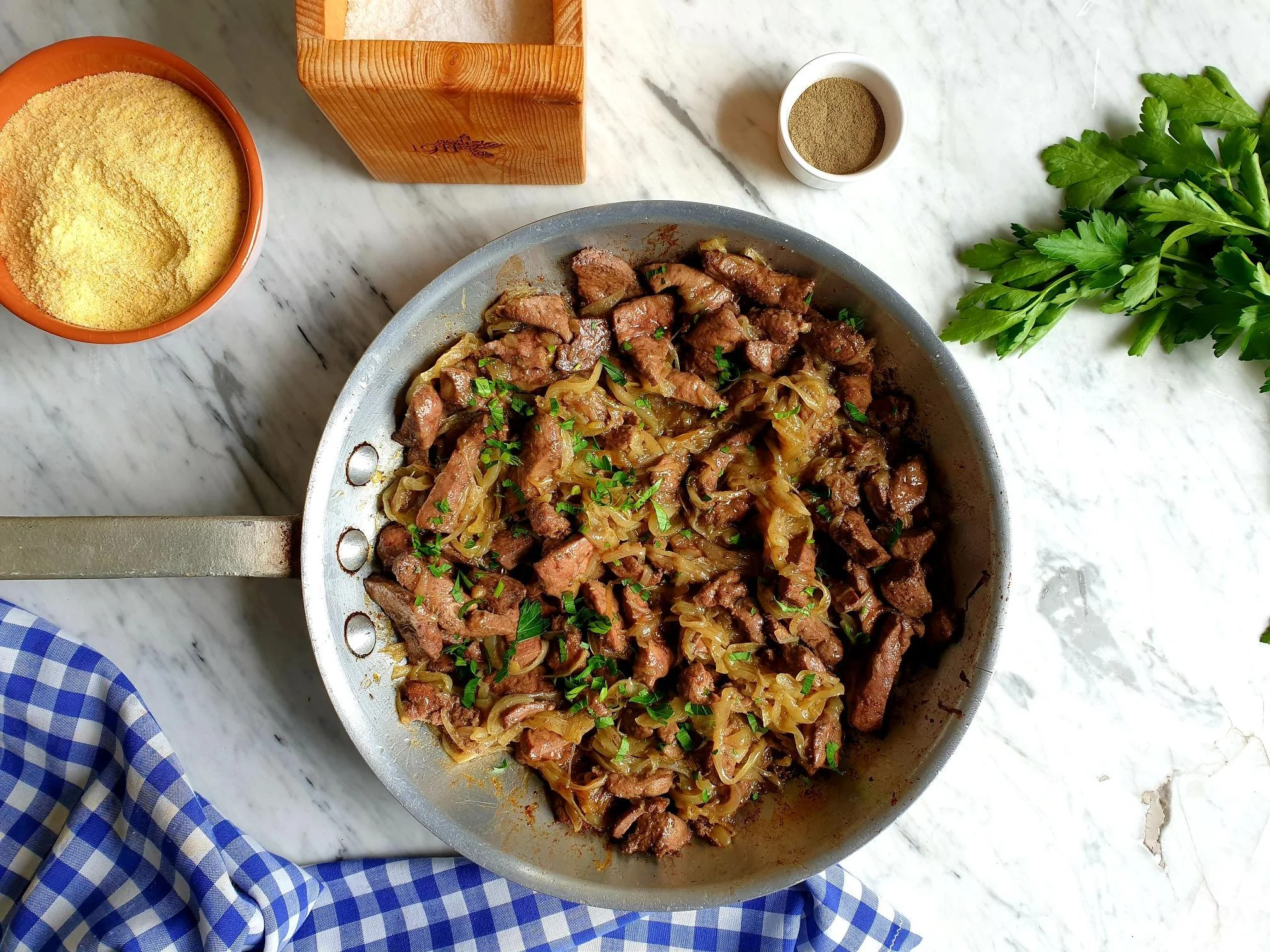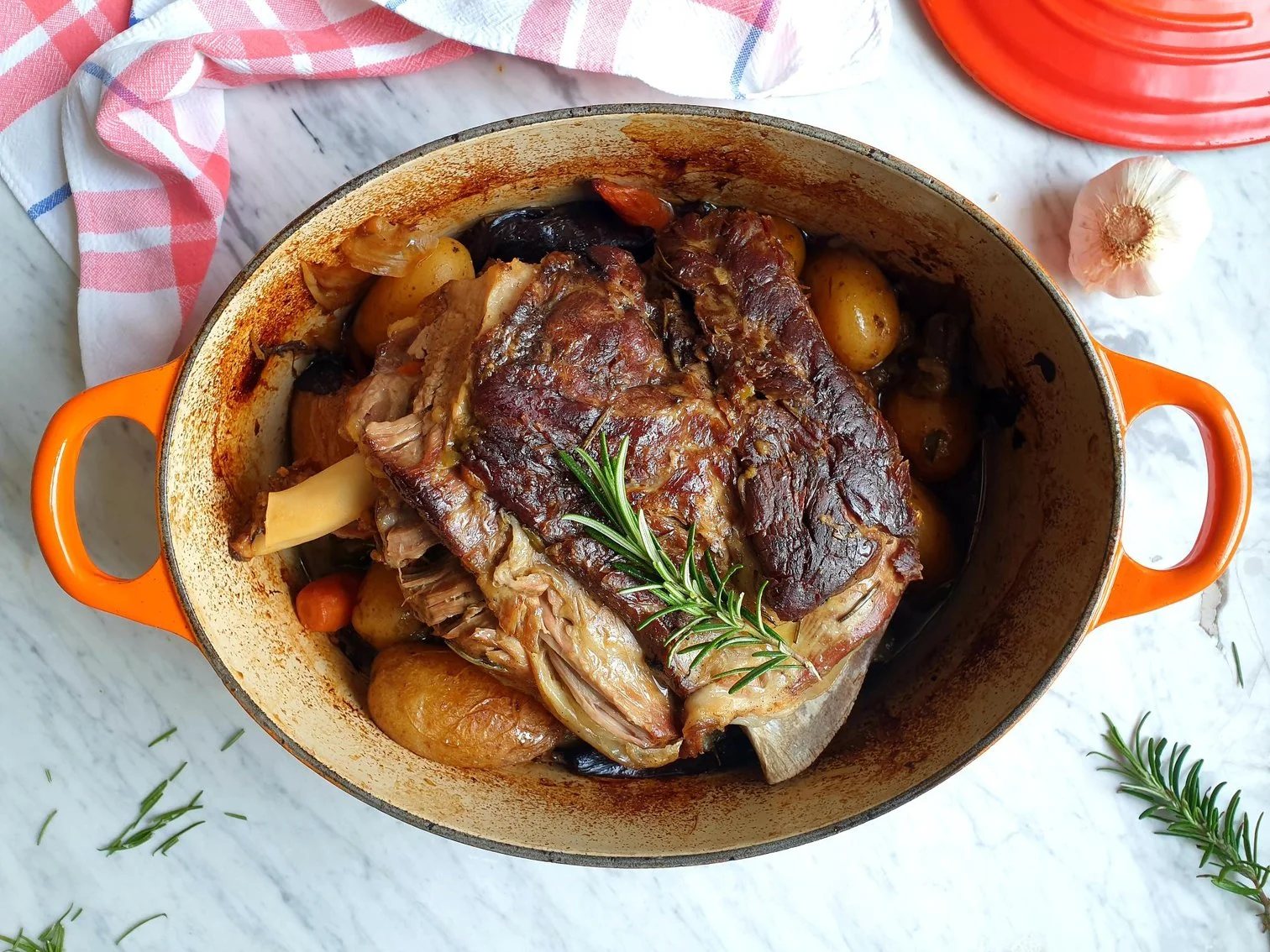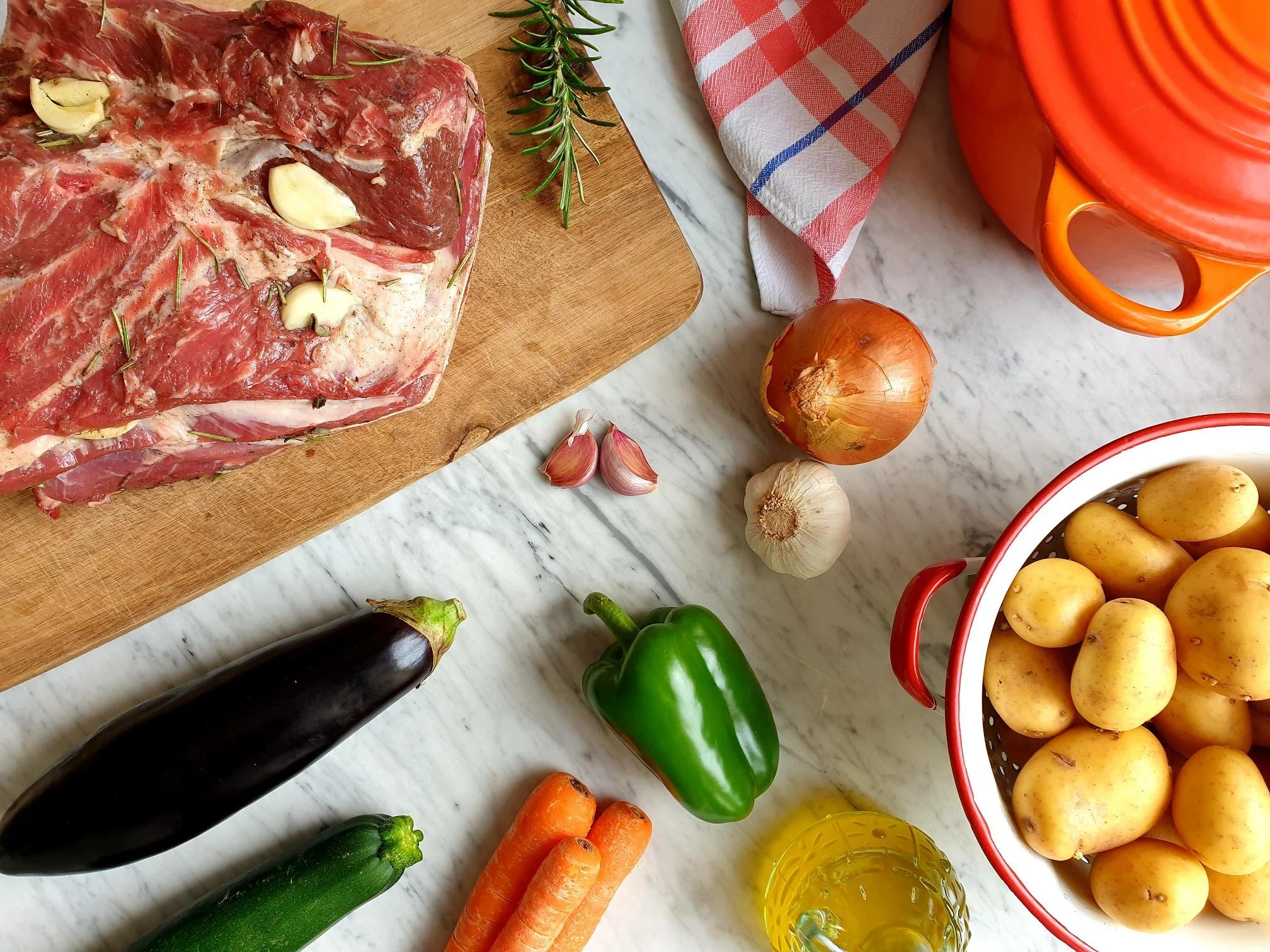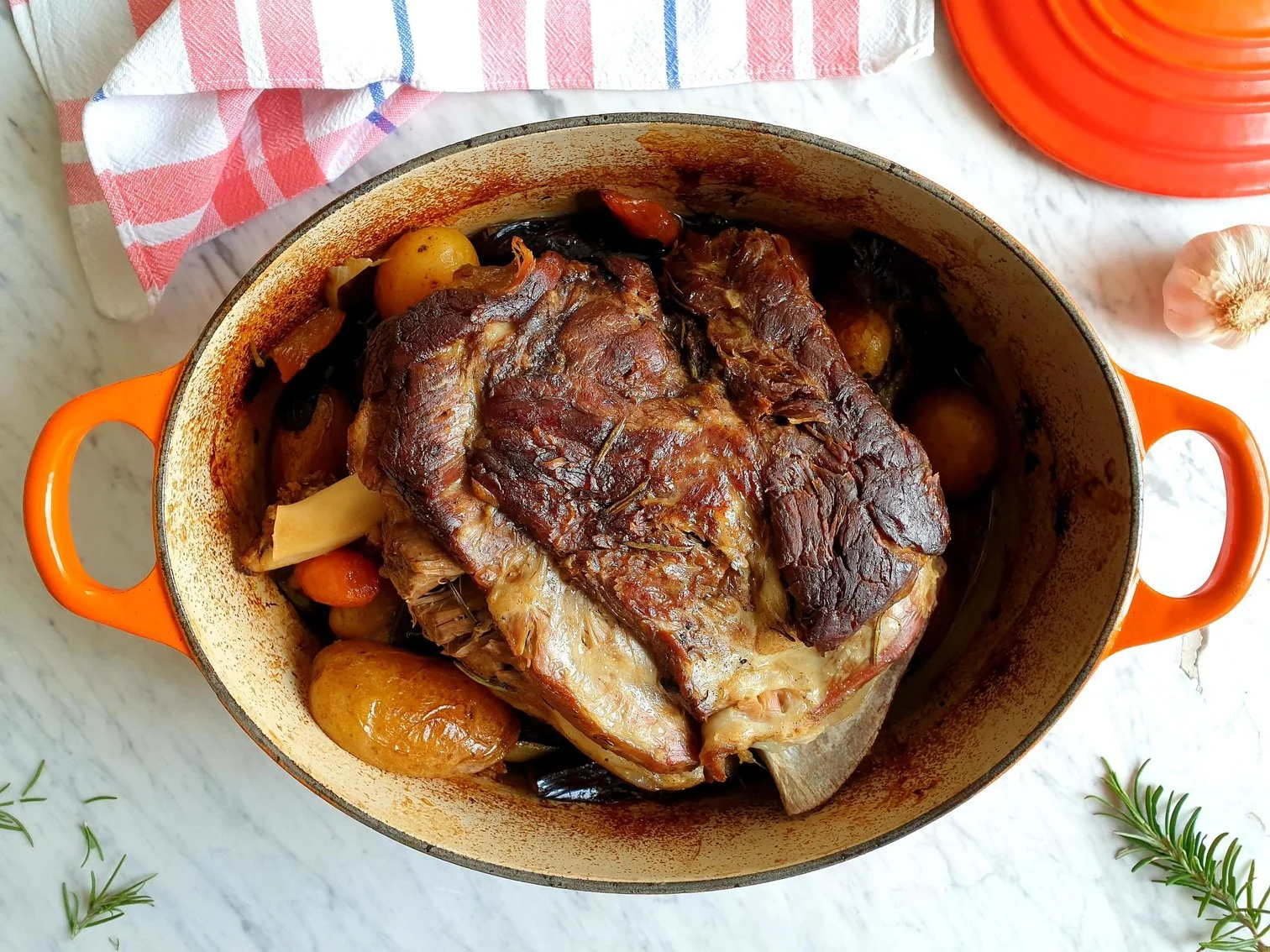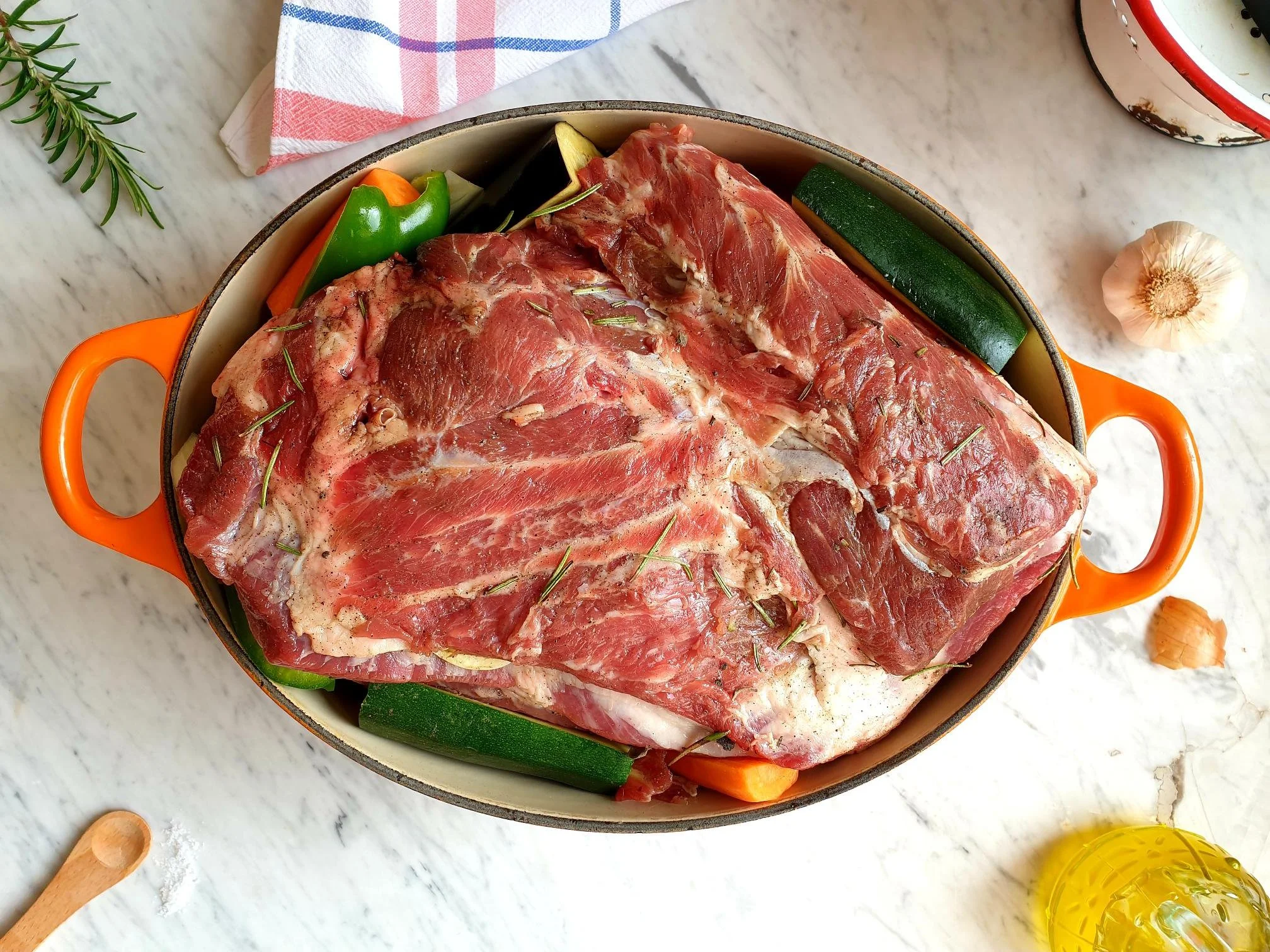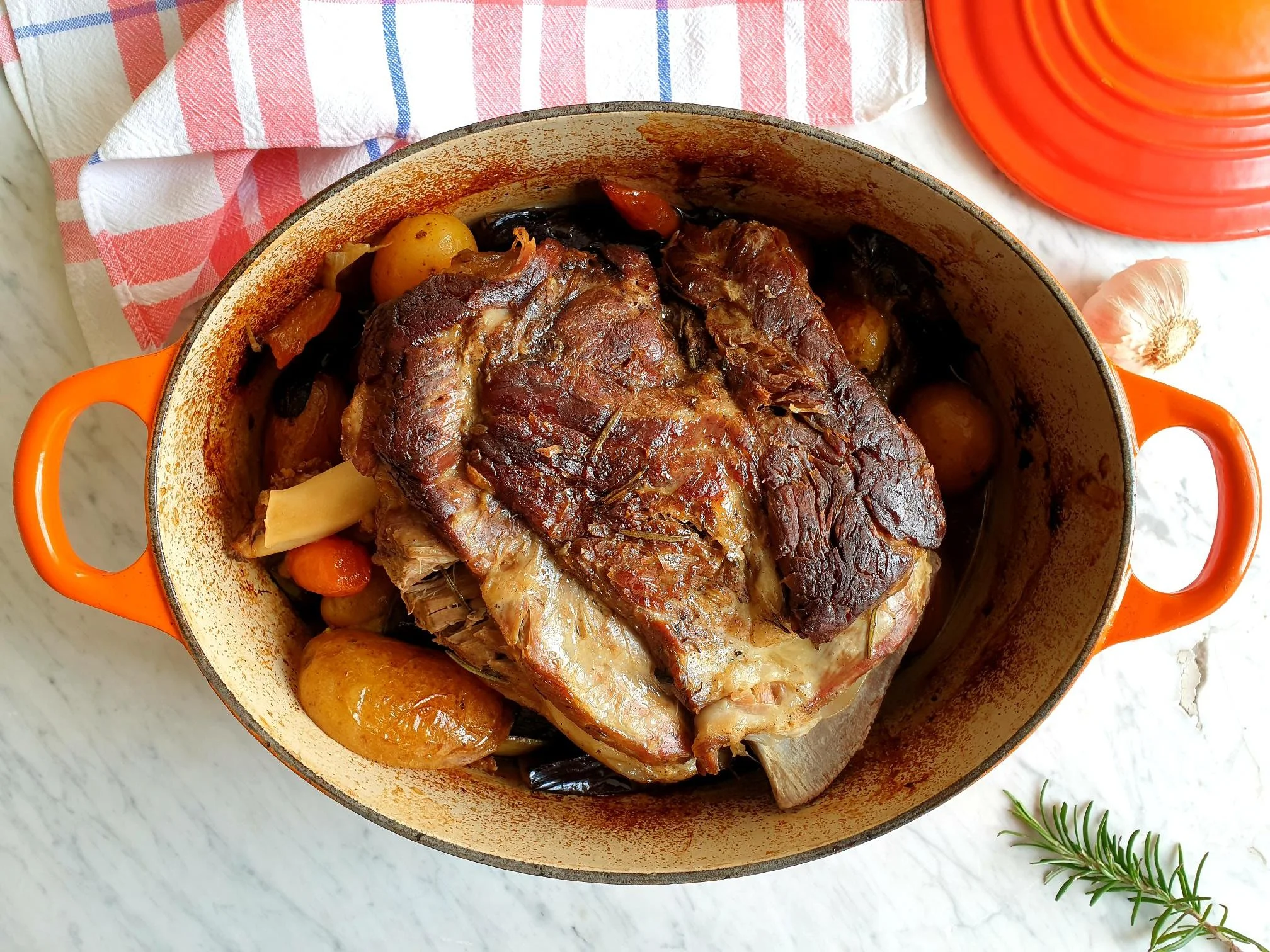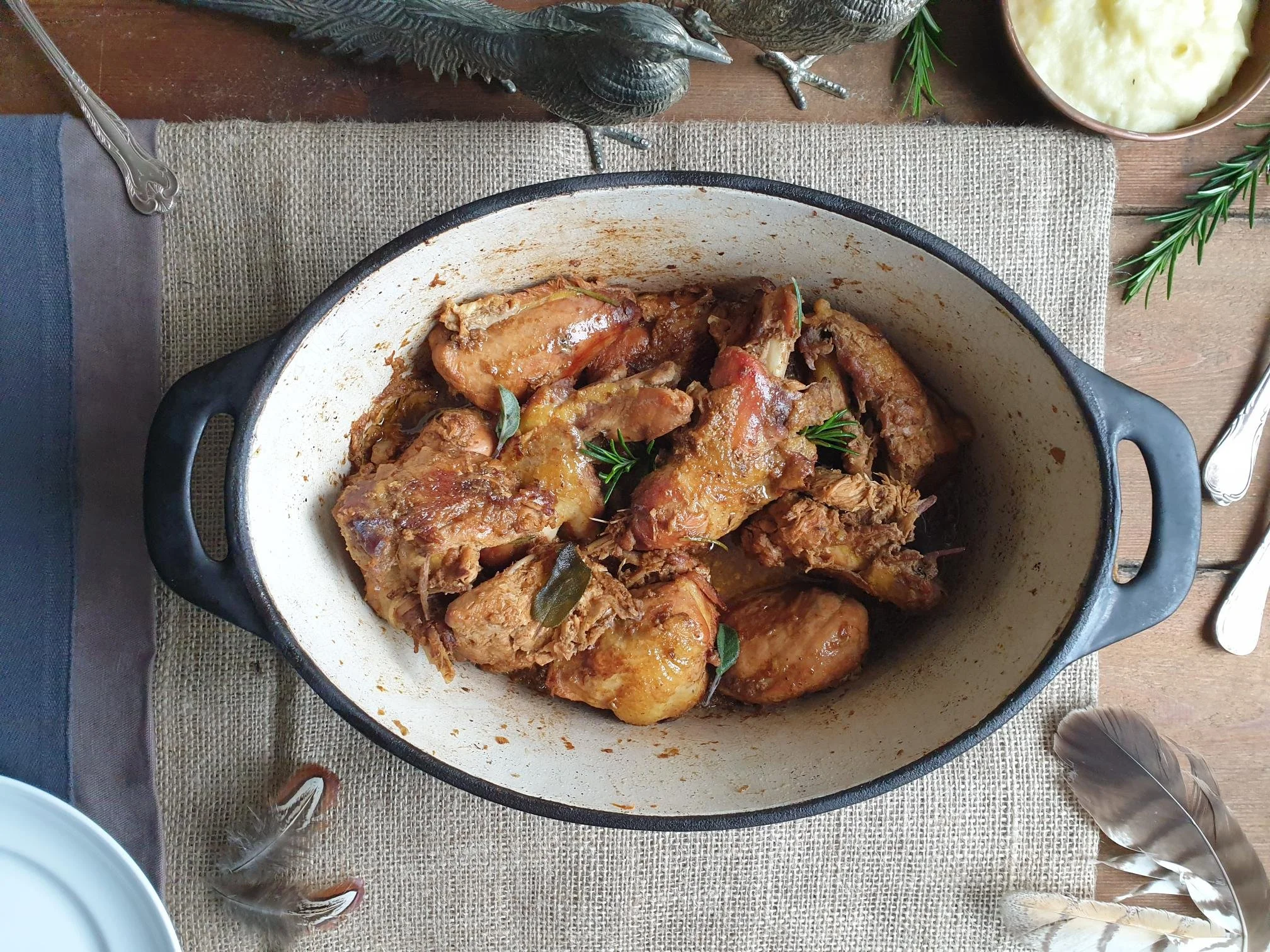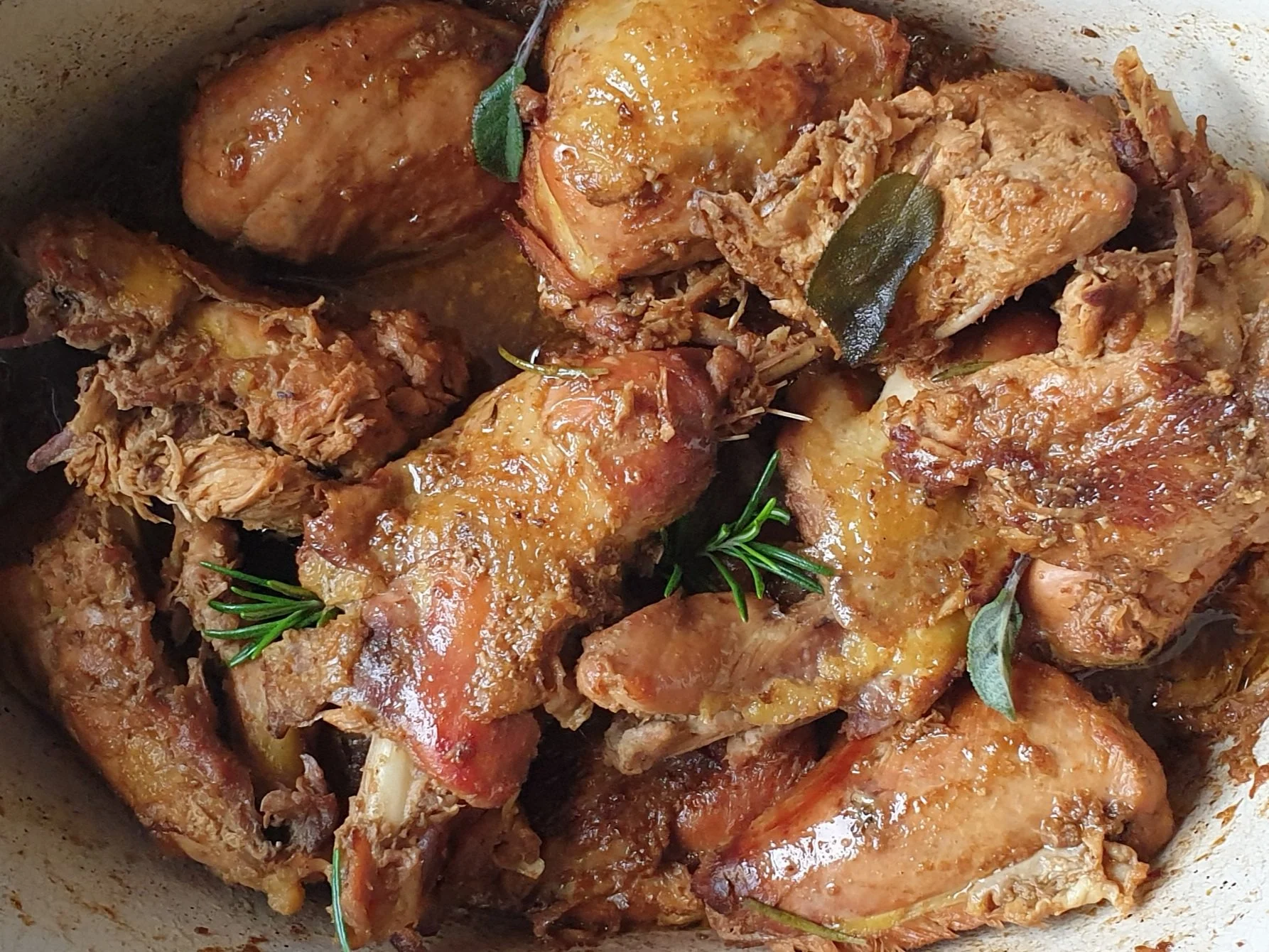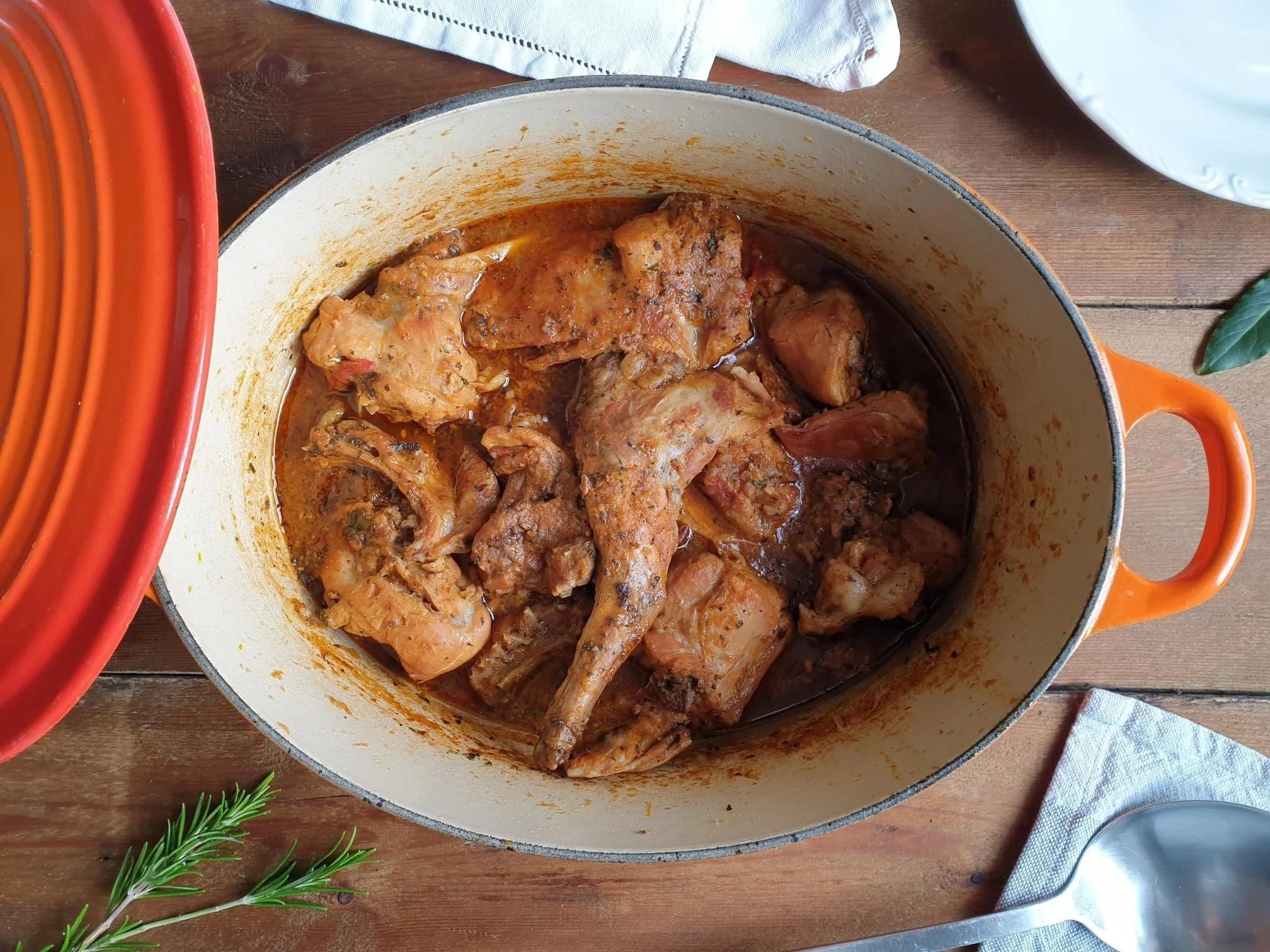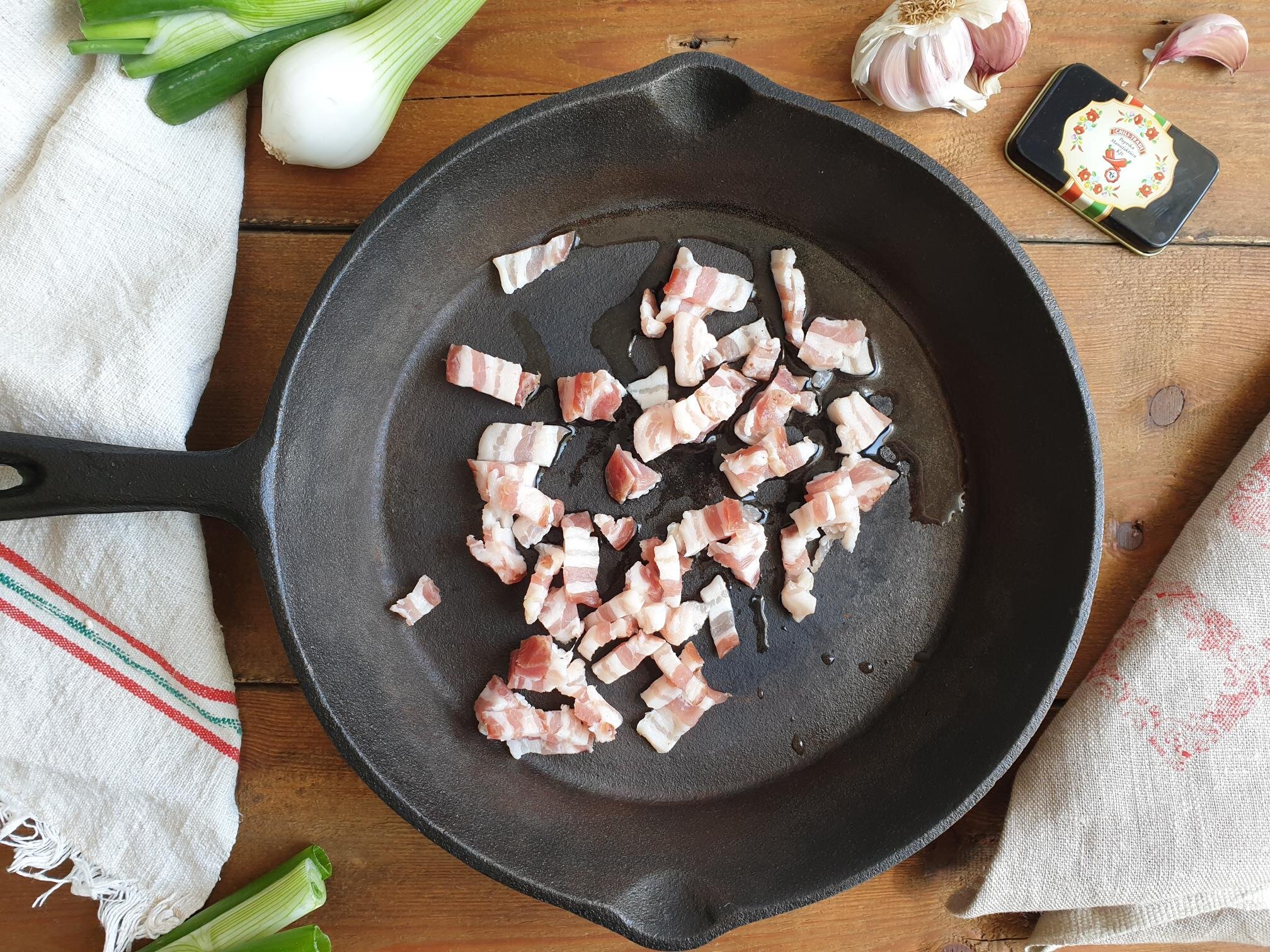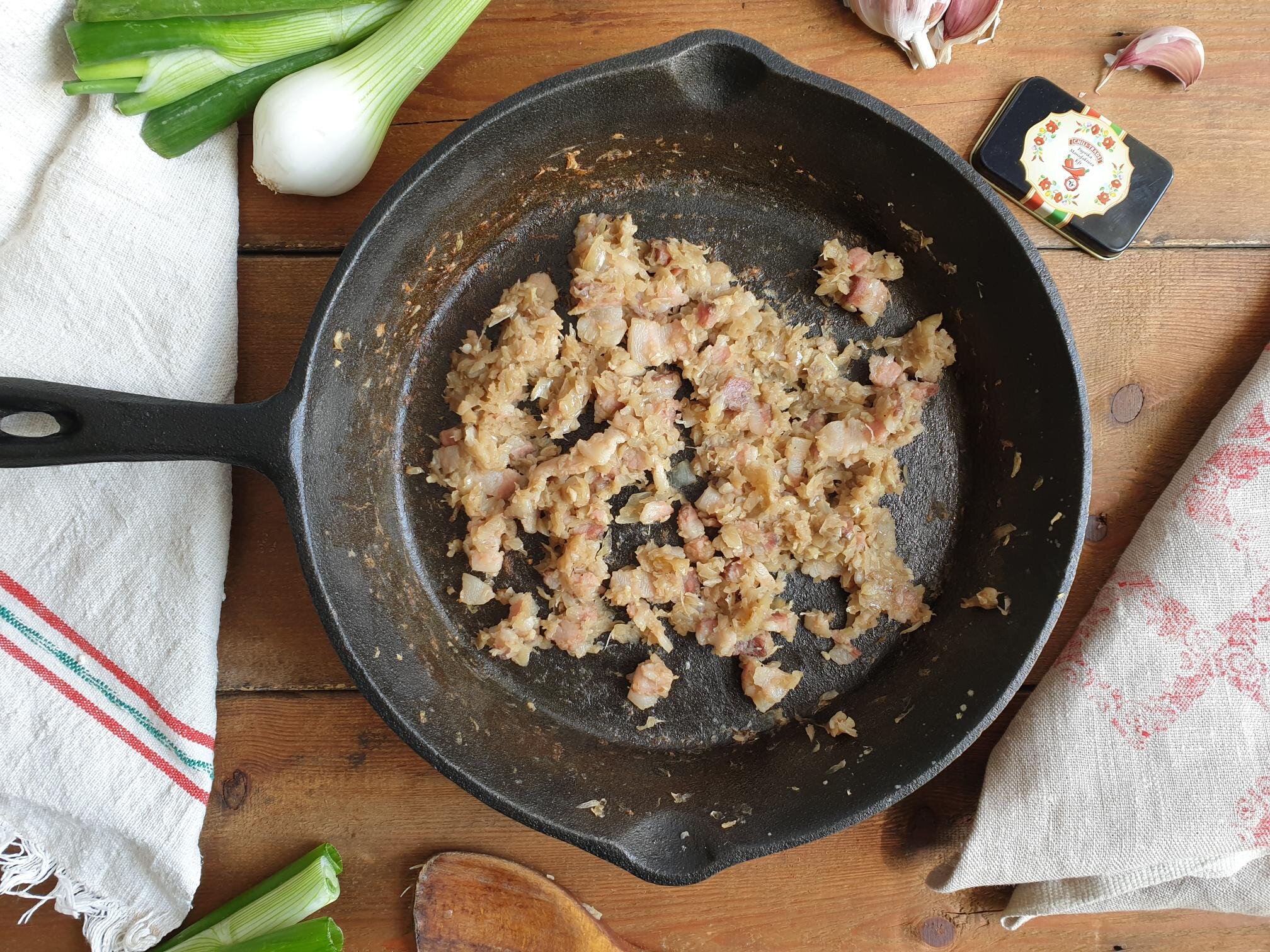Dry-Cured Ham in Red Wine Sauce Istrian Recipe
This simple, uncomplicated and humble peasant dish must be one of the quickest and easiest recipes ever. You will only need three ingredients to make it, olive oil, red wine and some kind of dry-cured meat, and a couple of minutes to spare to cook it.The recipe originated in the Slovenian region of Karst, and it was prepared in the olden days by the housewives for their husbands upon their return home hungry after working all day in the fields and with the animals, and needed a quick and filling meal.
This dish was cooked using the ingredients that were exclusively homemade, types of dry cured meats changed according to what was available in the households.
It is a very much-loved simple dish that can be found in this region on the menus in local run family rustic restaurants referred to as Pršut z Refoškom, Pršut z vinom or Teranov toč (word vino meaning wine, and Refošk and Teran are the two typical full bodied red wines produced in the Karst region).
It is usually made with Kraški Pršut, a dry-cured non-smoked ham from the Kras (Karst) region in Slovenia, with a Protected Geographical Indication (PGI). This region is blessed with a continuous breeze and relatively low humidity, creating perfect conditions for drying meat, a strong tradition that has been kept alive among local people since the earliest settlements.
This is how a well renowned and famous Slovenian polymath John Weikhard Freiherr von Valvasor described in 1689 the Karst region and the traditions of its humble culinary customs.
This good people help
themselves as they can live
poorly: they are very happy if they
have a piece of pork fat (which they can digest due to their
ardours work), onion, and a
piece of plain, coarse, brown,
rolled bran bread.
I am sharing here a family recipe for this unique recipe that travel only a few kilometres from inland Karst region to the Slovenian Istrian coast, where it became part of local repertoire of recipes.
Recipe
Ingredients
Serves 4 as a starter
1 Tbsp extra virgin olive oil or olive oil
10 thinly sliced dry-cured ham (you can use dry-cured sausage like Italian salami or French Saucisson for example)
100ml full-bodied red wine
knob of unsalted butter, optional
black pepper, optional
fresh flat leaf parsley, chopped, optional
Method
Put the olive oil in a fairly large frying pan and heat it up a bit.
Place the slices of dry-cured ham in a frying pan and cook them on a medium heat very briefly, just until they change the colour, it will literally take seconds.
Then pour the wine and cook for further a minute or two, or until the alcohol evaporates and the sauce thickens slightly. When it is cooked you can add a knob of butter if you wish to make the sauce creamier and richer.
Season with some black pepper if you wish, however, there is no need to season this dish with additional sea salt as dry-cured ham is already naturally quite salty.
Serve immediately hot or warm with slices of rustic bread or on a bed of soft, cooked polenta.
Just a thought
This dish is best eaten immediately after it has been prepared, and it is not suitable for freezing.

